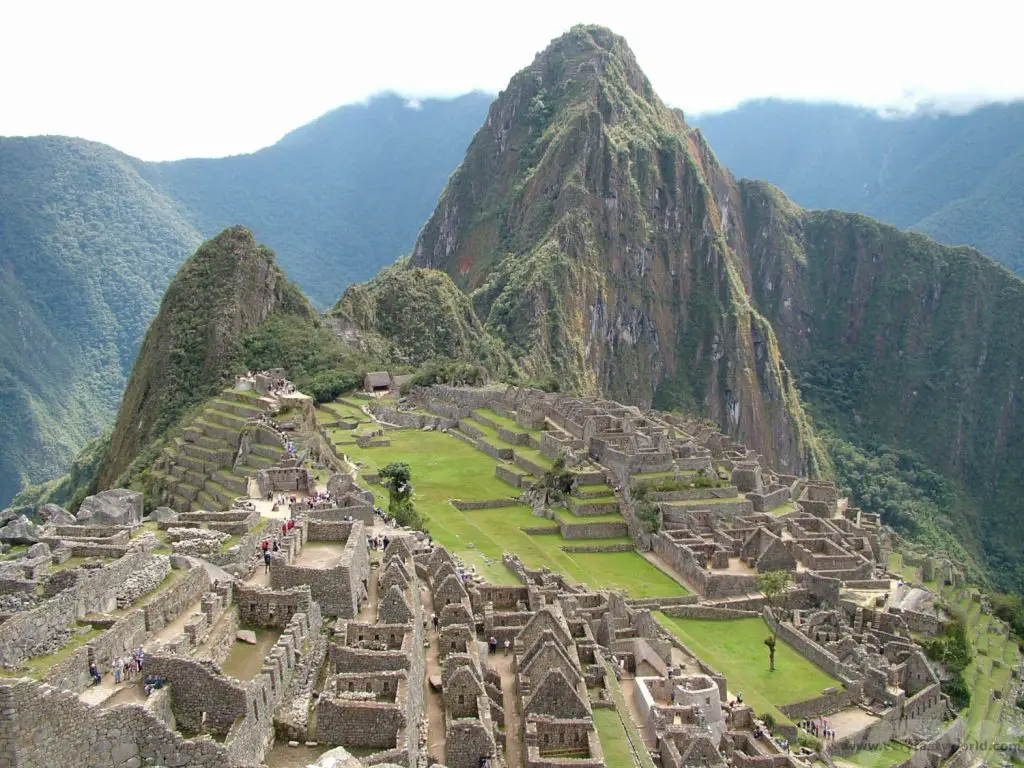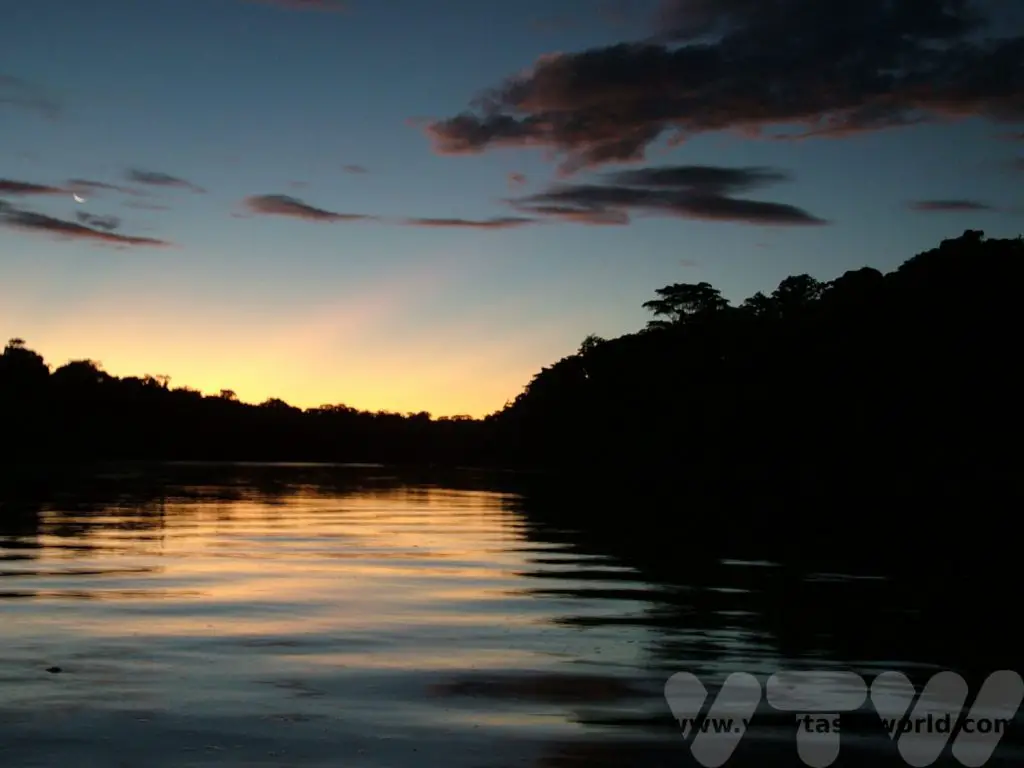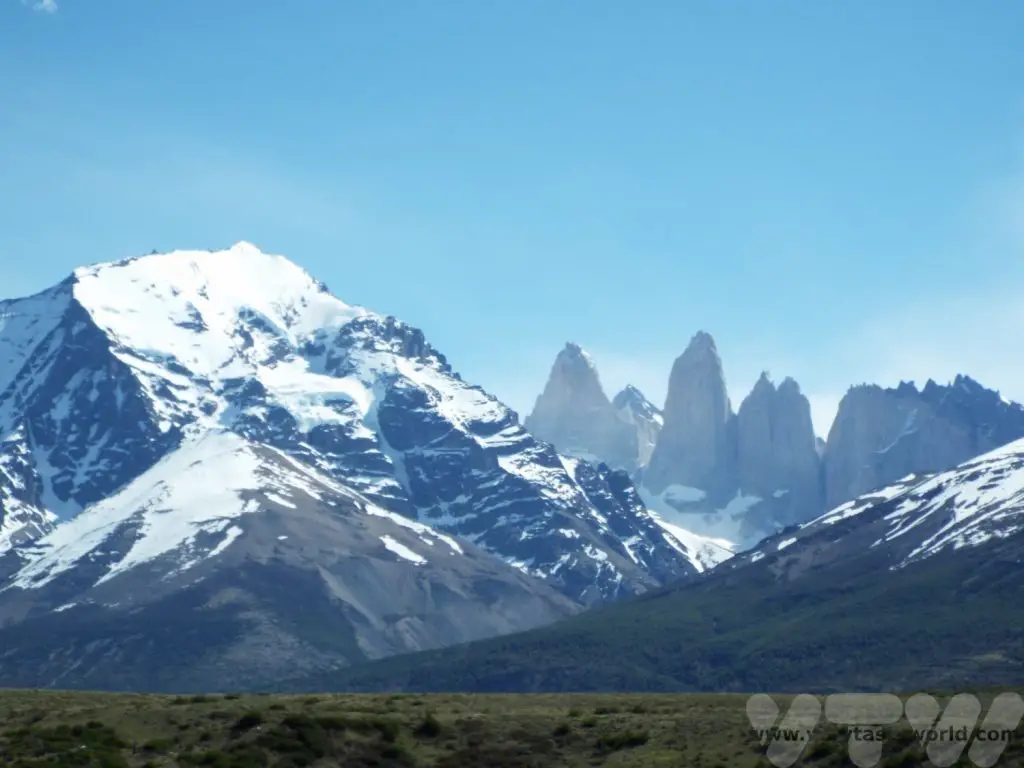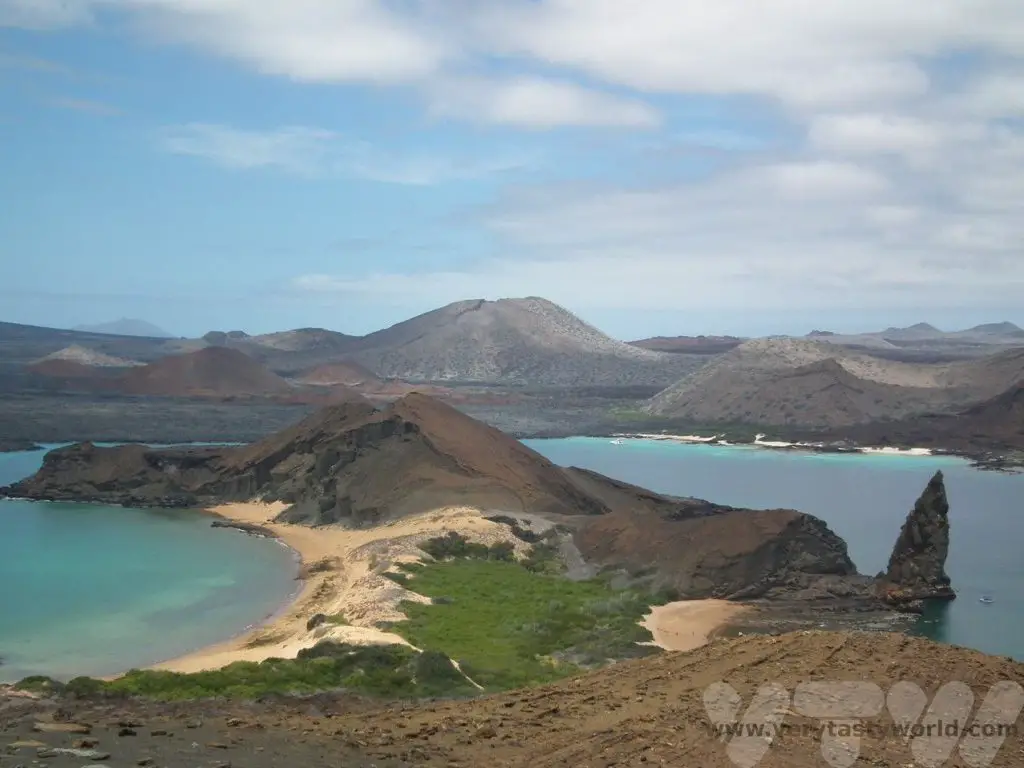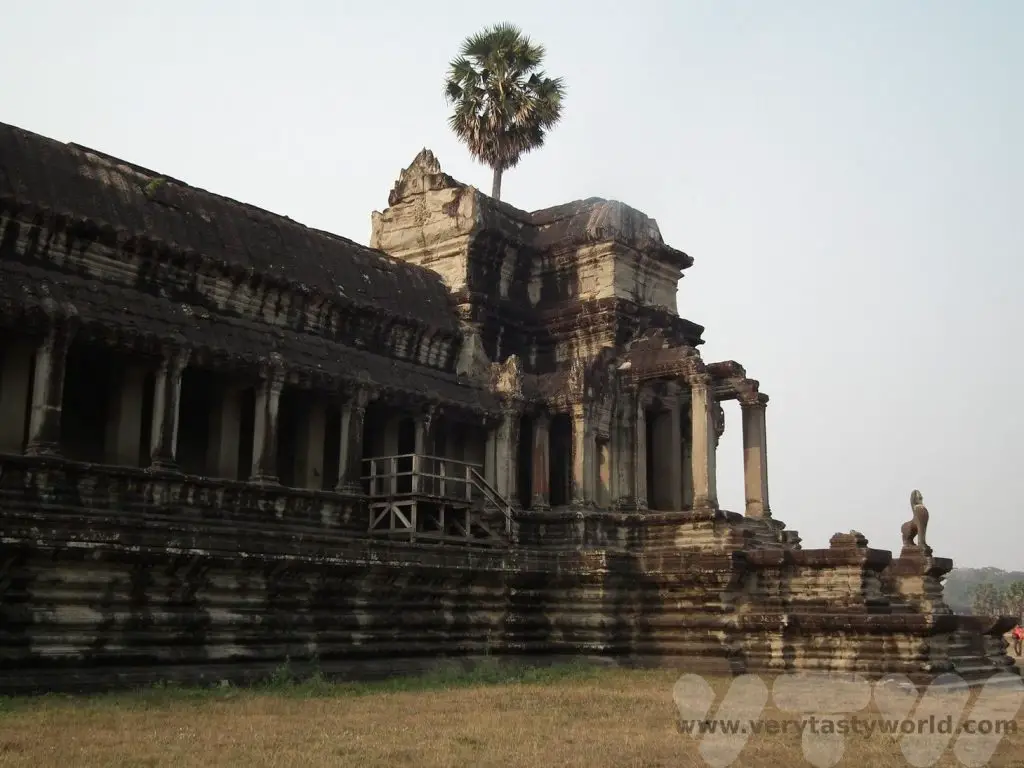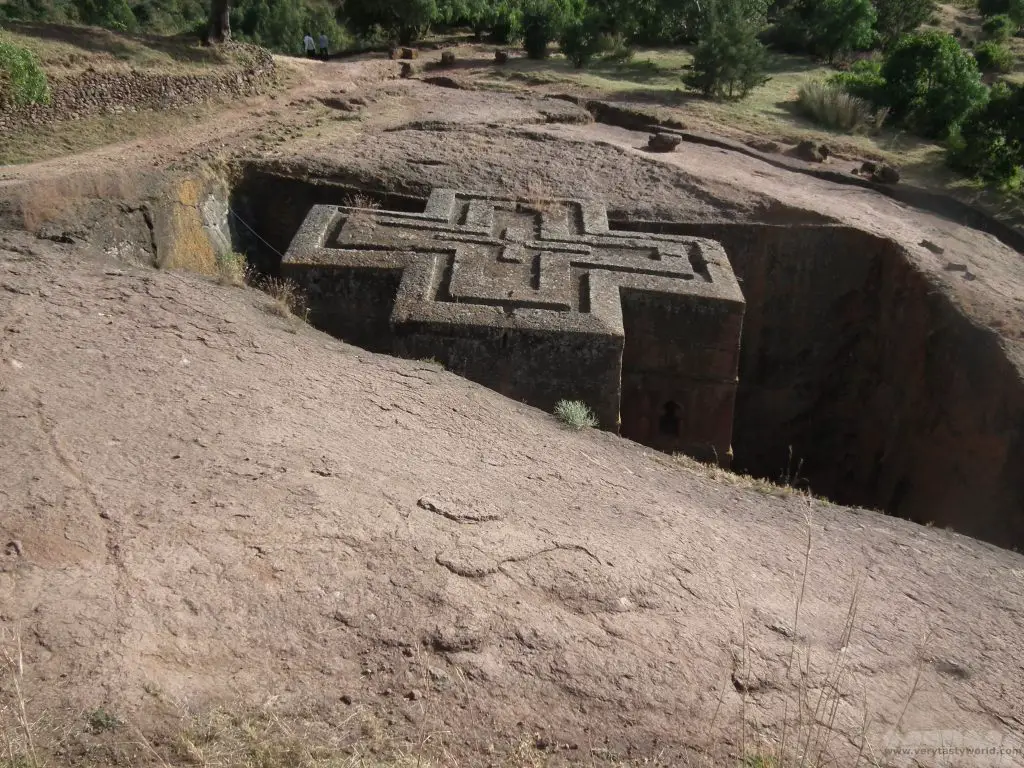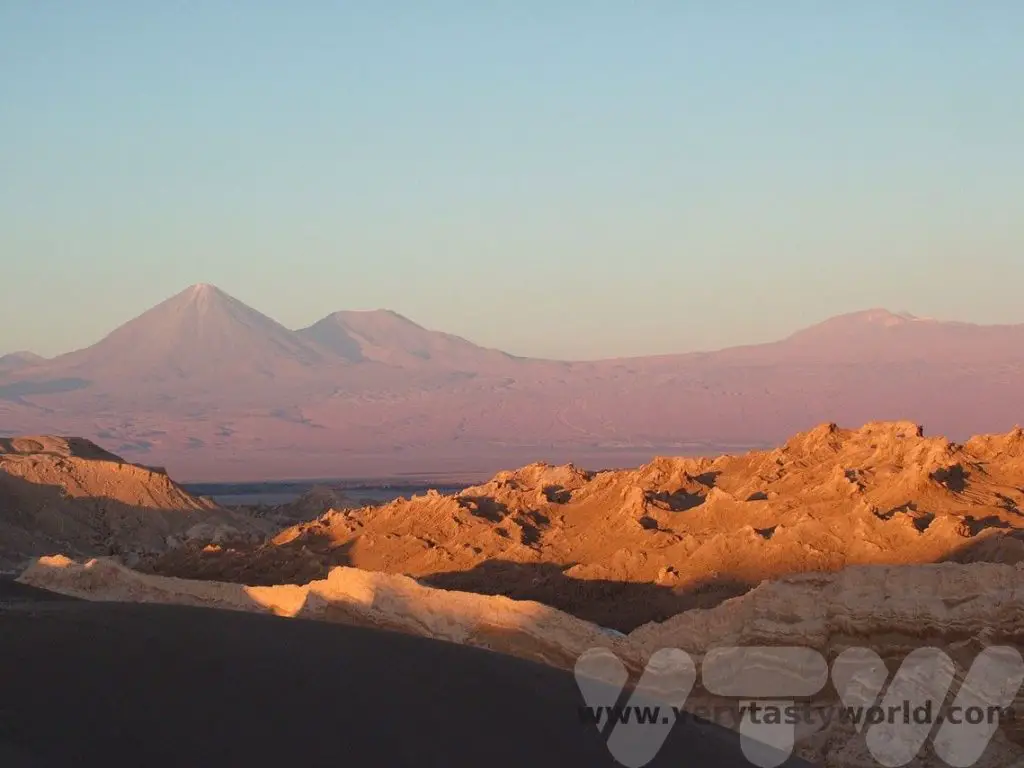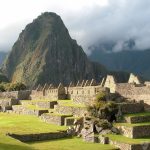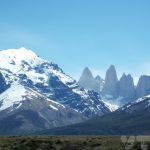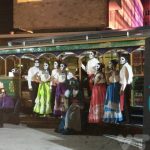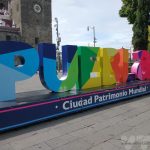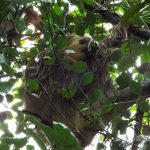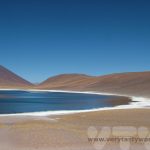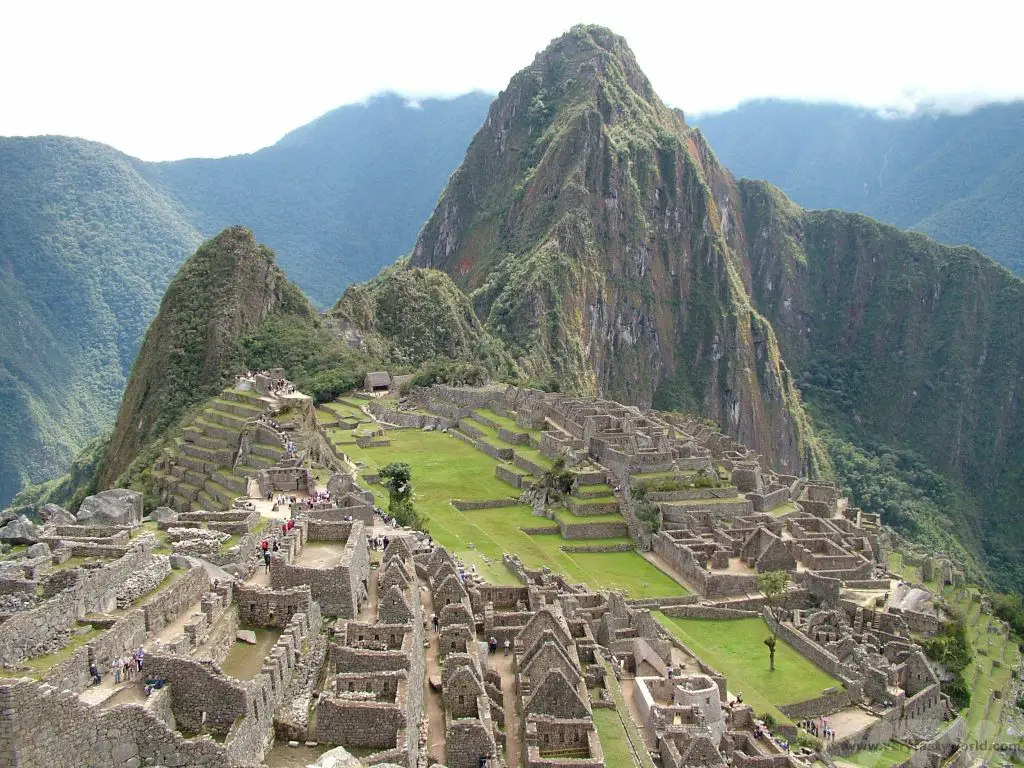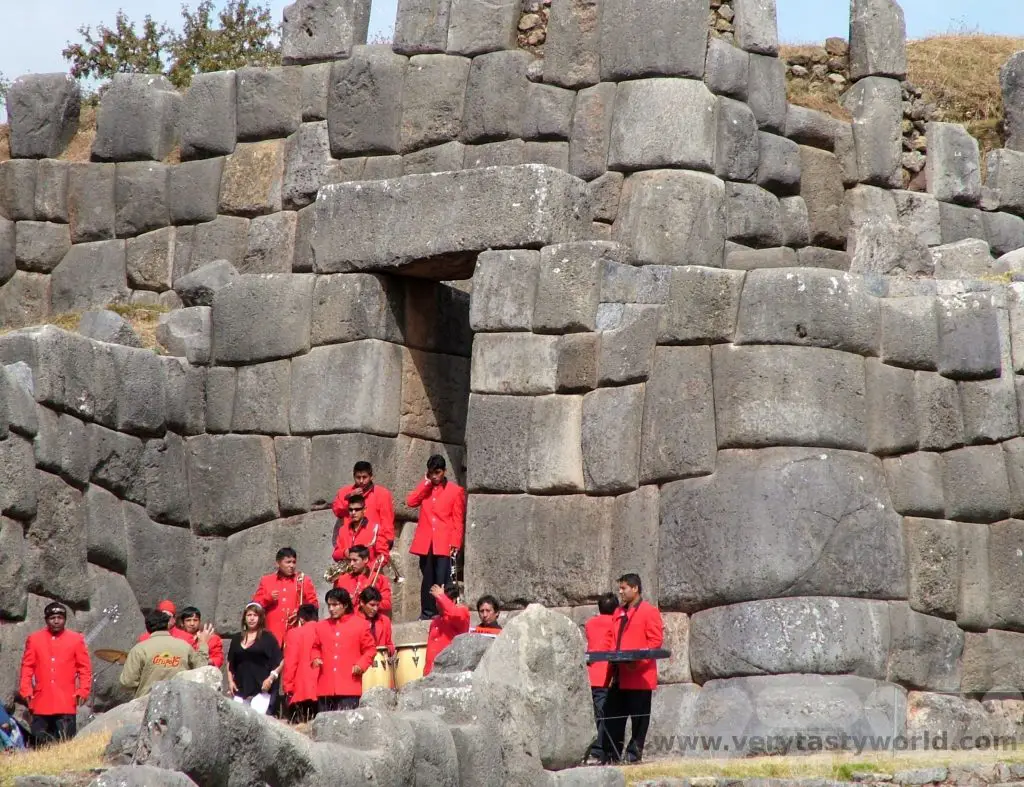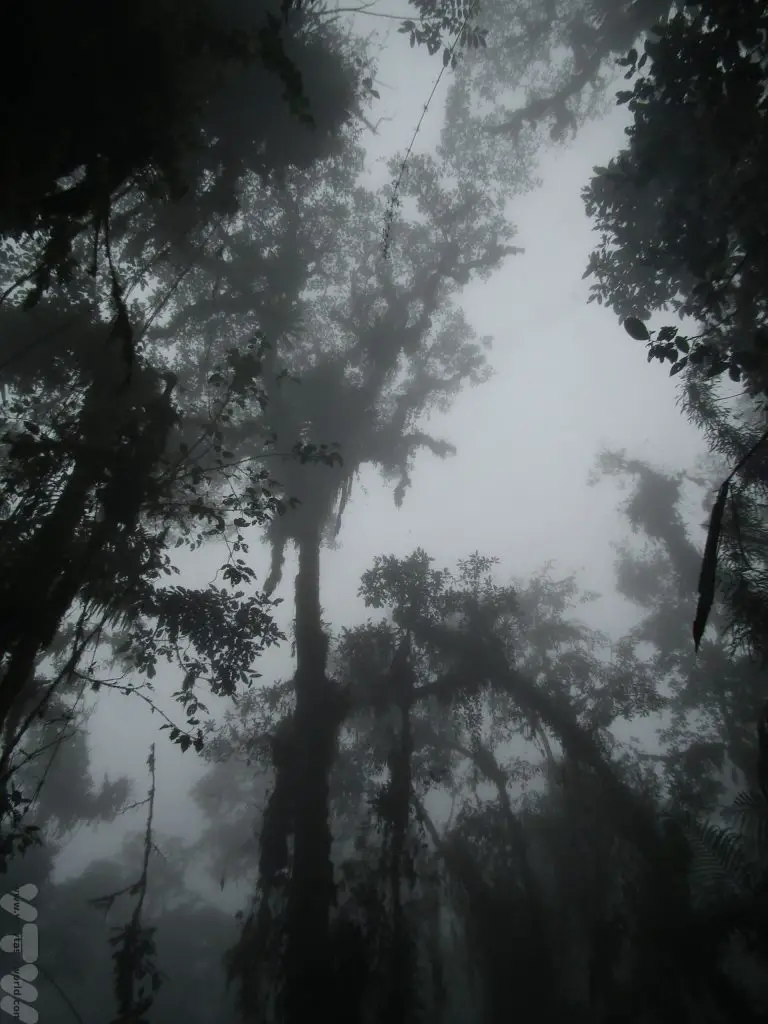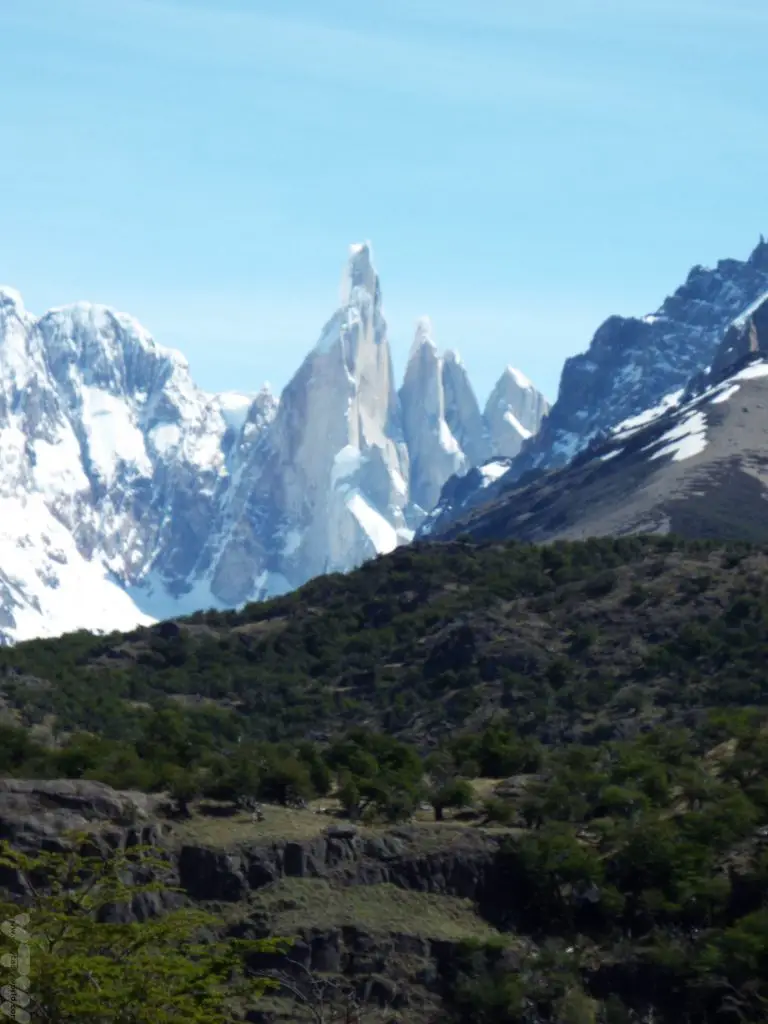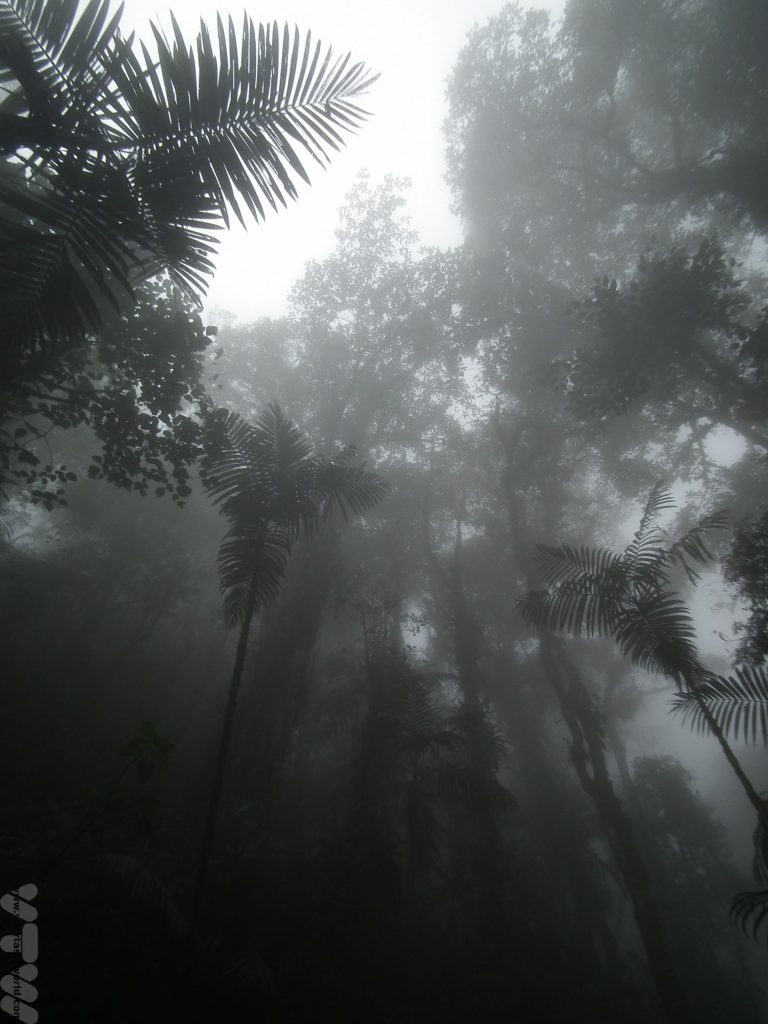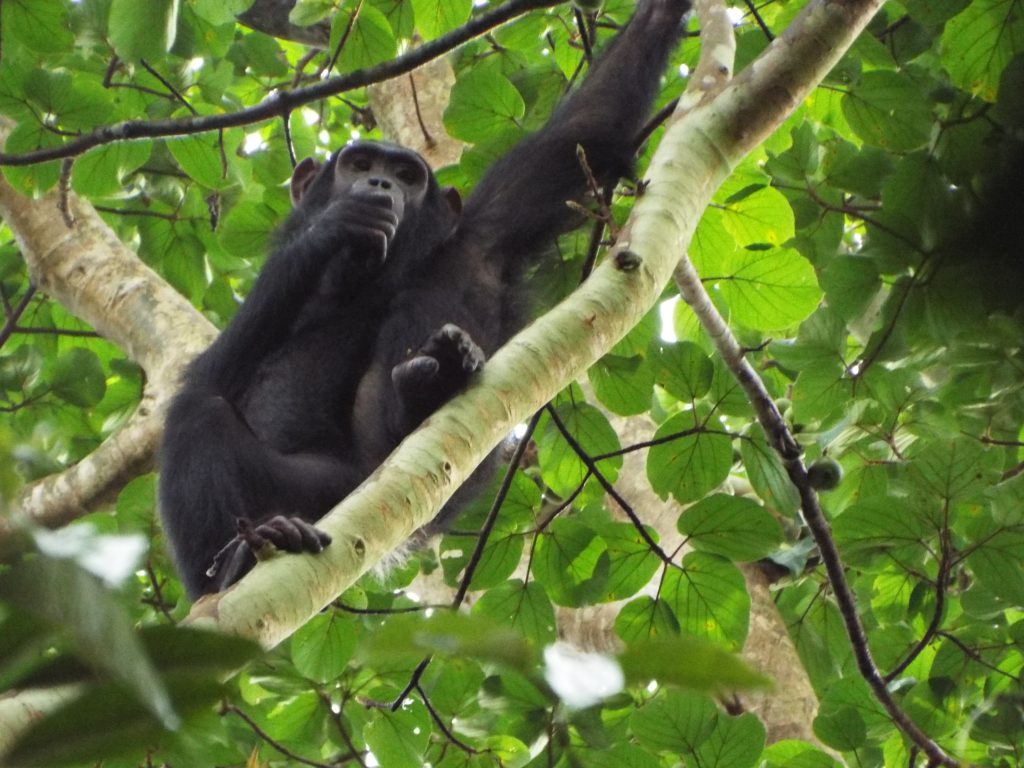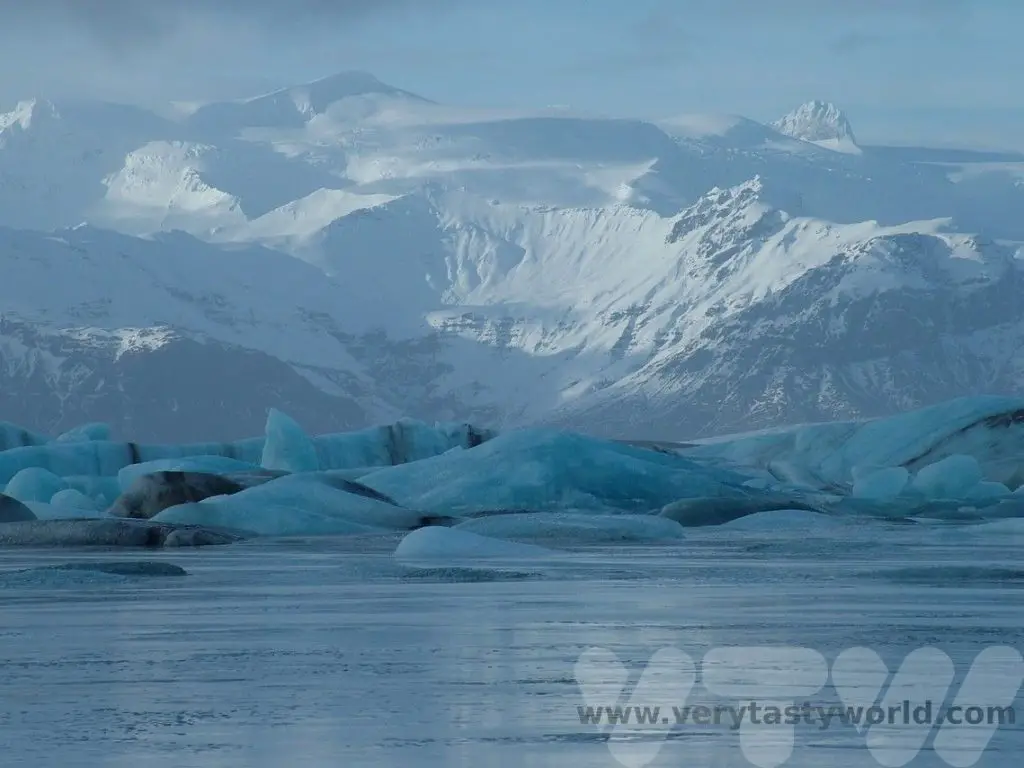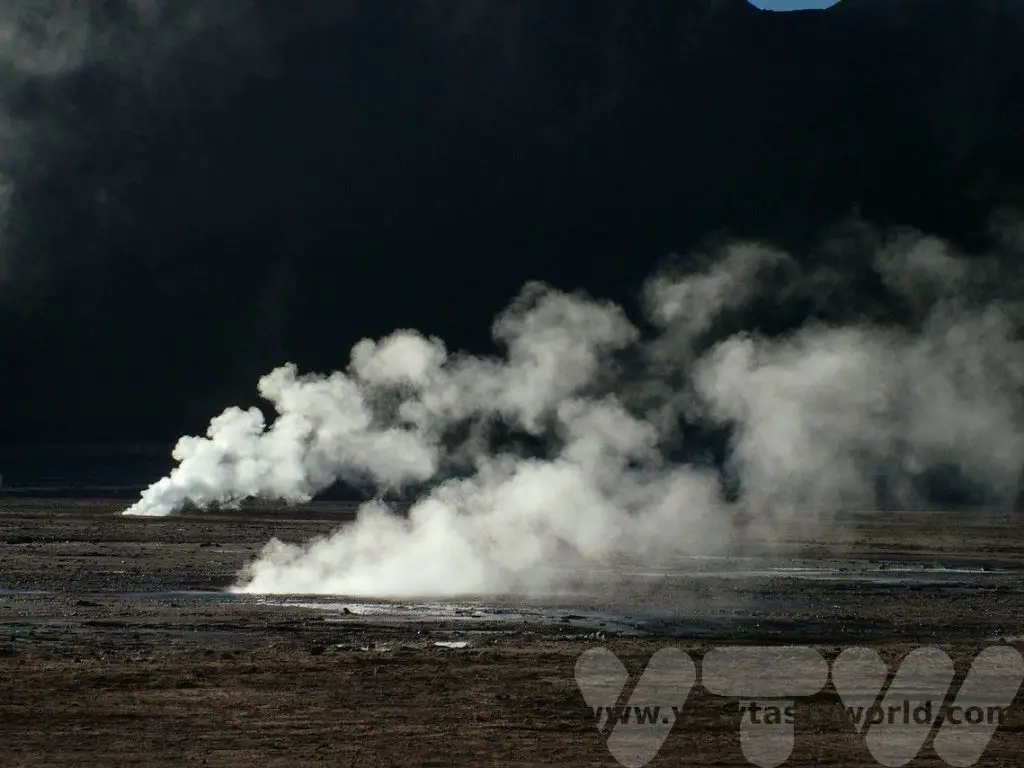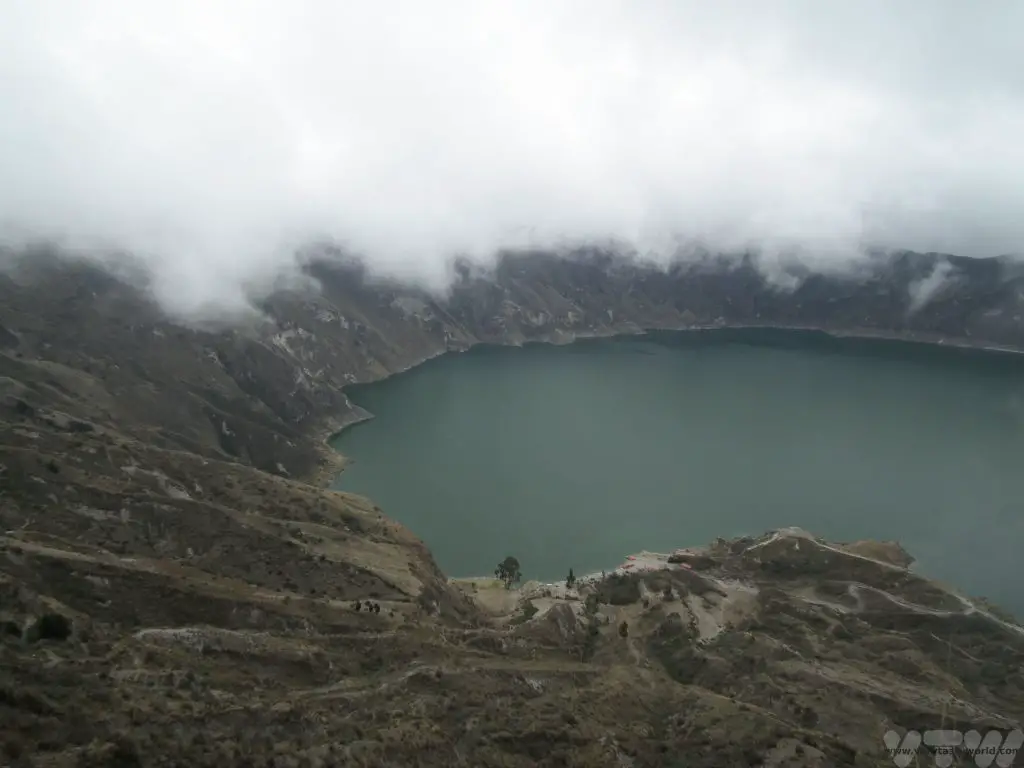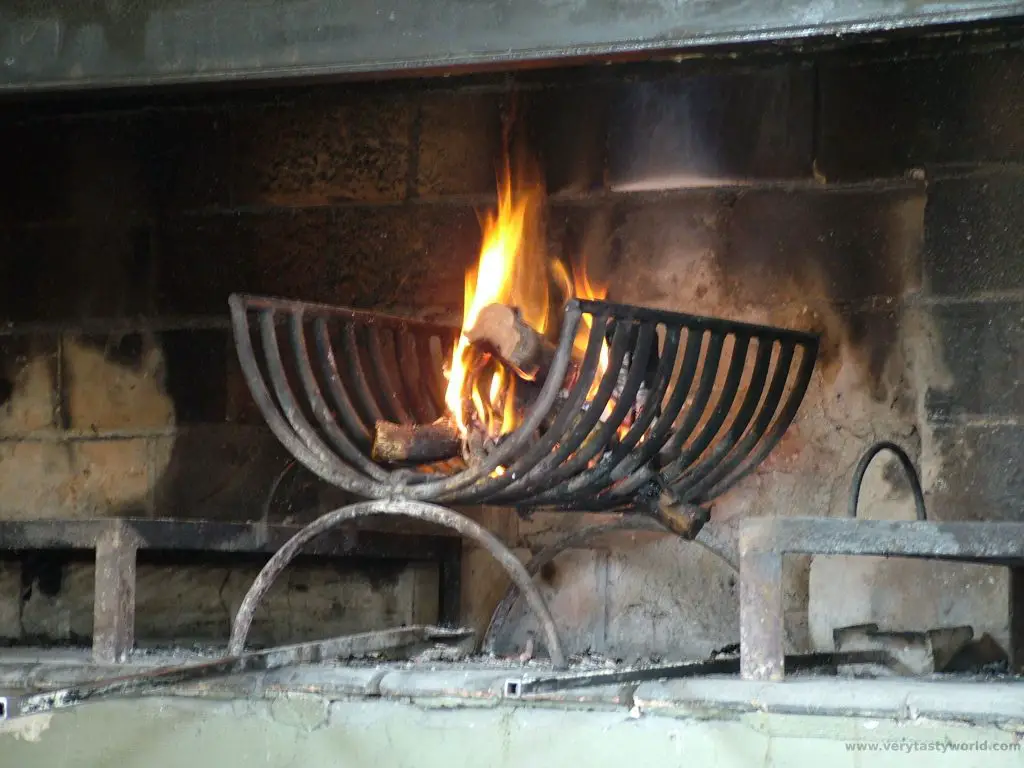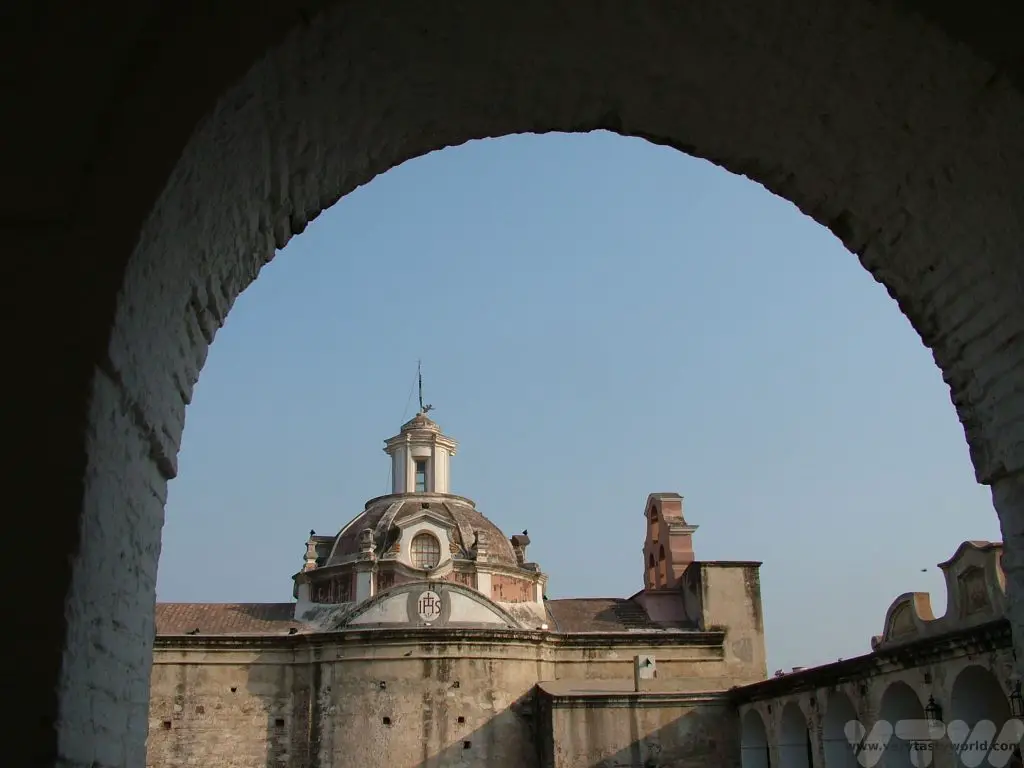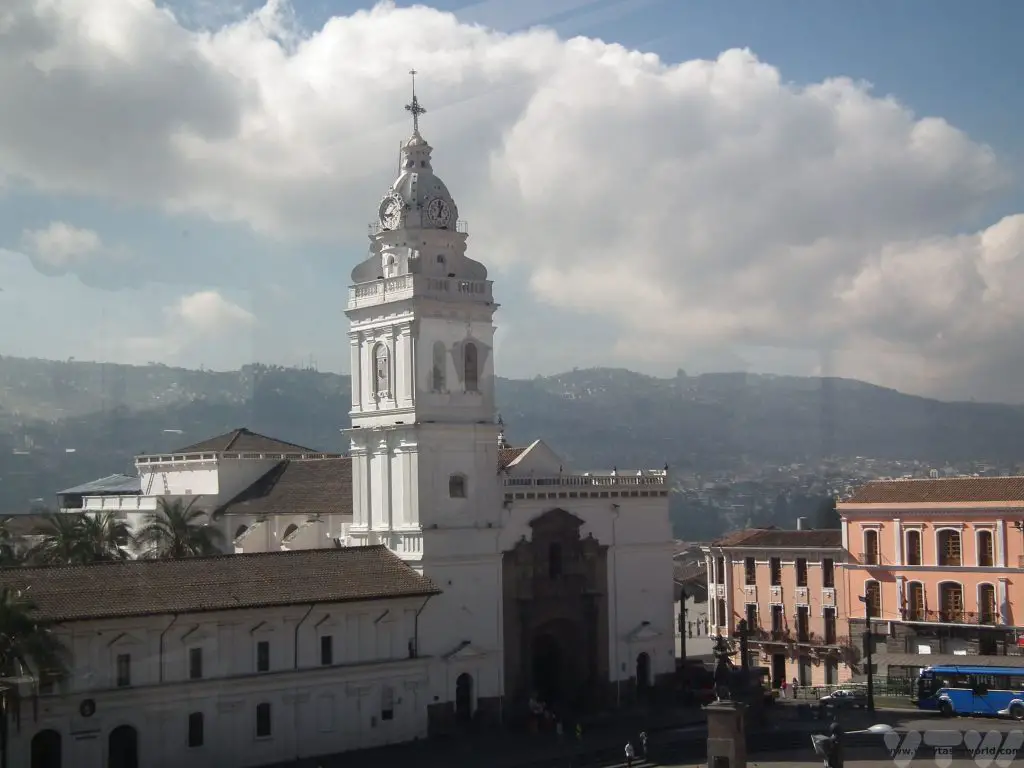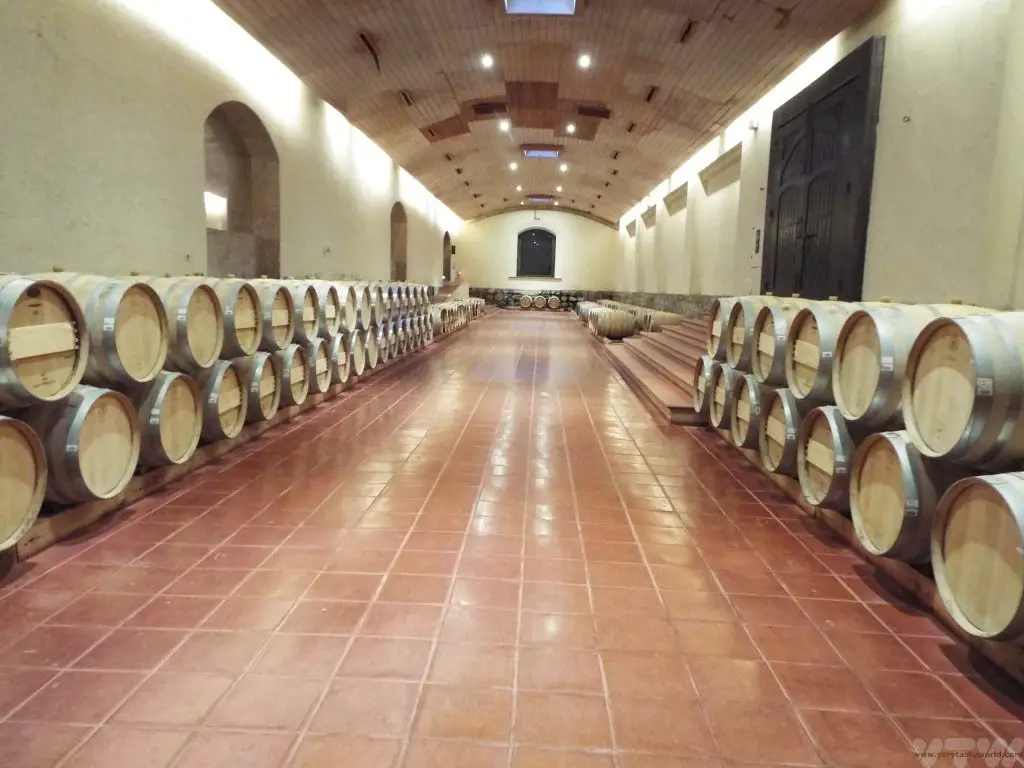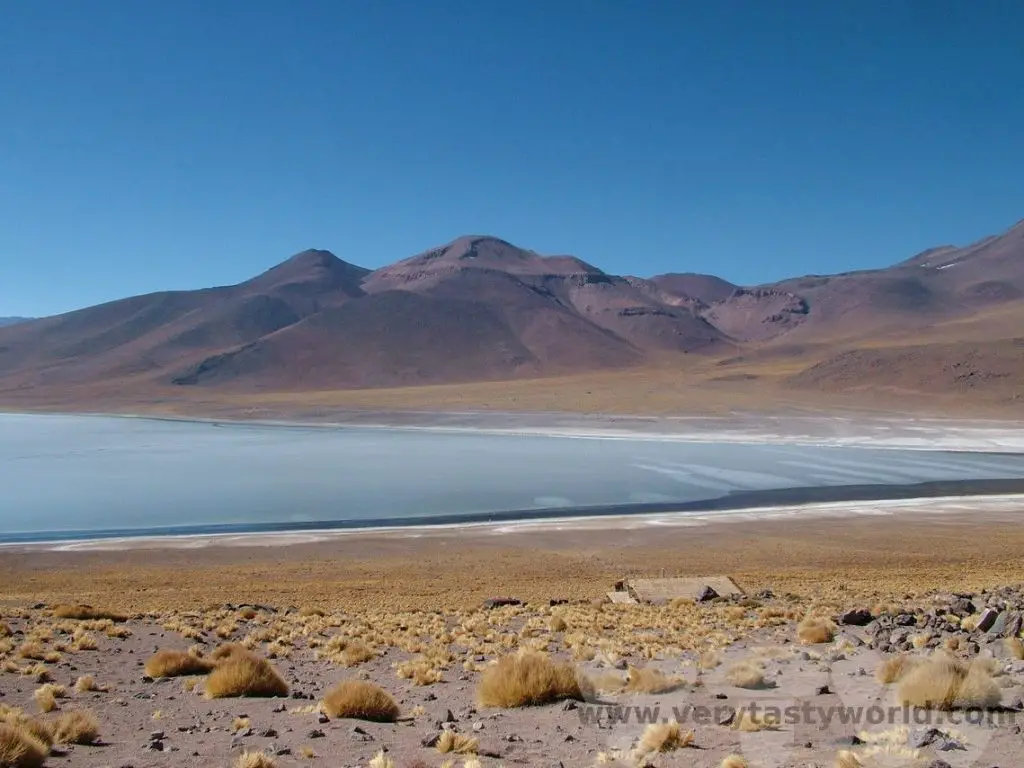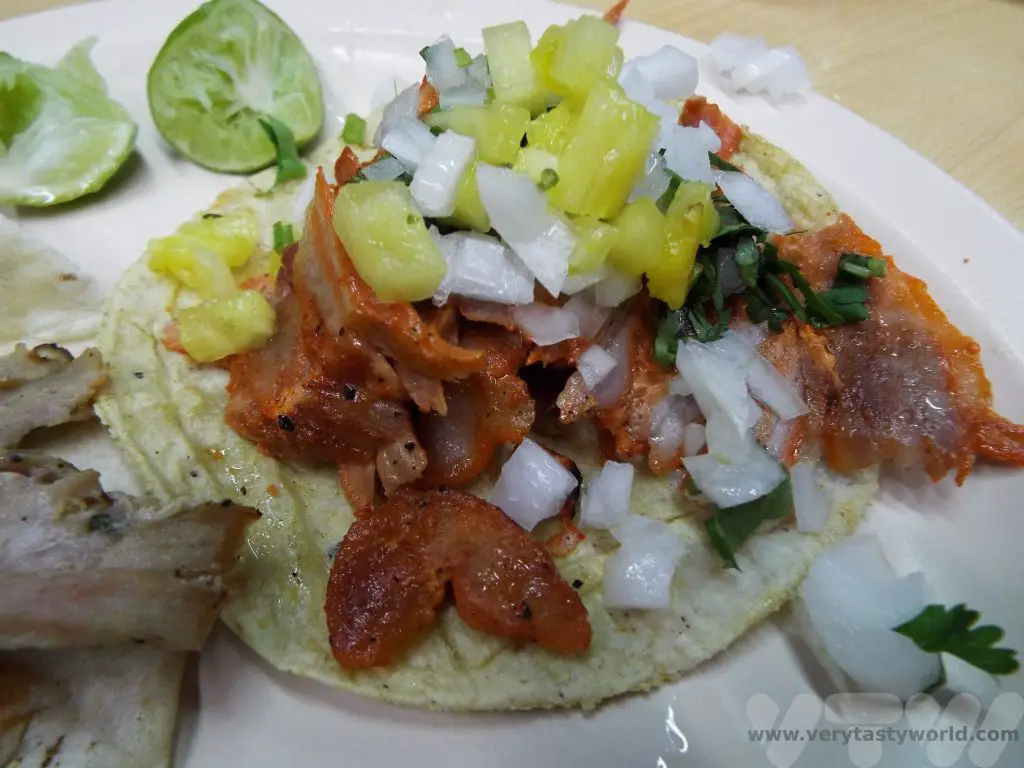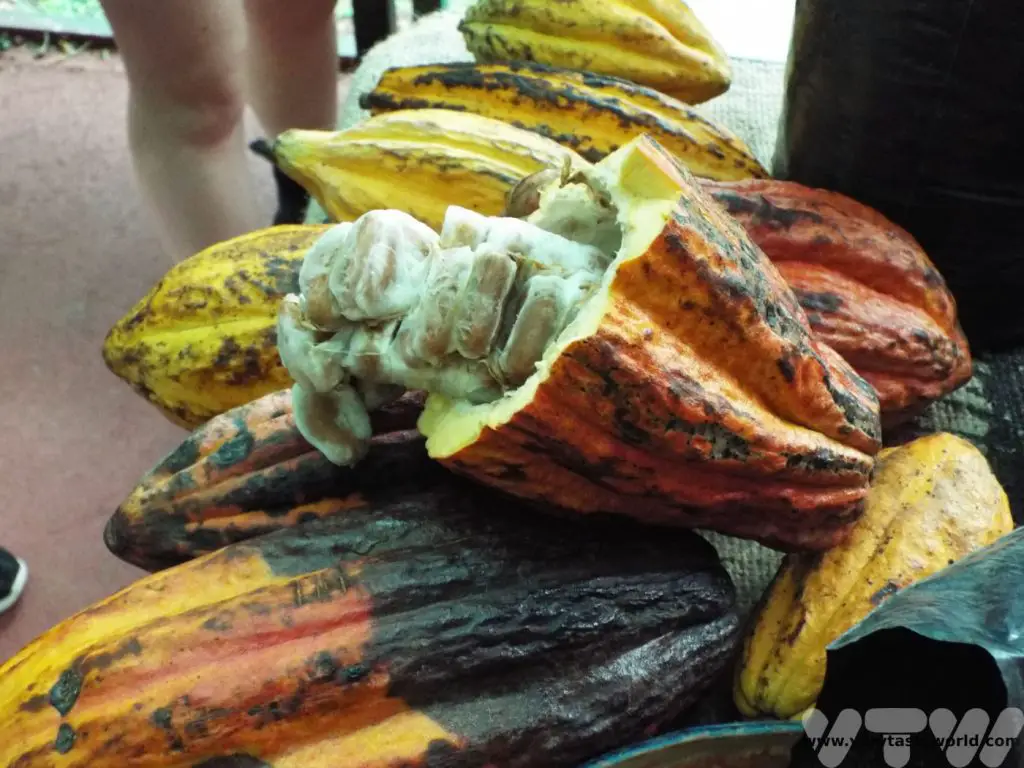Sacred Valley Highlights to Explore in Peru
The Sacred Valley of the Incas describes the 100 km corridor between the Andean city of Cusco, the ancient capital of the Inca empire, and the remarkable citadel of Machu Picchu. While Machu Picchu is undeniably the main attraction, there are so many other sites to visit. Here is a guide to some of the other Sacred Valley highlights to explore while you are visiting the area.
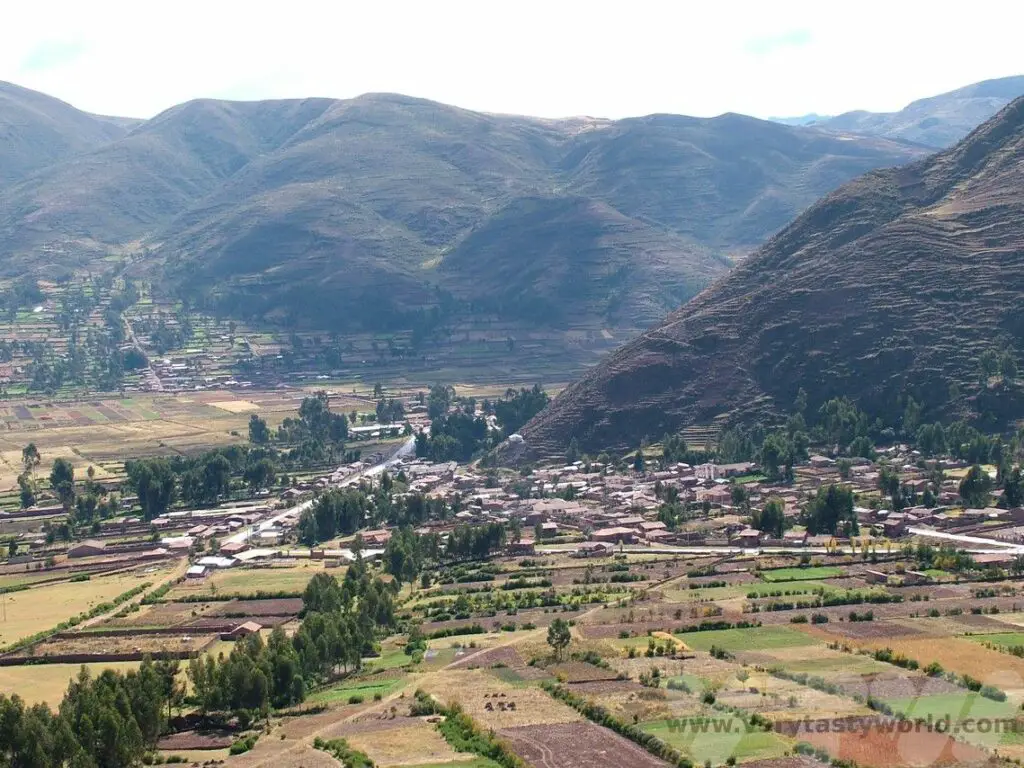
Please note that this post contains affiliate links. If you click through and decide to make a purchase we will earn a small commission, at no extra cost to you, which will help towards the costs of running this site.
Getting to the Sacred Valley
Most people fly into Cusco. Flights are available from all over Peru, notably its capital Lima, but also from other regions. We flew in from Puerto Maldonado having visited the Peruvian jungle some days previously. One thing to note is that Cusco is at an altitude of 3400m and if you are flying in from sea level, it is definitely worth spending a couple of relaxing days in the city and surrounds to acclimatise to the altitude.
An alternative route is to catch a bus up to the Andes. It takes around 22 hours from Lima. There are a few advantages to using the bus: it is cheaper, you can enjoy the mountain scenery and also it means that you climb up to the altitude at a more leisurely pace than flying in, which means that you can adjust more slowly.
Sacred Valley Highlights
Cusco
Cusco is the main city in the region and the most popular location to use as a base for exploring the Sacred Valley. The city was occupied by the Killke people from roughly 900CE until the arrival of the Inca in the 13th century.
It was to become the capital of the Inca Empire meaning that Cusco was, in its time, the most important city in South America. Cusco grew from a small village to a vast city thanks to Pachacuti Inca Yupanqui, who expanded the Inca Empire to cover a huge area of the South American continent. It is believed that Machu Picchu itself was constructed as an estate for Pachacuti.
Cusco’s Centro Historico is a UNESCO world heritage site and, like much of the Sacred Valley, sees colonial architecture blend alongside Inca ruins in a fusion of cultures and history. The main square is located right at the heart of the city centre. There are various shops and restaurants lining the perimeter of the square and it is frequently used for bands, who play concerts, and dance troupes. It’s a lively place where locals and tourists intermingle.
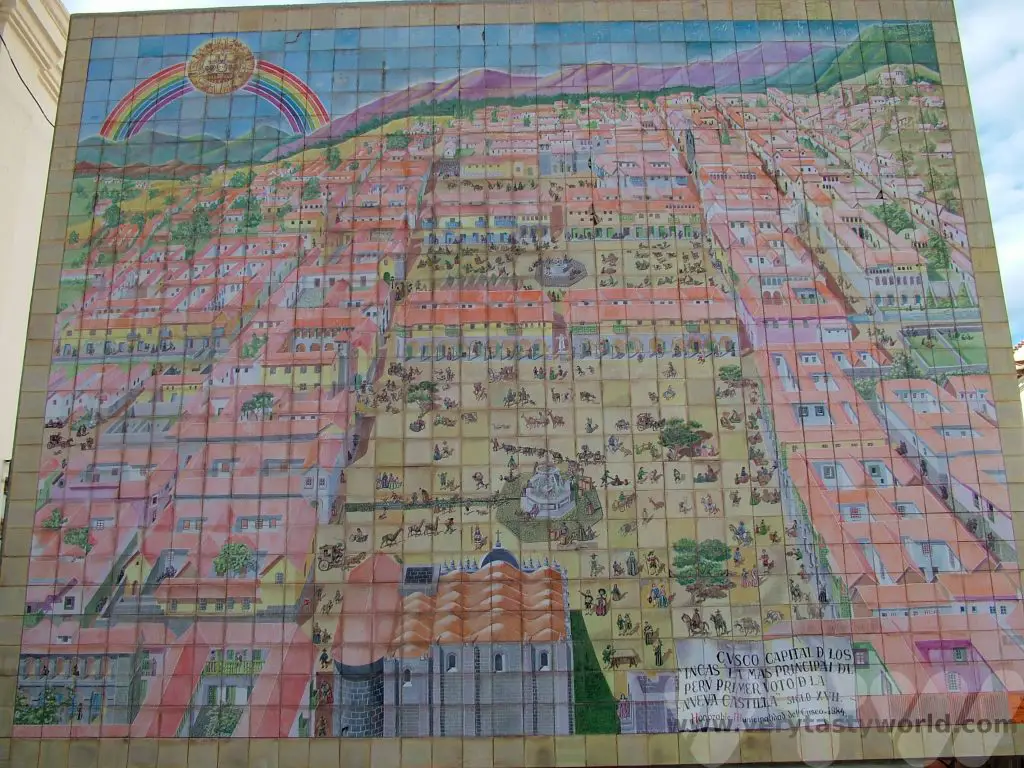
The city’s cathedral located in the north-east corner.
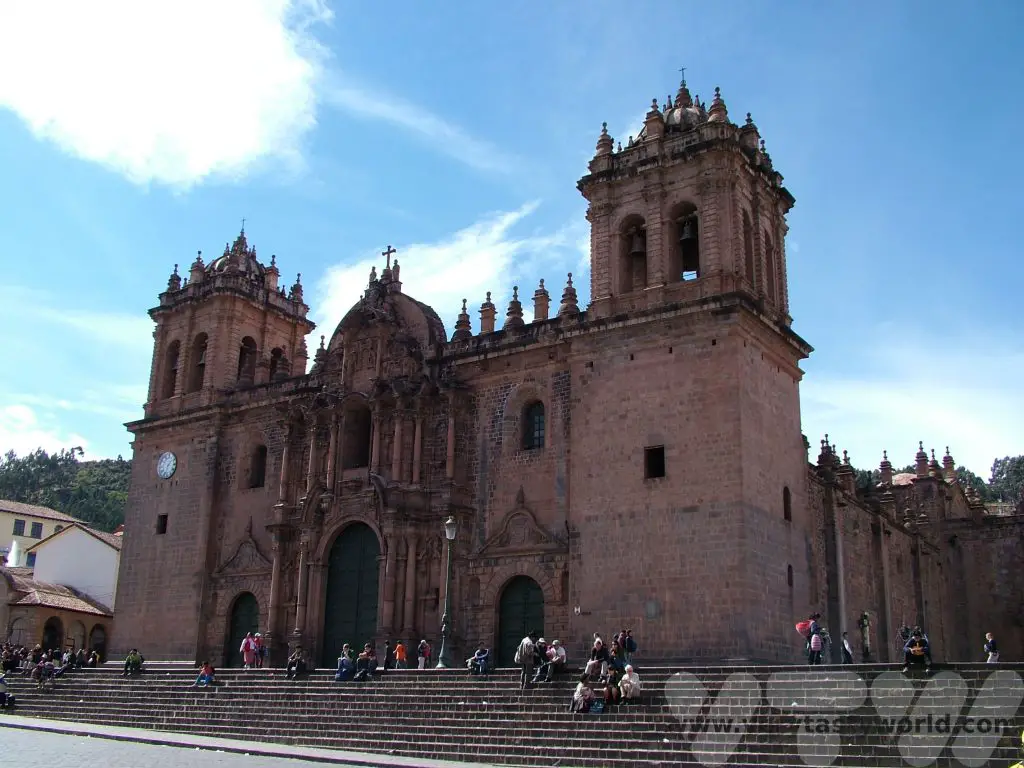
Another church that is of particular interest is the Church of Santo Domingo. It was built directly on top of the most important Inca temple of the region, Coricancha, and hence encapsulates the blending of indigenous and colonial cultures over the centuries.
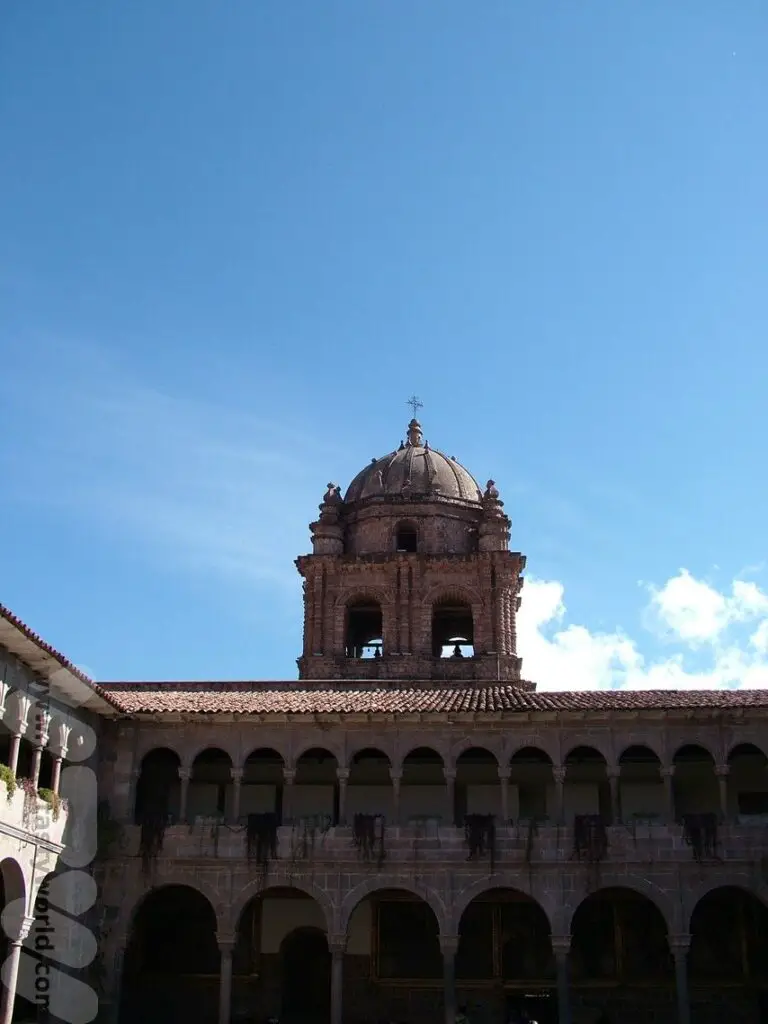
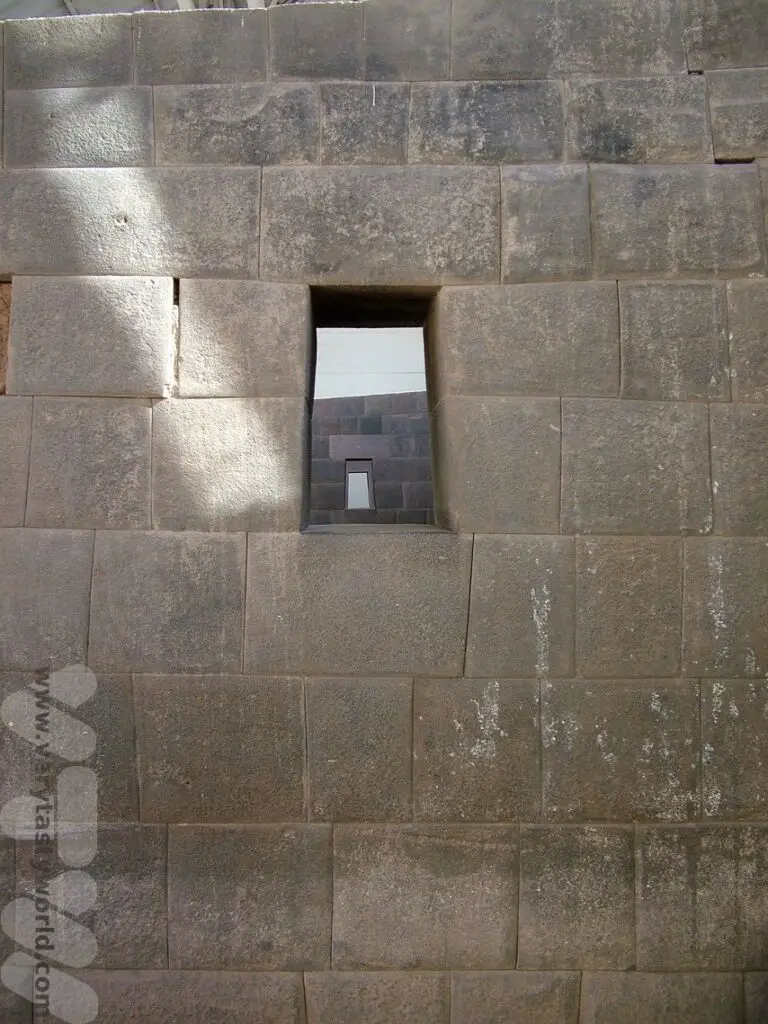
Sacred Valley Sites On The Outskirts of Cusco
There are a number of fascinating Inca sites located very close to Cusco. In fact, they are so close you could even walk to some of them if you were feeling energetic. Some are further out (up to 8km), so we recommend either booking a half-day tour with a local company, which would include a visit to all the sites, or getting a taxi, a bus or colectivo (a van/minibus that runs a particular route on no particular schedule – you usually go when the vehicle is full). You can buy a ticket that covers entry to Sacsayhuaman, Q’enqo and Tambomachay as well as the fortress of Pucapucara.
Sacsayhuaman
Sacsayhuaman is a dramatic citadel initially established by the Killke and significantly expanded by the Inca, located on a hillside overlooking Cusco.
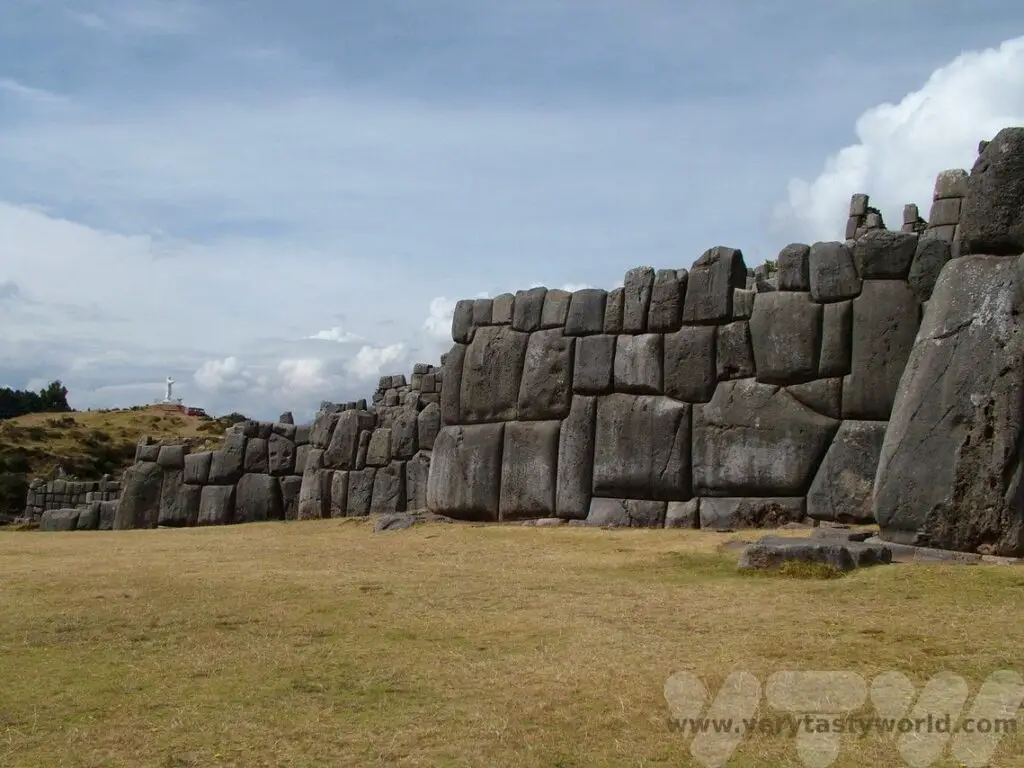
The construction is remarkable, notably the enormous stones that form the terrace wall which is adjacent to the plaza. The tallest parts of the wall reach over 6m in height and the huge stones are apparently packed so tightly that it’s impossible to slip even a single sheet of paper between them.
If you’re lucky you might even get an impromptu concert from a visiting band.
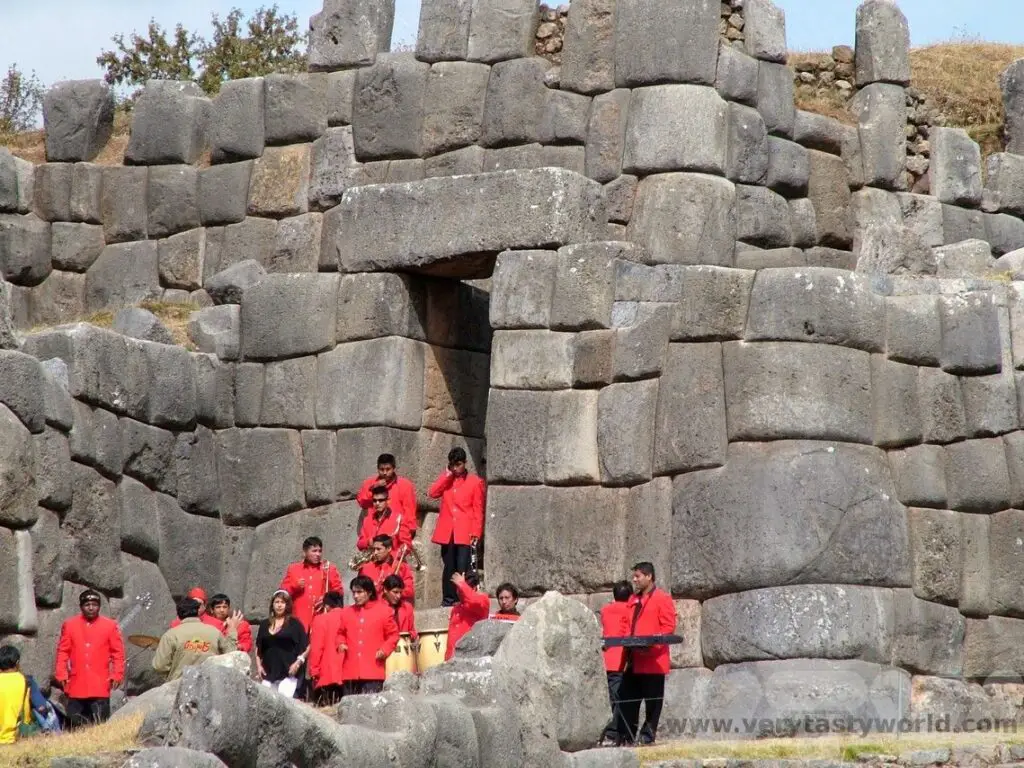
There’s a lovely view of Cusco from the site as well.
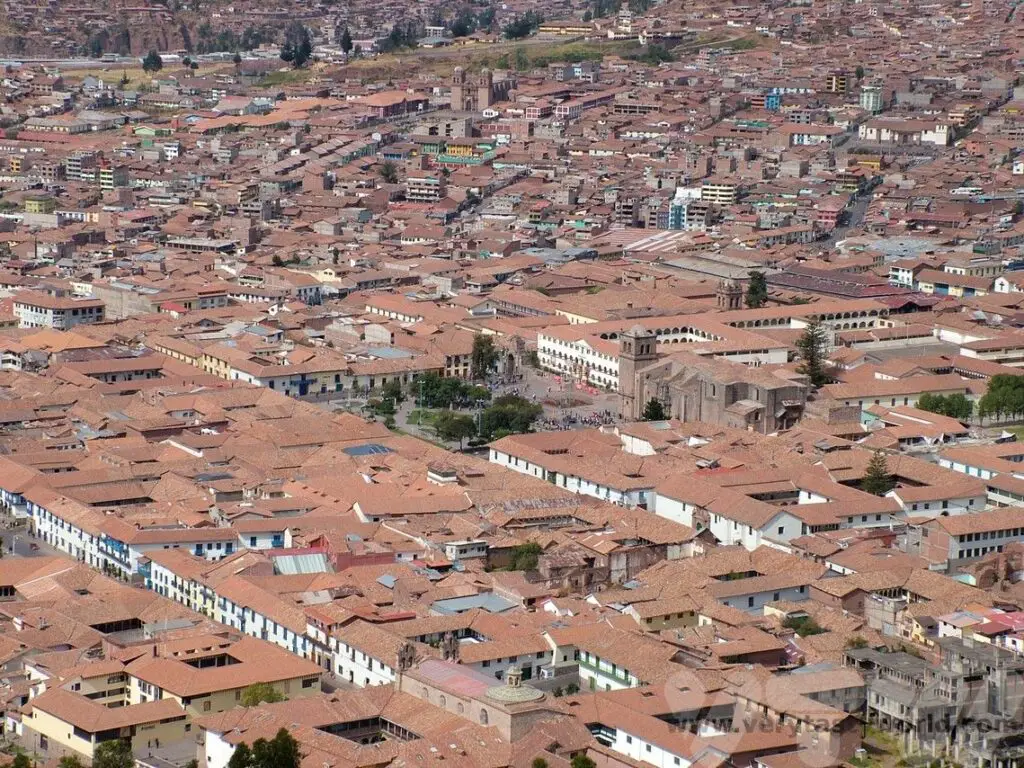
Tambomachay
This fascinating site, located near a number of springs, is comprised of canals and aqueducts that run through the rock terraces and flow into three waterfalls. The purpose of the site isn’t really known but it is thought that it may have been a sort of spa resort for the Incas or possibly a religious site.
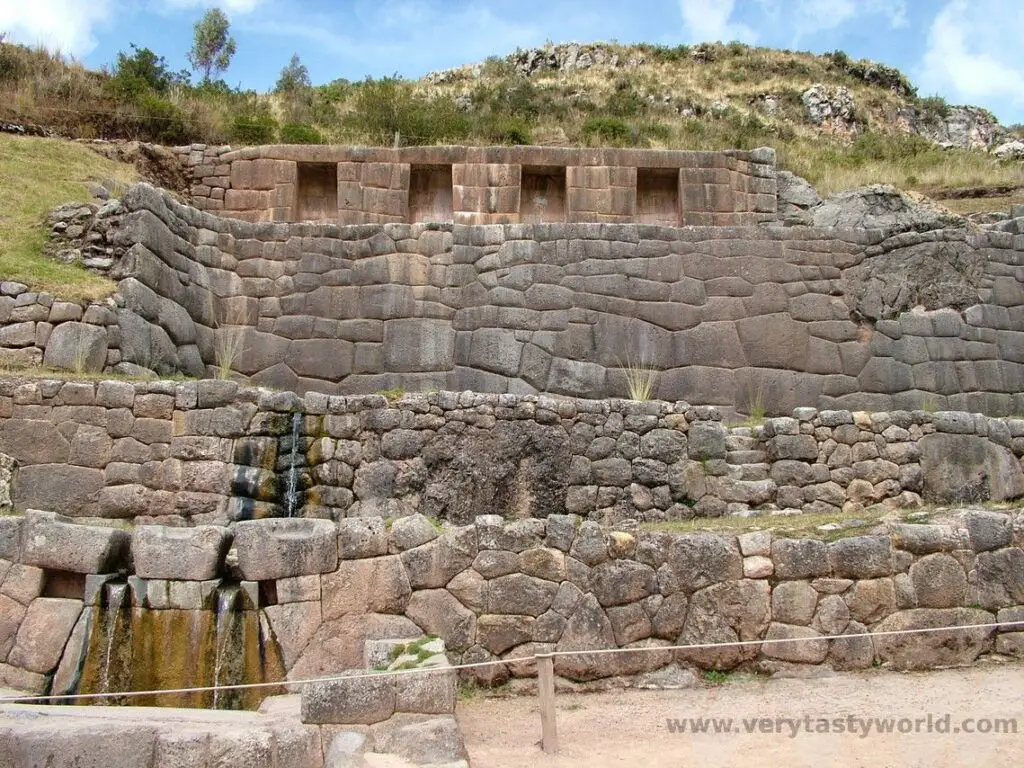
There is a legend that the water has particular qualities that may help those that are follically challenged. Yes, the water is purported to cure baldness! Further along the site, Colin was encouraged to wash his head under the water but, sadly, we can only report that the water’s reputed magical powers did not prevent further balding, nor produce any additional tresses. So it goes…
Q’enqo
This is an archaeological site thought to be a holy place or huacas. Huacas used existing rocks as a site for religious ceremonies. It is thought that sacrifices may have taken place here.
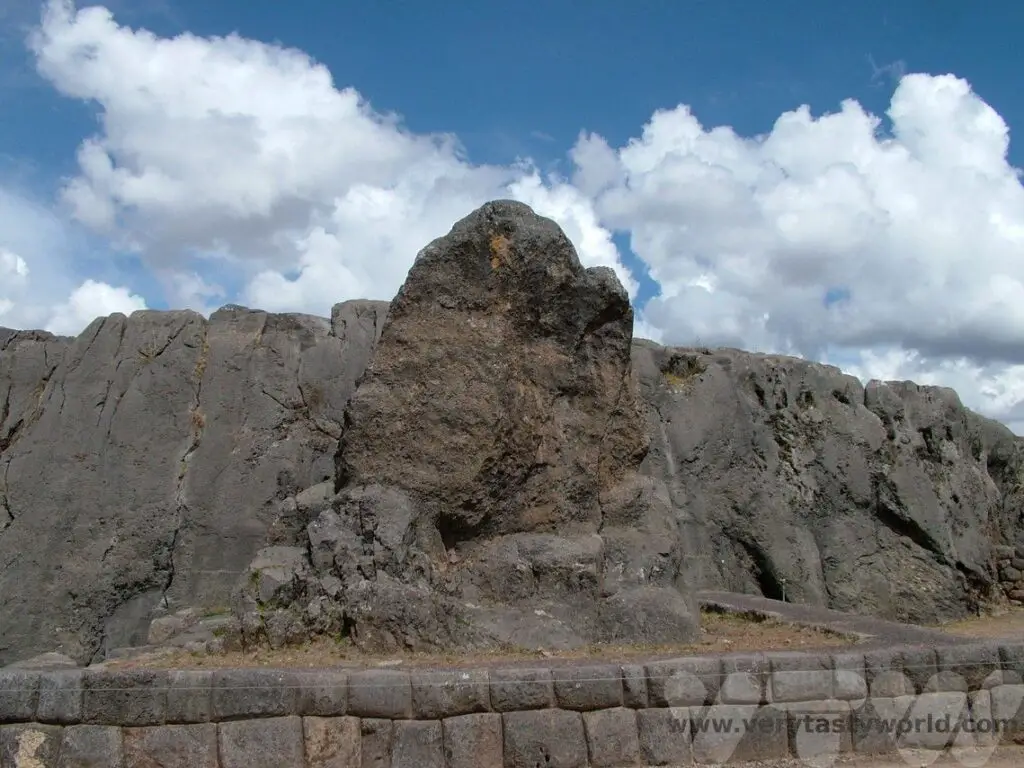
The name Q’enqo is thought to derive from the Inca word for ‘labyrinth’ possibly on account of the winding passages carved into the rock. These include several features such as altars. It’s possible to wiggle inside and explore the carved rock within.
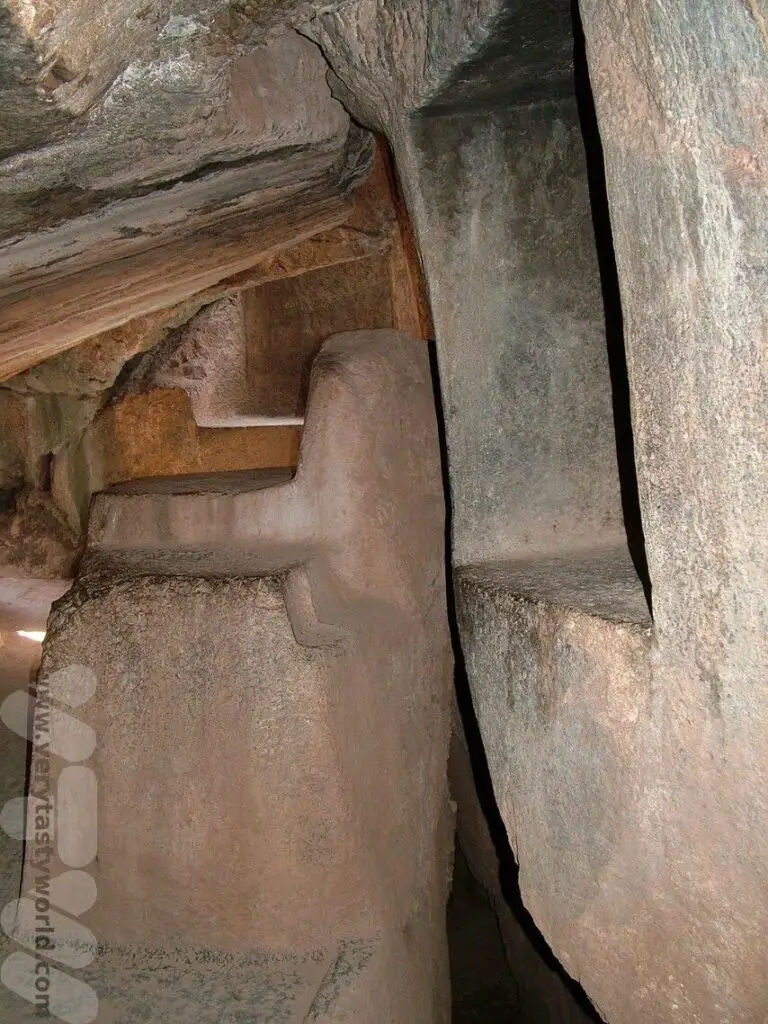
Further Along the Sacred Valley – A Day Trip
Depending on how much time you have, you can explore the Sacred Valley at your leisure. There are various transport options for travelling to the main towns in the region. There are taxis (most expensive), buses and colectivo (cheapest) available in the major towns. If you are short on time there are a number of companies that can offer day trips to the sites across the Sacred Valley. Many will offer a pickup from your hotel. These are usually full day tours and will often start early in the morning.
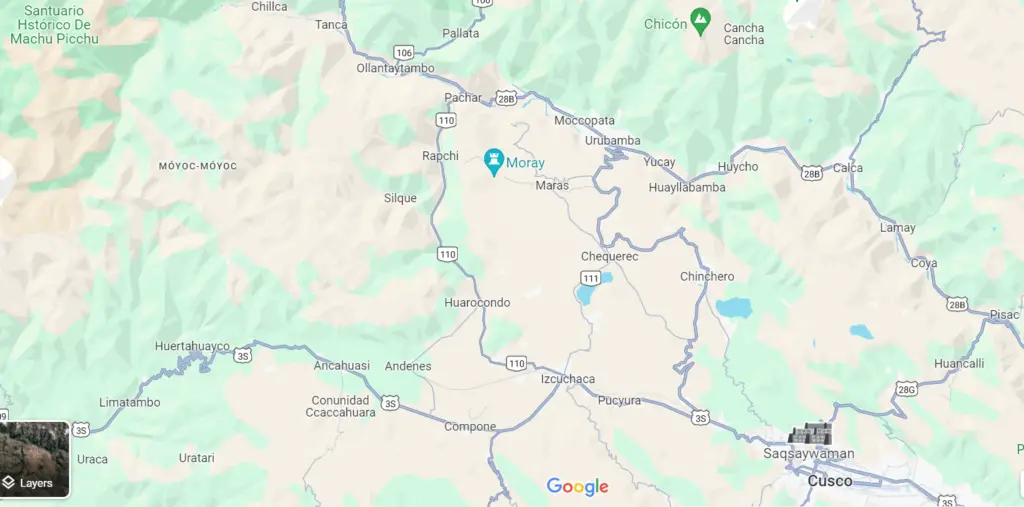
There are many sites to see in a day, so some tours may prioritise some sites or activities over others. For example, some may take you to Pisac’s market but not its Inca ruins. It’s worth shopping around to decide which towns and activities are of most interest to you.
Pisac
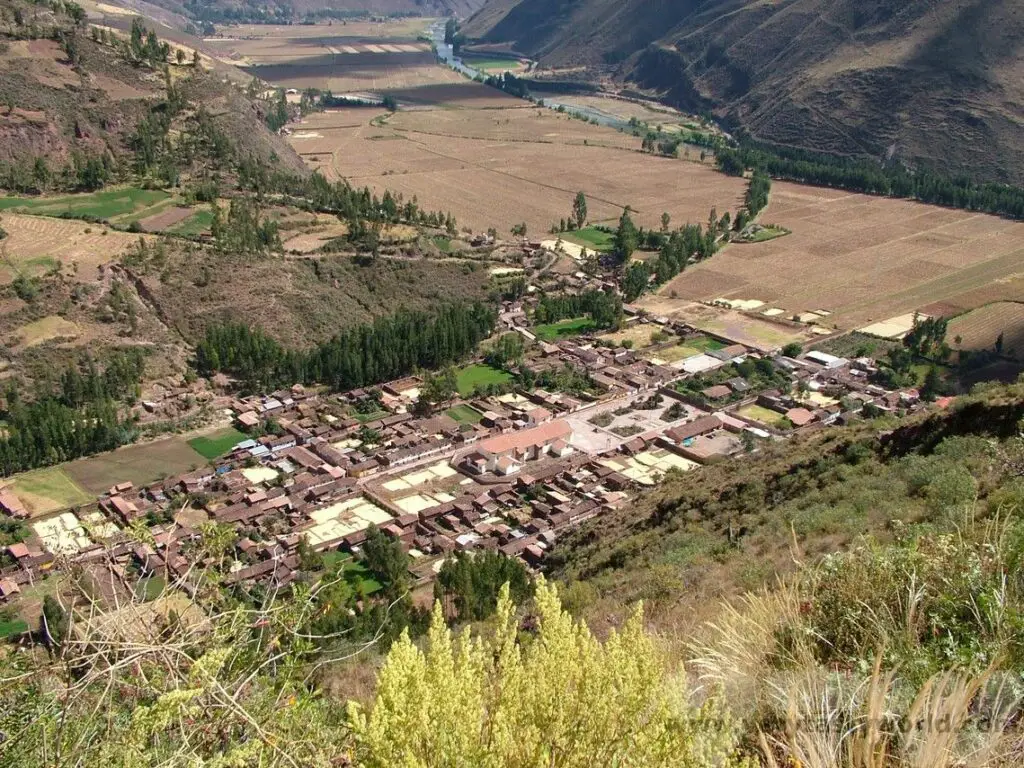
This town nestled in the Sacred Valley is famous for its market, the largest in the region. Officially it was a Sunday market but it is so popular that it runs pretty much every day. It is a bit touristy but if you are after souvenirs – and you like shopping – it is worth a visit. Arrive as early as possible to avoid the crowds.
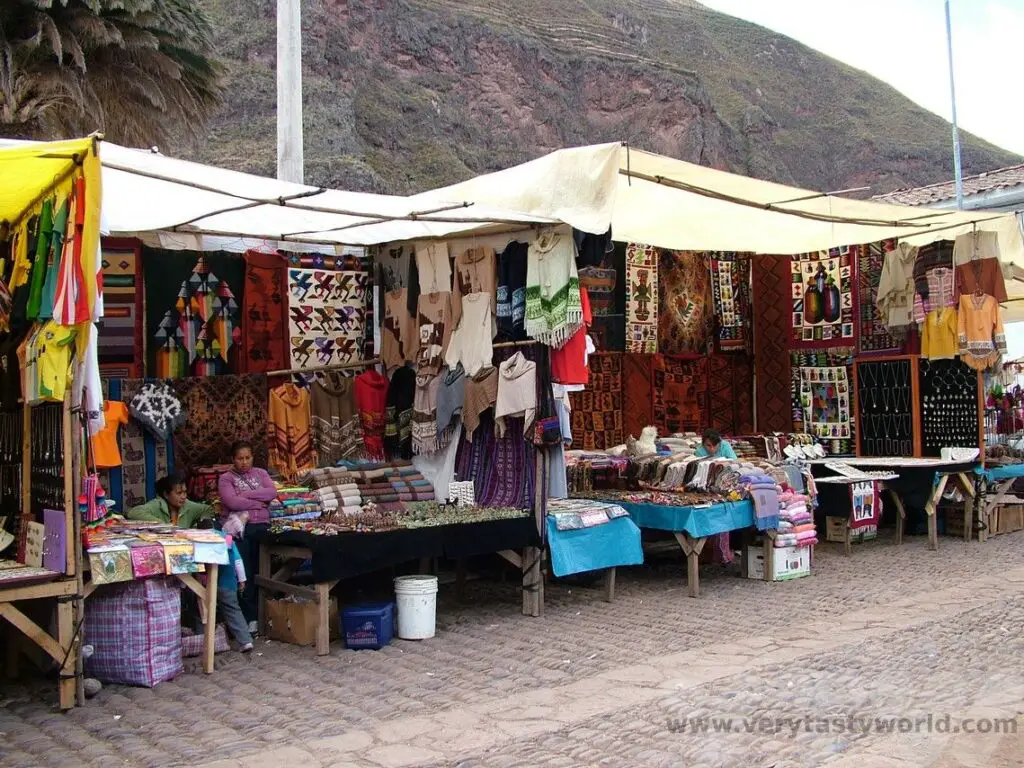
Pisac also has some splendid Inca ruins if you don’t want to haggle for souvenirs but check whether a visit to this site is included in the tour as some prioritise the market.
Chinchero
This is a charming village which has a lot of history and offers another blend of Inca and colonial architecture.
Túpac Yupanqui (the son of Pachacuti) who was the emperor of the Incas between 1471 and 1493, built a grand palace in this area. (Curiously, some academics believe that it was the Incas, led by Yupanqui, who discovered the Galapagos Islands. Although there is no evidence for this, it does reflect the vastness of the Inca empire in its heyday.) The terraces were used for agricultural purposes.
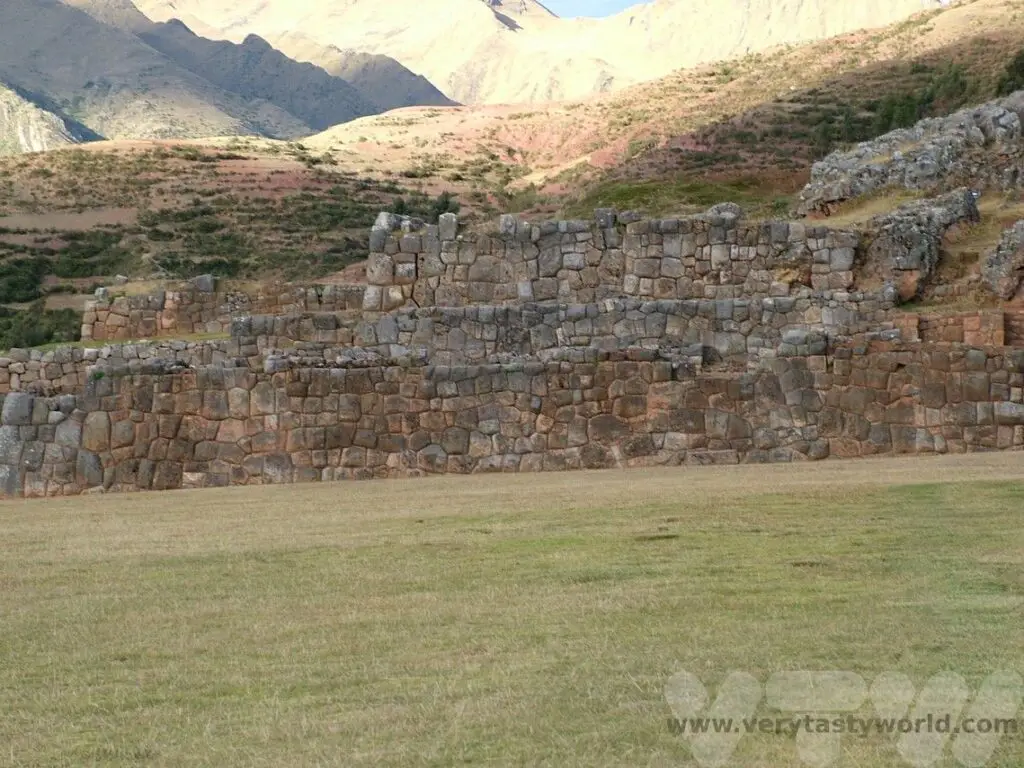
The walls with multi-angular and trapezoidal stones perfectly illustrate the complexity and sophistication of the Inca construction techniques.
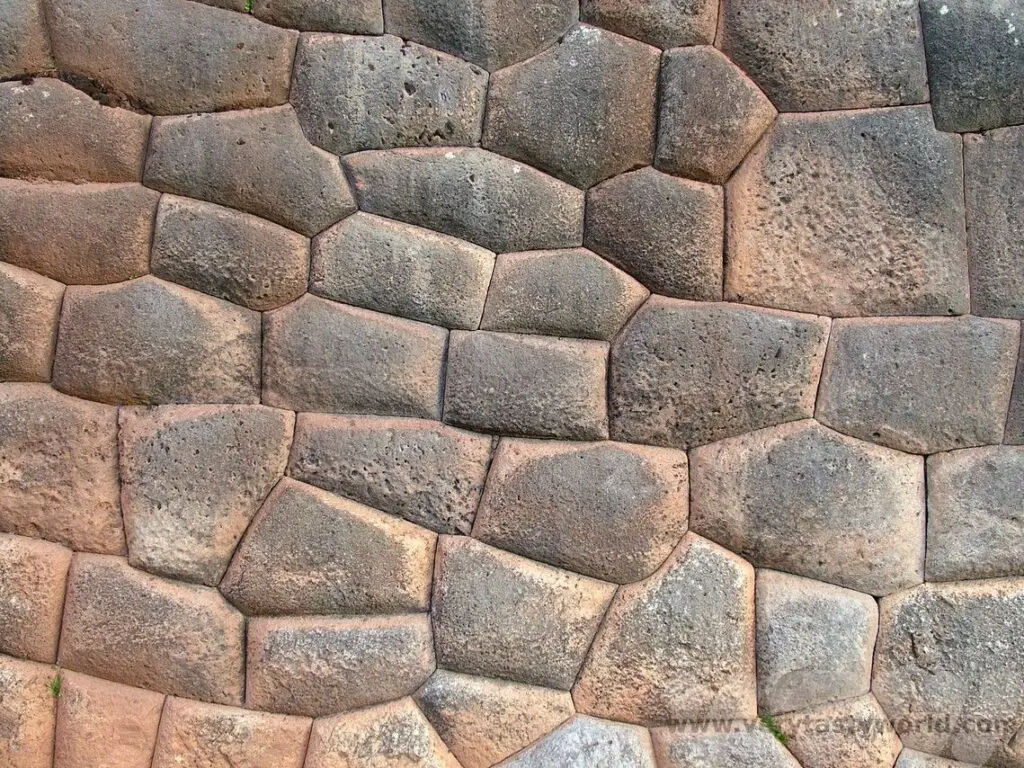
Chinchero was destroyed by rebel Manco Inca, who set it alight in 1540 in order not to leave any resources for the Spanish conquistadors, as he retreated from their unwavering advance.
When the Spanish finally settled in this town they built the Church of Our Lady of Monserrat on the remains of Yupanqui’s grand residence. It uses some of the Inca palace walls for its foundations and very much reflects the way that the cultures have integrated over the centuries.
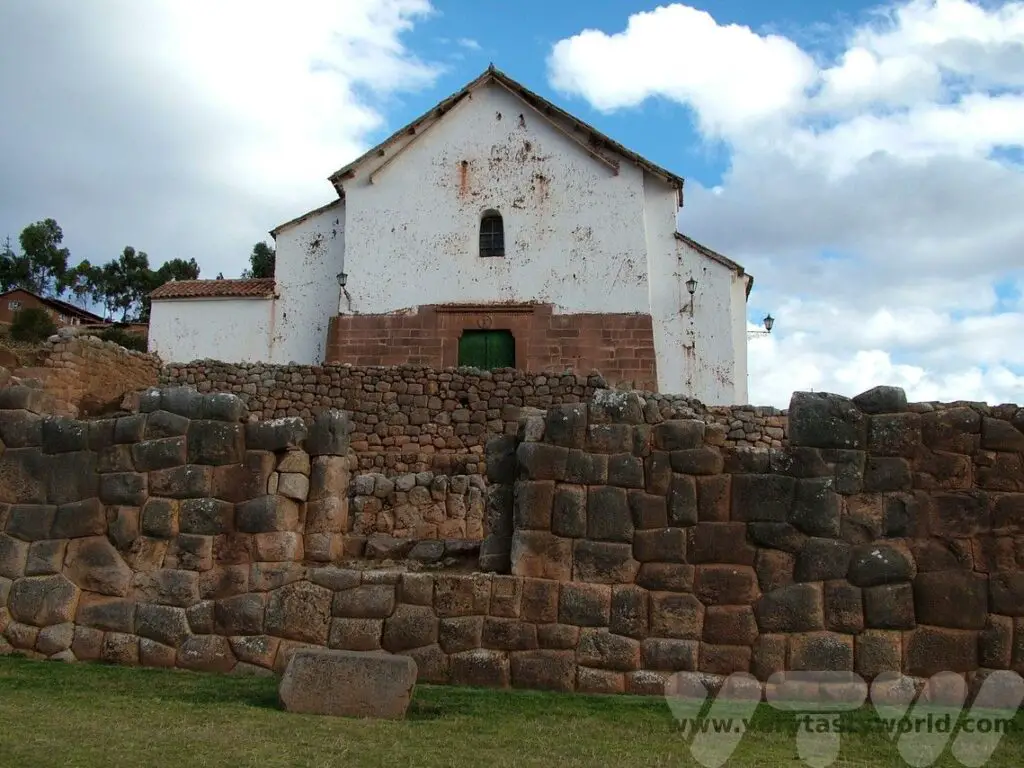
The church contains some of the best religious art in the region.
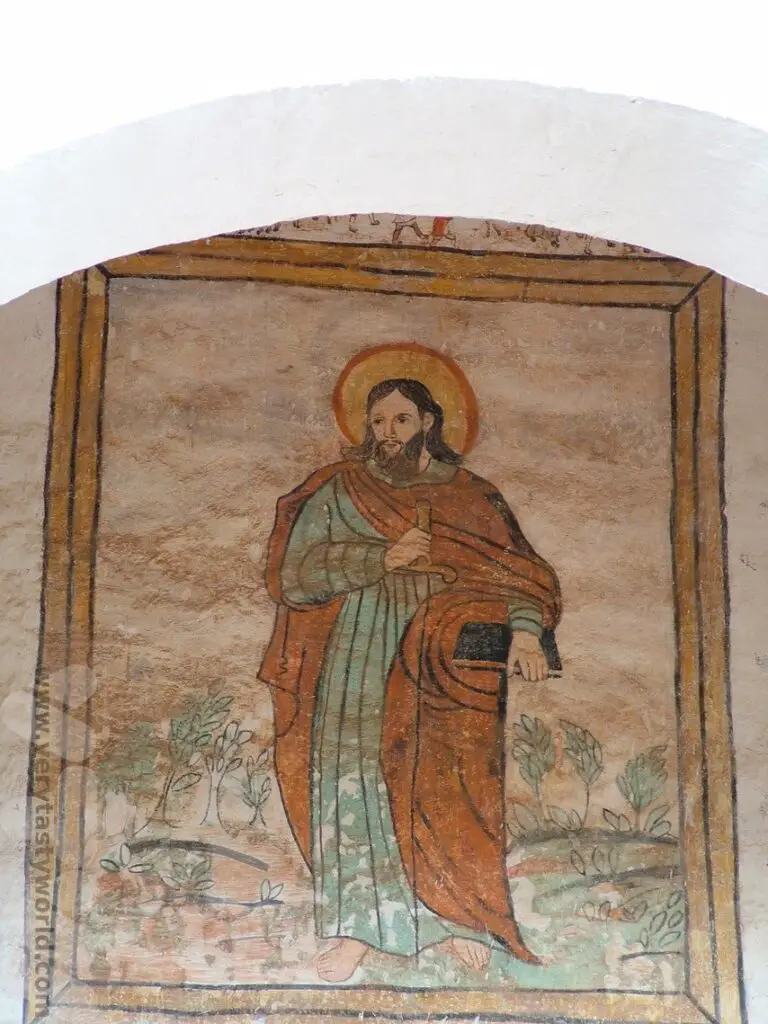
Also a centre for textiles, you may see the local women weaving colourful cloth in the streets of Chinchero. It’s very much a community working together as a co-operative.
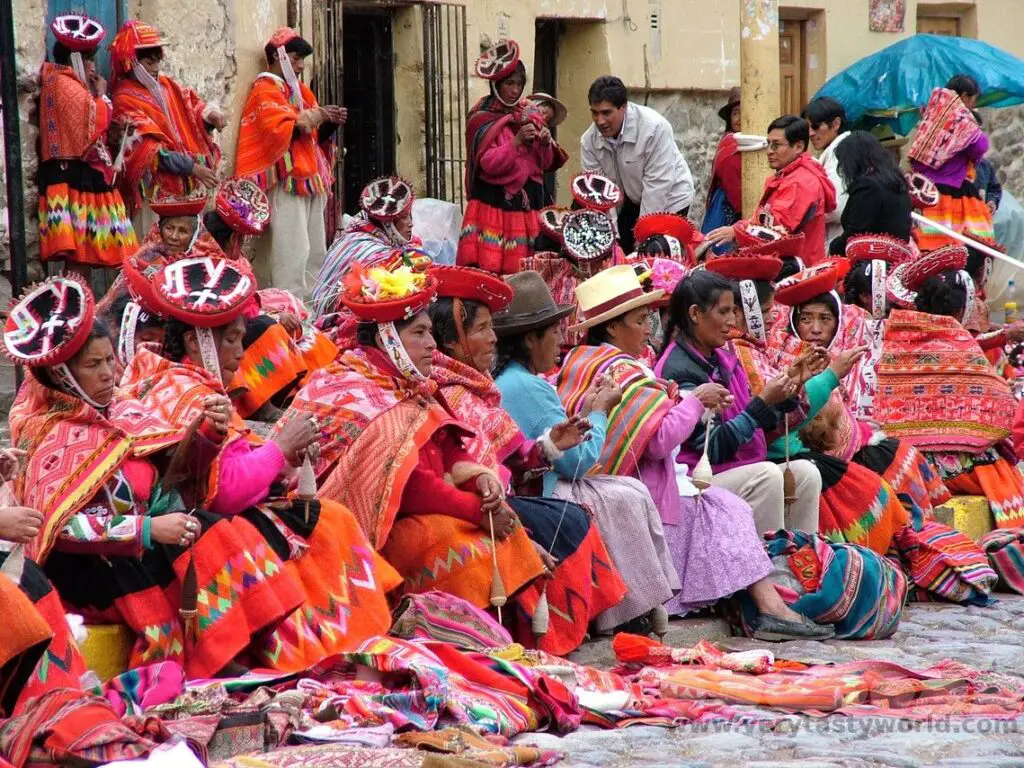
Ollantaytambo
The furthest town from Cusco on this day trip, located about 60 km away (and around 2/3 of the way to Machu Picchu as the crow flies), Ollantaytambo was established by Inca emperor Pachacuti and served as his royal residence.
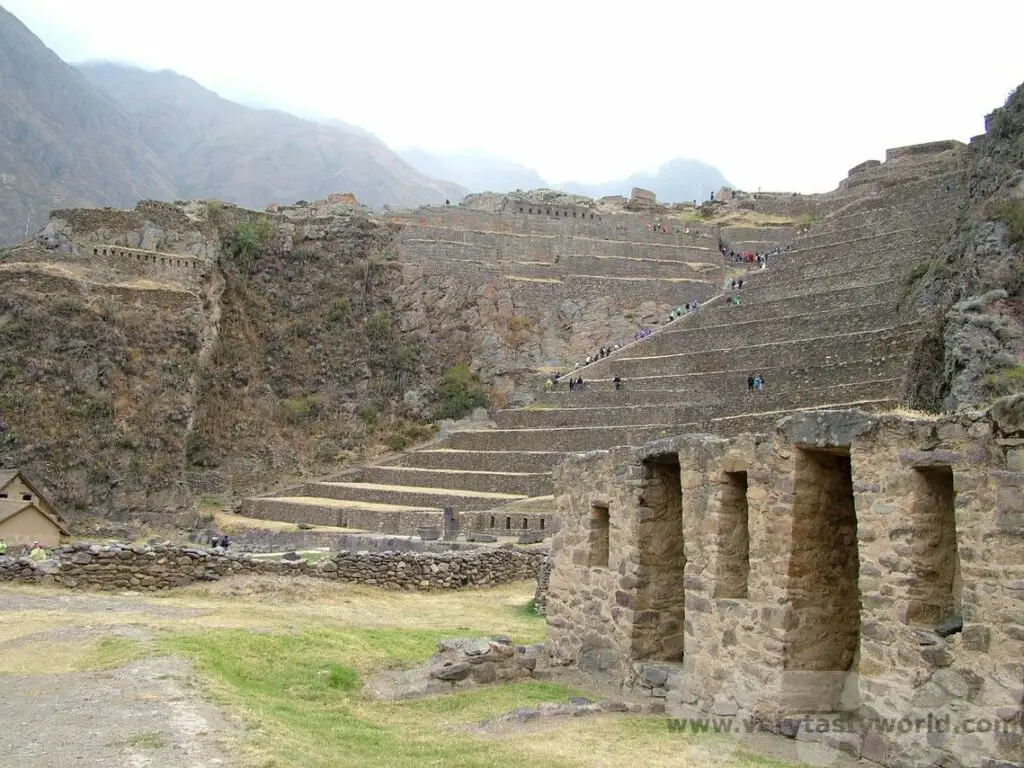
Ollantaytambo’s ruins are extremely well preserved and reflect the agricultural practices of the Incas in this area, notably the quality of the construction due to their prestigious status. The terraces are very well constructed, with high walls, and they scale the tall mountain. This has a practical effect which ensures that the Inca could grow many types of crops which flourished under the different micro-climates on the terraces.
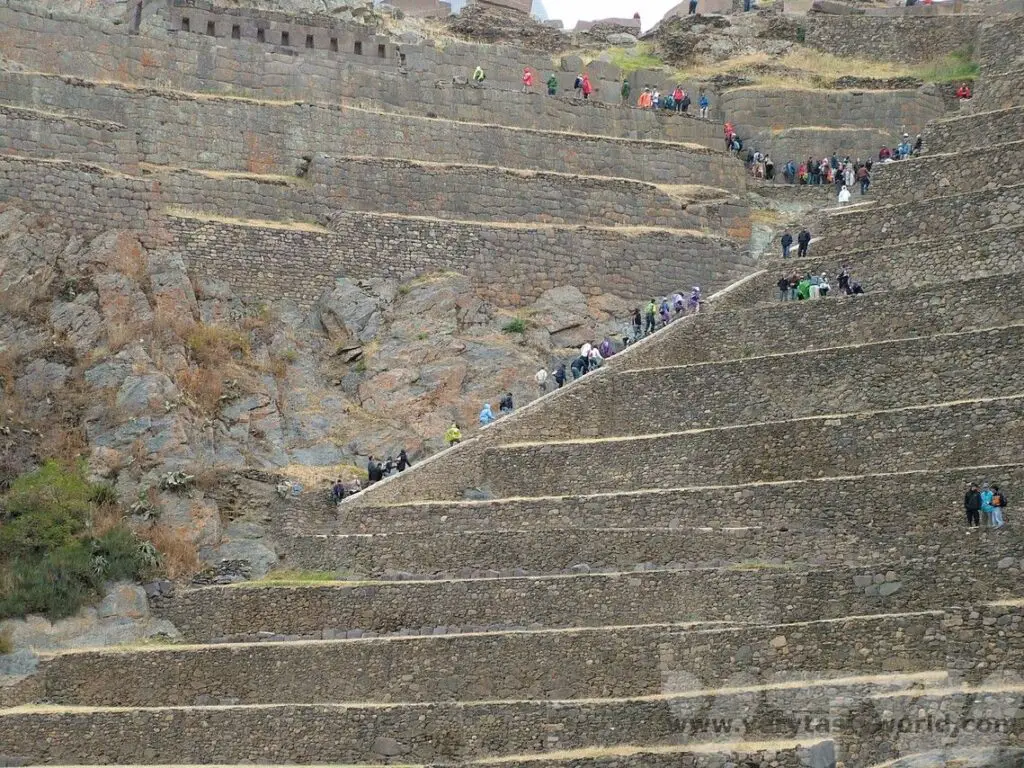
Storehouses for food can also be seen.

Ollantaytambo was the last bastion of the rebel Manco Inca Yupanqui who led the resistance against the Spanish conquistadors. After Cusco had fallen Manco Inca successfully blocked a Spanish expedition and defended Ollantaytambo, but was unable to hold his position. He eventually retreated into the jungle of Vilcabamba and became the leader of the Neo-Inca state.
There are a number of other interesting sites to visit. These include the salt pans of the Salinas de Maras and the concentric terraces at Moray, thought to be a location where the Inca experimented with growing particular crops. If you’re feeling active, whitewater rafting on the Urubamba River is a popular activity.
Essential Drinks to Try in the Sacred Valley
Peru is deservedly cited as having one of the world’s most interesting cuisines with all sorts of delicious delicacies to taste all over the country. But we also enjoyed some typically Peruvian drinks whilst visiting the Sacred Valley.
Chicha
If you see a flagpole outside a local house, this represents a chicha place where you can try a glass of corn beer. You are welcome to come in and buy some for a modest price.
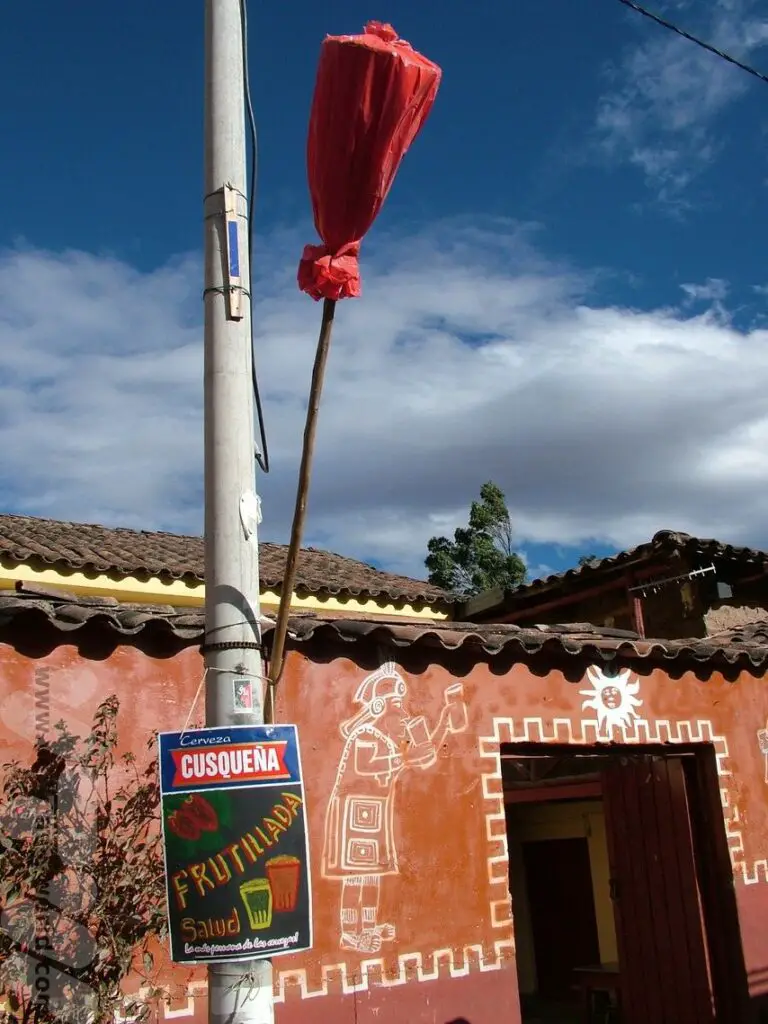
Chicha is brewed from maize and fermented in earthenware vats. It’s usually made by the women of the family and can provide a good income for the household.
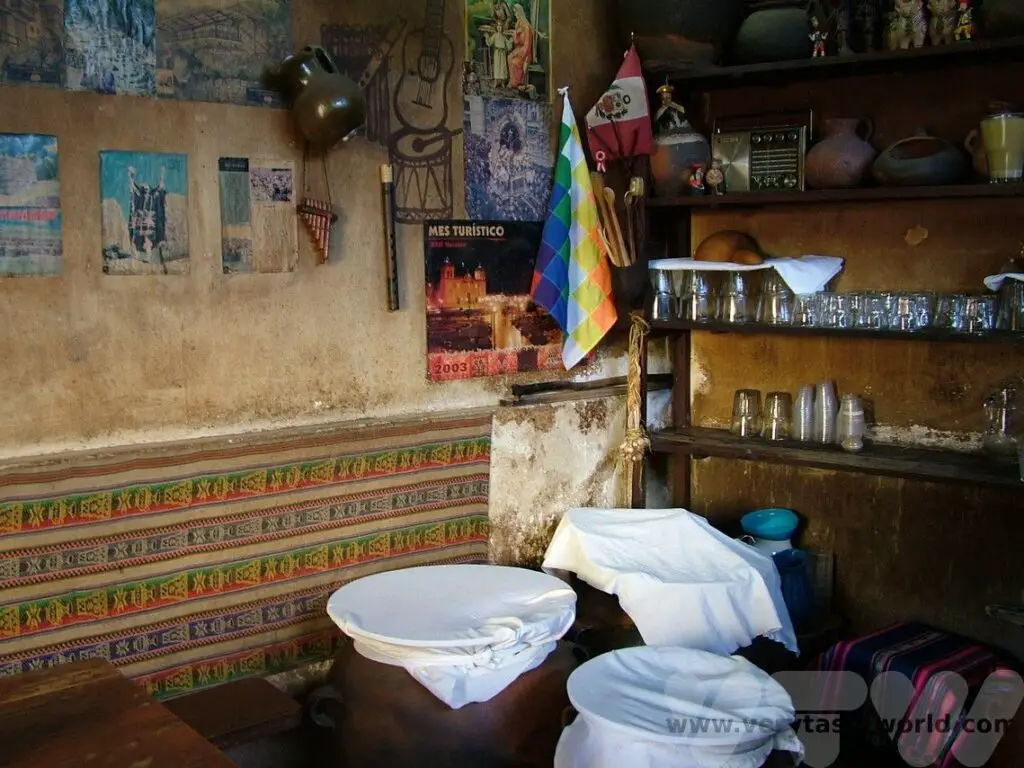
Chicha made in a very similar way to standard beer but it uses maize/corn instead of barley. It is a very special drink that had a huge cultural importance to the Inca people. It’s not very alcoholic – about 3-5% – but it is very refreshing and tasty too.
Chicha de jora is made from yellow maize and chicha morada from purple corn, with fruit such as pineapple or strawberry added with spices such as cinnamon or cloves to add flavour. Both types of beer have a glorious colour.
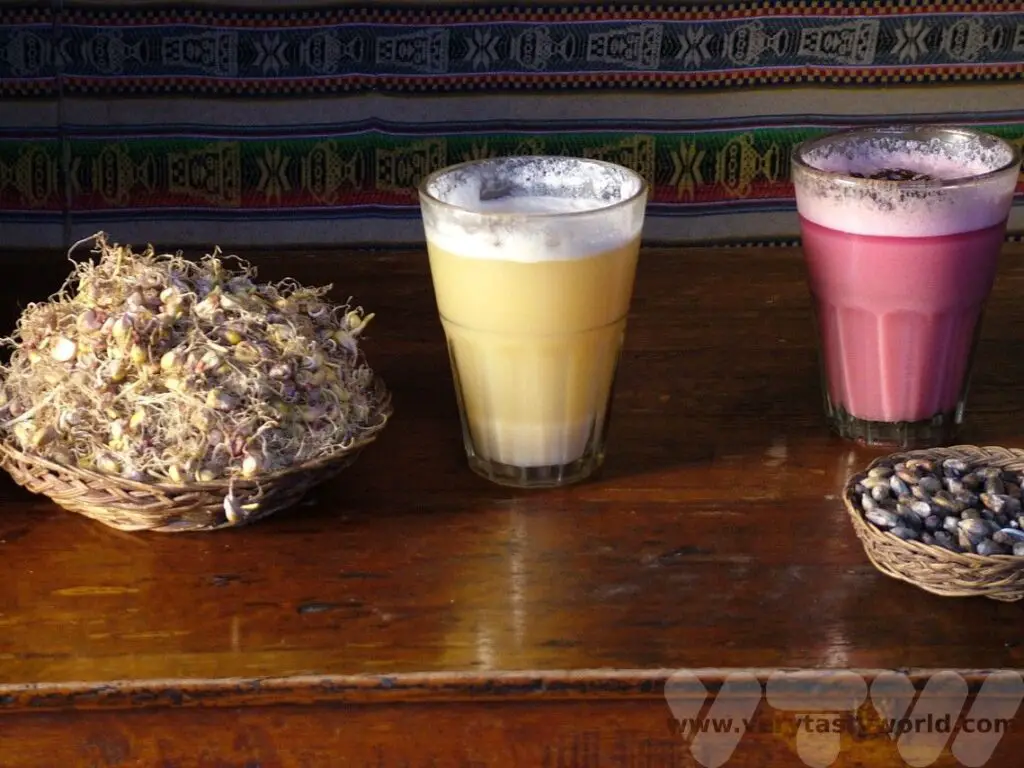
Coca Tea
At altitude you really notice the thinner air and the lack of oxygen. You may not feel it initially but climbing a seemingly innocuous flight of stairs, even a single storey, can leave you puffing and panting and wondering whether you need to be working out more. Some people have more serious reactions which include headaches, nausea, tiredness and dizziness. There is no knowing whether you are likely to suffer from altitude sickness, and fitness isn’t a factor – it seems as though either you are or you aren’t susceptible. If you do feel poorly, stop and rest. Make sure you are well hydrated. Avoid consuming alcohol and smoking.
One local remedy that is reputed to help with mild symptoms is coca tea. It won’t cure altitude sickness but apparently helps alleviate the headaches. (It’s not recommended for those with high blood pressure, heart problems or diabetes.) And as acute mountain sickness can be fatal – if symptoms get worse, seek medical advice immediately.
Our hotel had free coca tea available all the time and this is the case with most accommodation in the city. A nice cup of hot tea after a morning or afternoon’s sightseeing was always welcome. The tea is brewed from the leaves of the coca plant, which the Incas considered to be sacred. It’s not tannic and has a pleasing flavour, a mild, refreshing taste that is a bit like green tea.
You can buy coca tea bags in Peru to bring home. They last ages and can still be enjoyed at altitudes much closer to sea level.
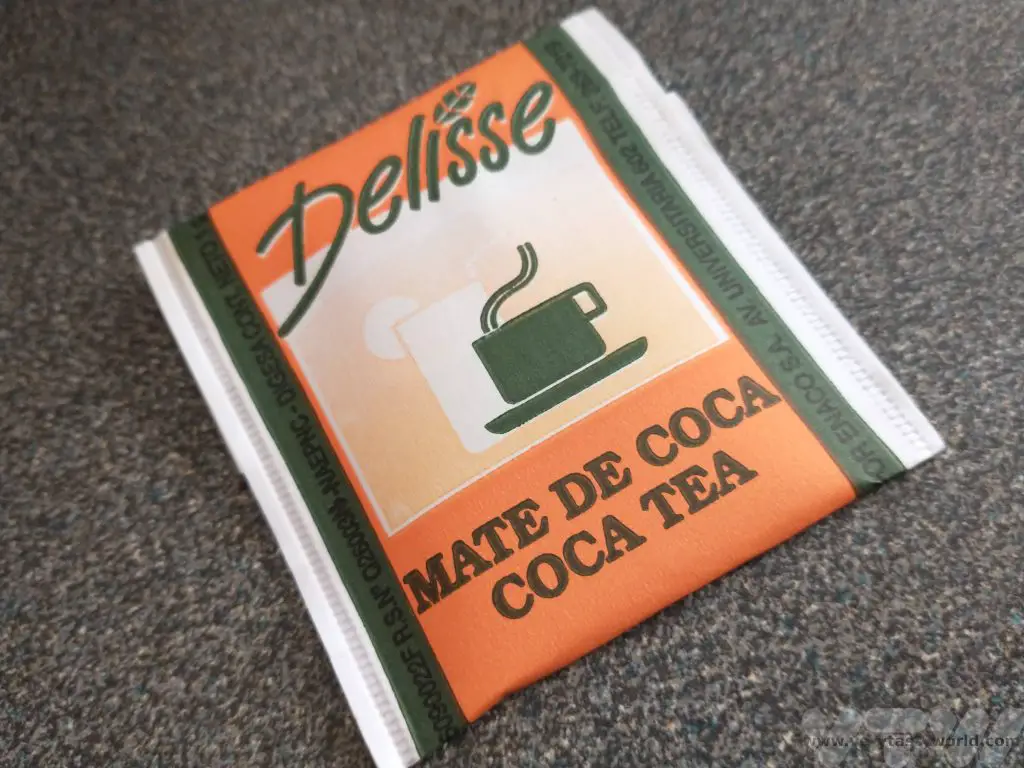
Just brew them as you would any cup of tea: teabag in a cup, add boiling water, steep to the strength you like, sit back, put your feet up and quaff.
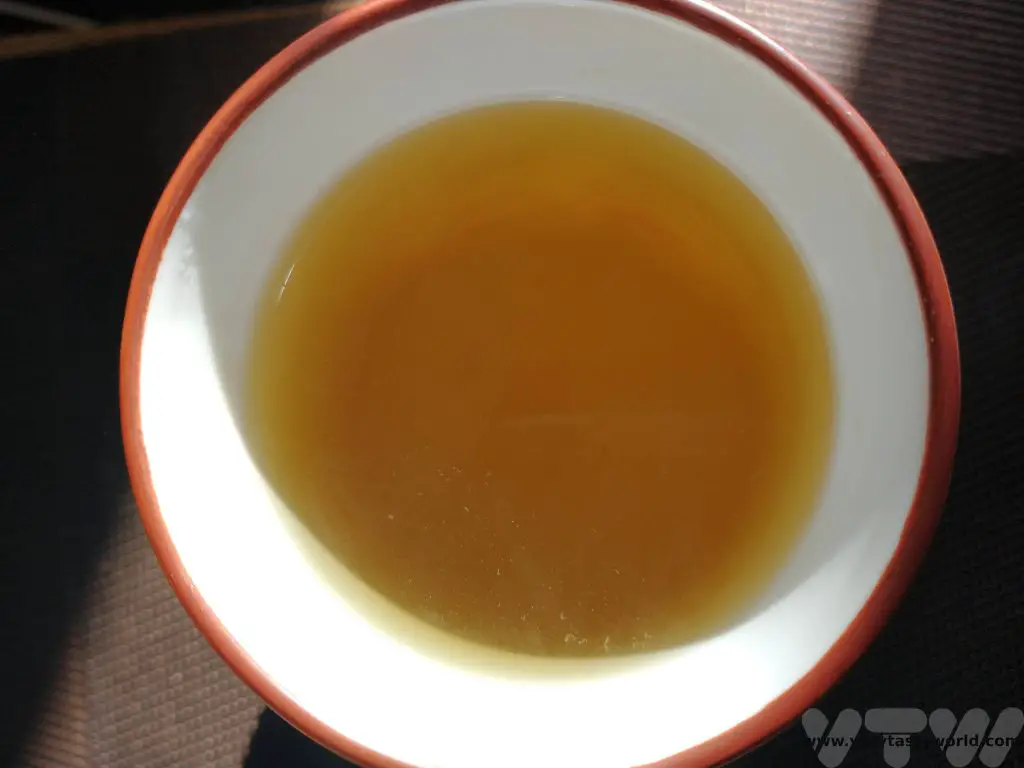
Although often considered to be the gateway to Machu Picchu, Cusco and the Sacred Valley have so much to offer the visitor. It is definitely worth spending time in this area, not only to acclimatise to the altitude, but also to explore and discover more of the region’s fascinating history and culture.
Related Posts You May Enjoy

- Best Time To Visit Machu Picchu 2024 Update
- A 2 Week Patagonia Itinerary
- Day of the Dead in Campeche
- A Galapagos Land Based Itinerary
- RECIPE: How to Make Costa Rica’s Gallo Pinto
- A Tasty Puebla Food Tour
- Costa Rica Wildlife Sanctuary – Caño Negro
- Visit Torres del Paine National Park in Patagonia
- Atacama Desert Itinerary
Geezers at the Geysers, Atacama Desert, Chile
The El Tatio geysers in the Atacama Desert are the world’s highest geysers. That’s the world’s highest altitude (4300m) not the world’s most spurty geysers. It is possible to take a tour to see them.
Most trips are organised from San Pedro de Atacama. There are loads of companies in the town, which is fully geared up for tourism, and all of them will offer trips to the attractions in the area. Some excursions can be booked on the day; El Tatio needs to be booked in advance, if possible, as it’s a popular trip and involves an early start. Most companies will pick you up from your accommodation. This turned out to be quite handy, as we had to get up at 4am. It’s a 3 hour bumpy minibus ride to reach the site. You also need to be prepared with appropriate clothing: it was –9ºC on arrival but the temperature had gone above 30ºC by mid-morning. Wearing lots of layers and discarding them as necessary (whilst maintaining an appropriate level of decency) is the best approach.
It was absolutely worth the effort. We arrived at sunrise to see the geysers at golden hour. They were spectacular.
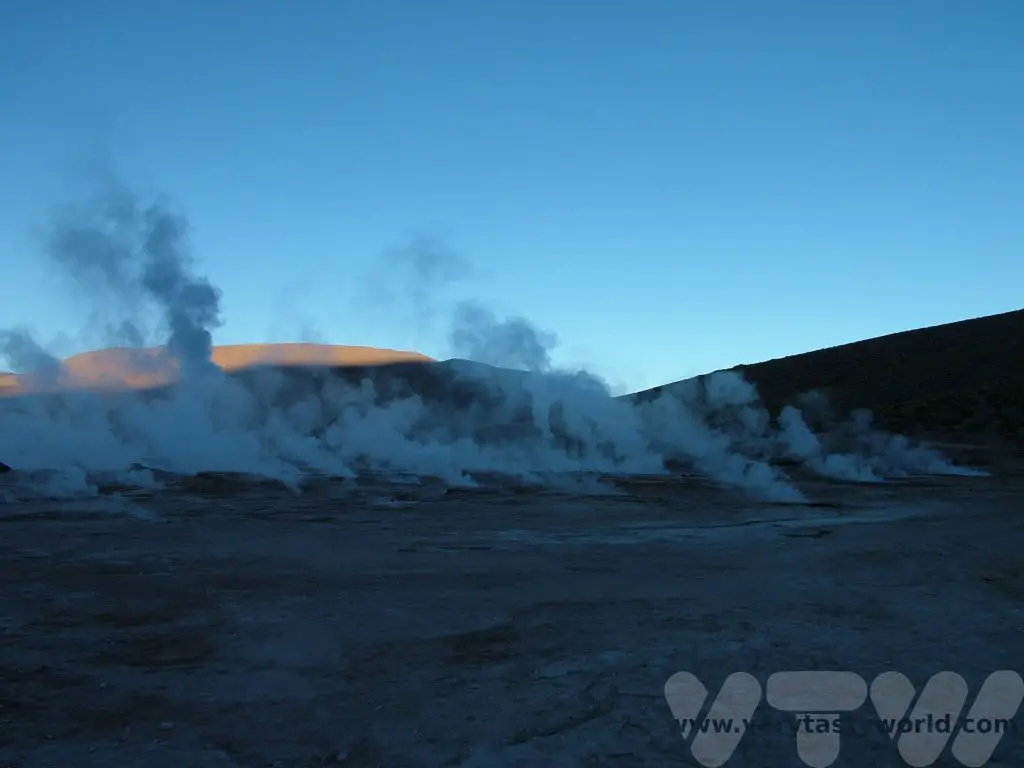
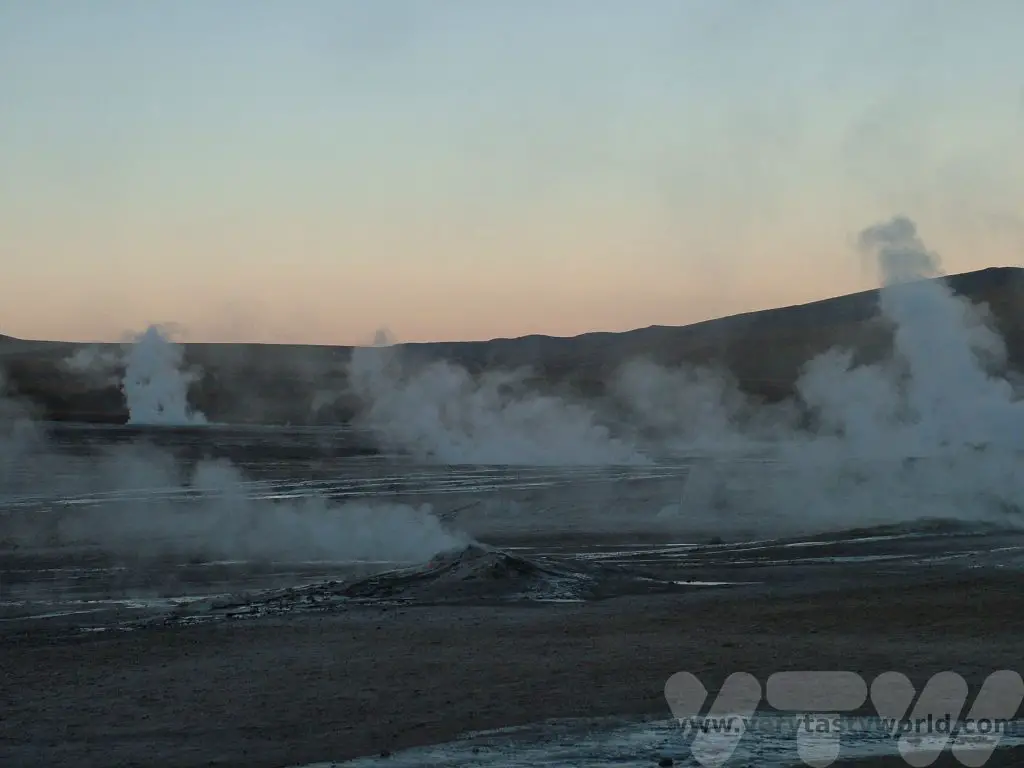
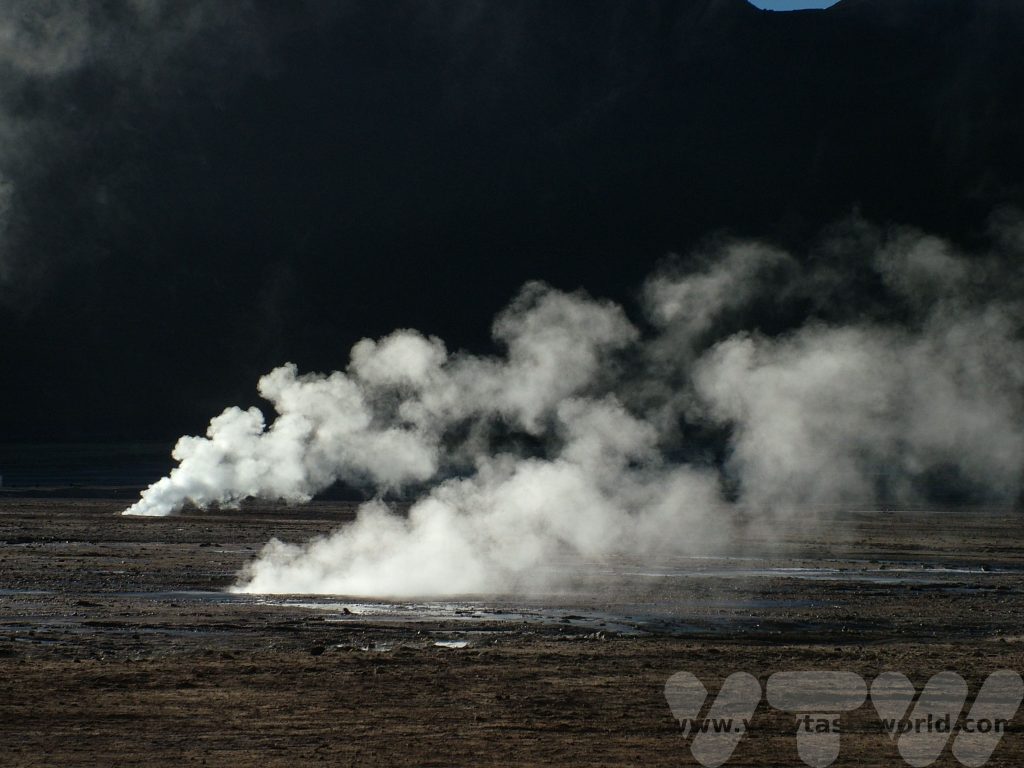
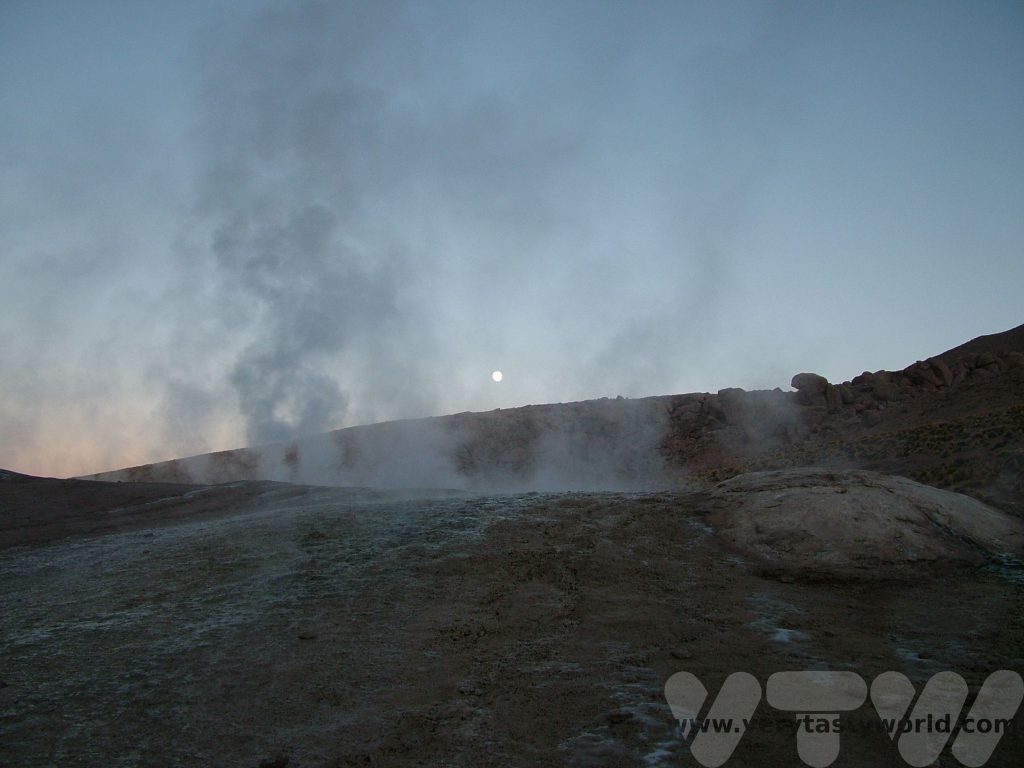
El Tatio is a geothermal field, the third largest in the world, and contains geysers, fumaroles, steam vents, mudpots and hot springs.
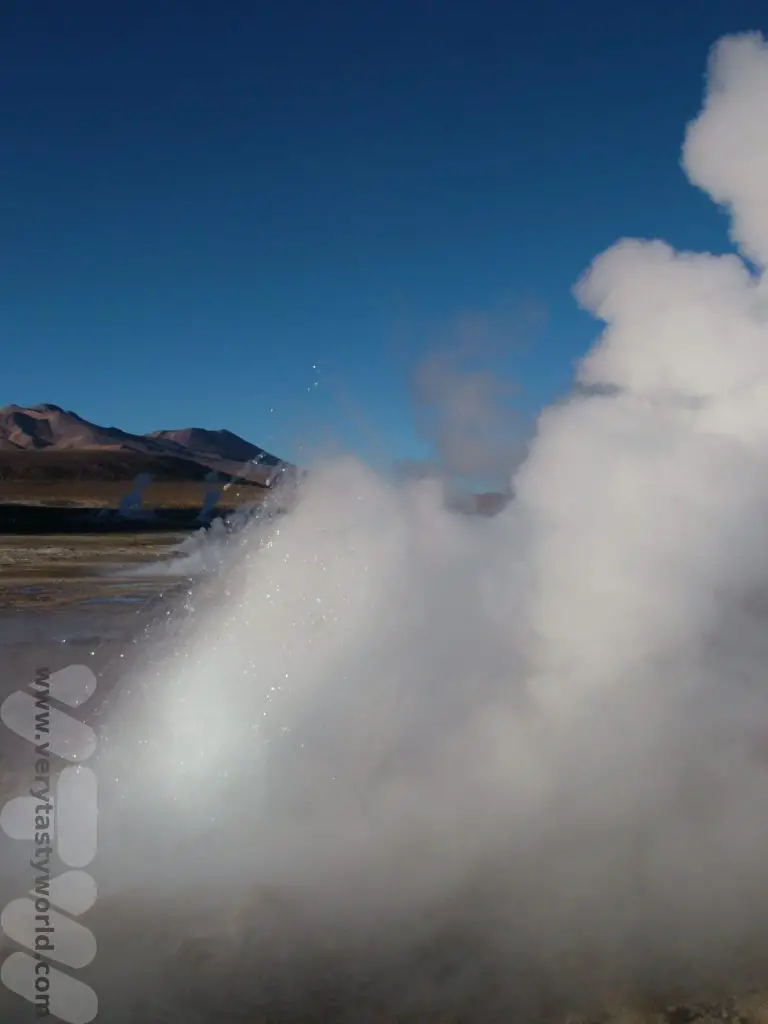
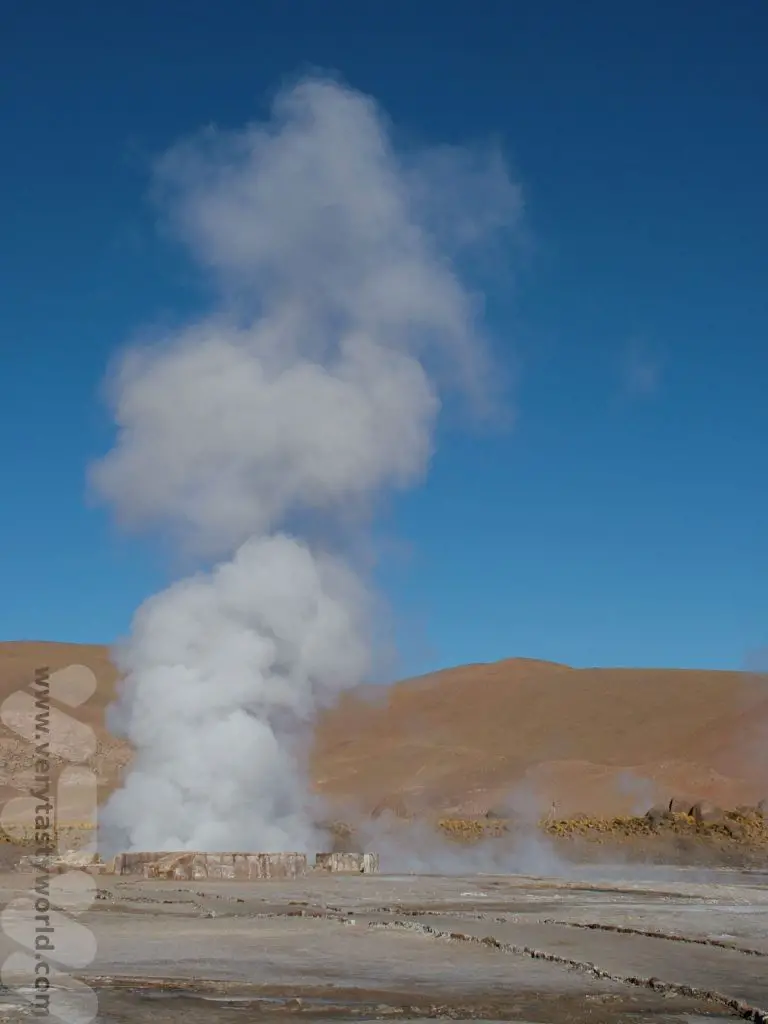
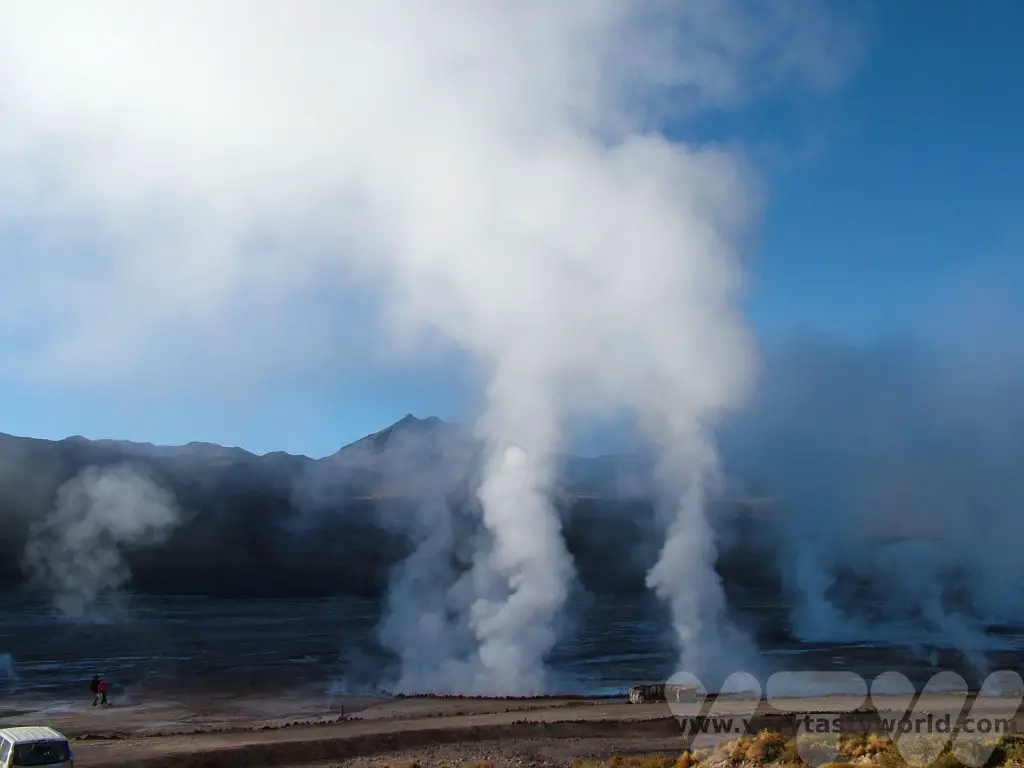
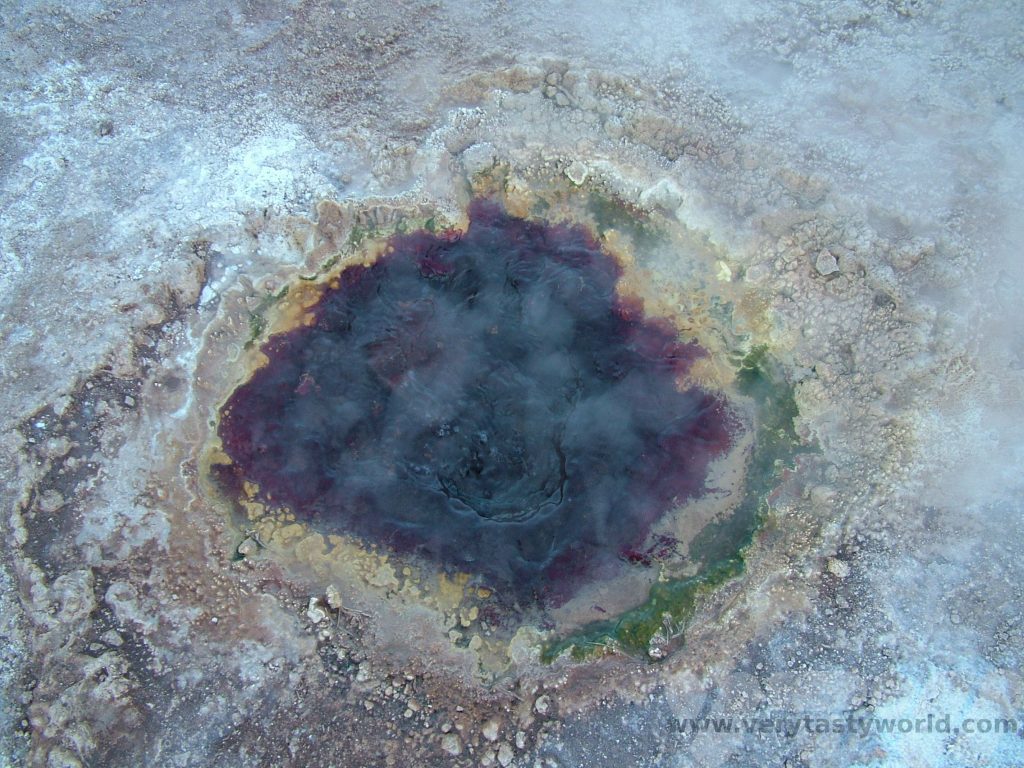
Because the area hasn’t yet been designated a national park (geothermal energy companies tried to harness the energy but didn’t really make a go of it and the area is still vaguely designated as “industrial” rather than a “tourist area”) there are no designated walkways and you can just wander through the geyser field. This means that you can actually stand in a geyser – great if your feet are feeling a little chilly! You have to be careful though – the earth’s crust is pretty thin up there and a number of people have been seriously injured falling through it and getting burned or frozen in a random extreme temperature accident.
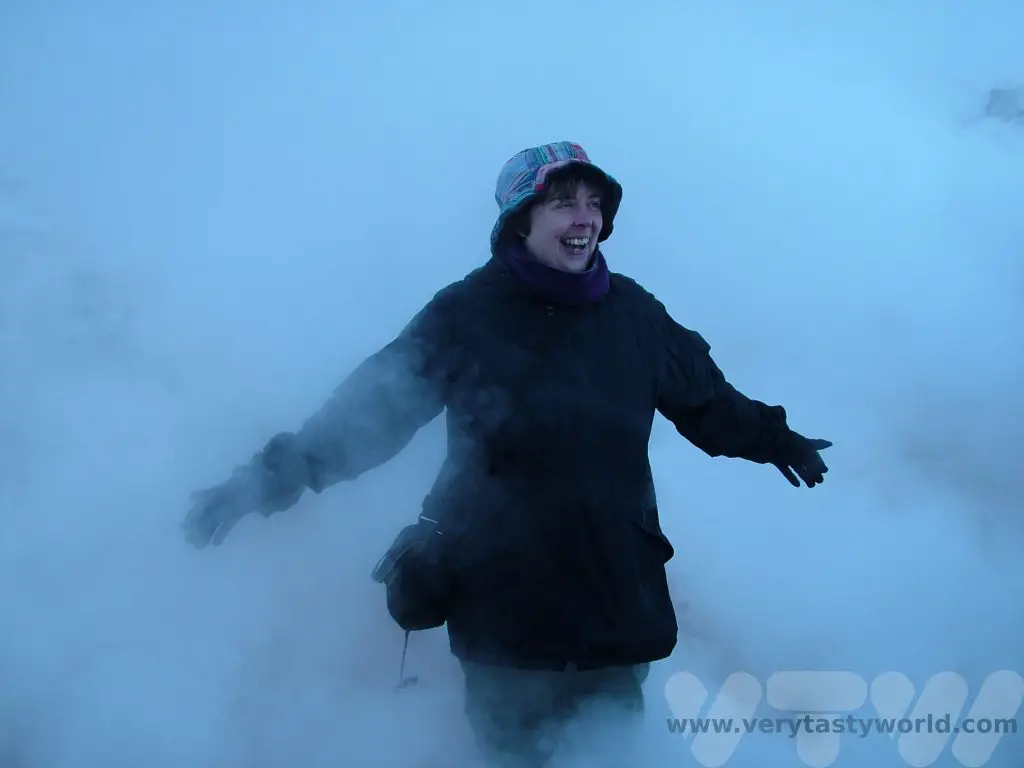
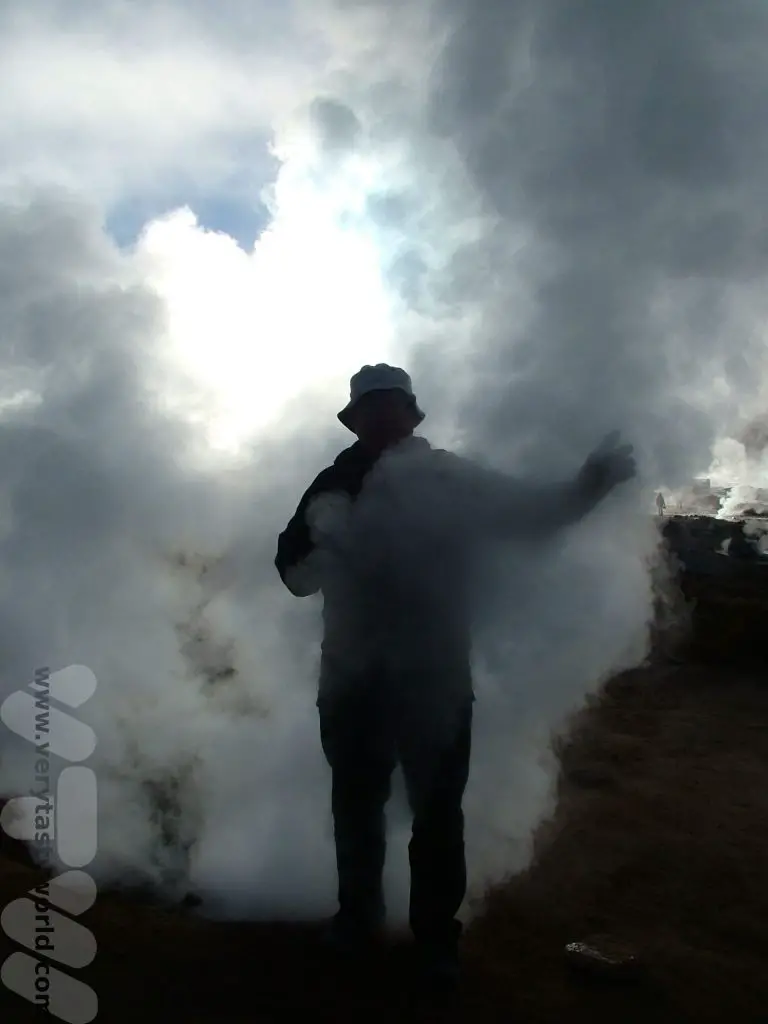
If you bring your bathing suit, and the tour allows time for it, you can go swimming in the geothermal hot springs.
The surrounding area is very beautiful as well. Most tours will offer a leisurely journey back, stopping off at various sites.
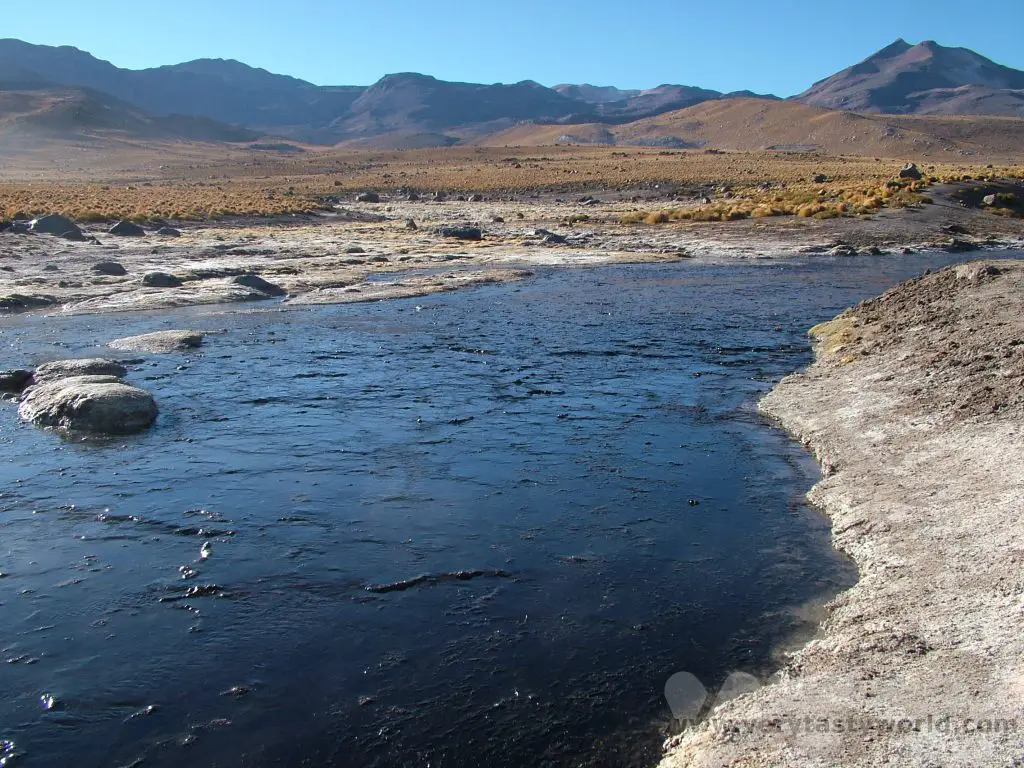
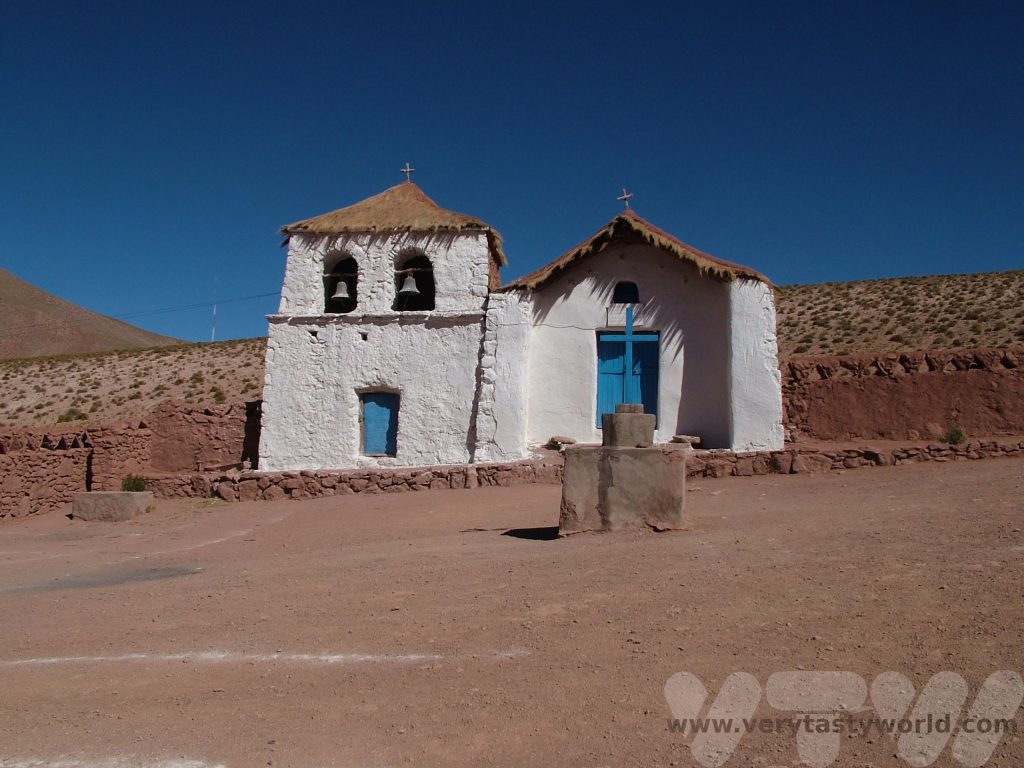
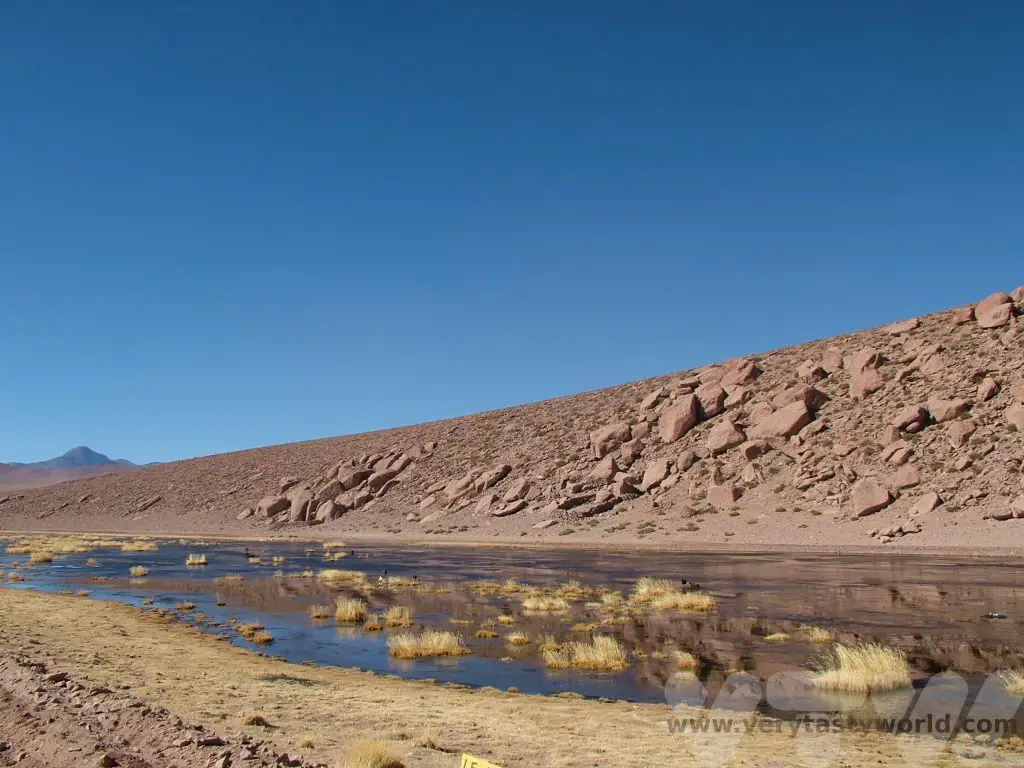
Llama kebab barbeques are available if you want a late breakfast.
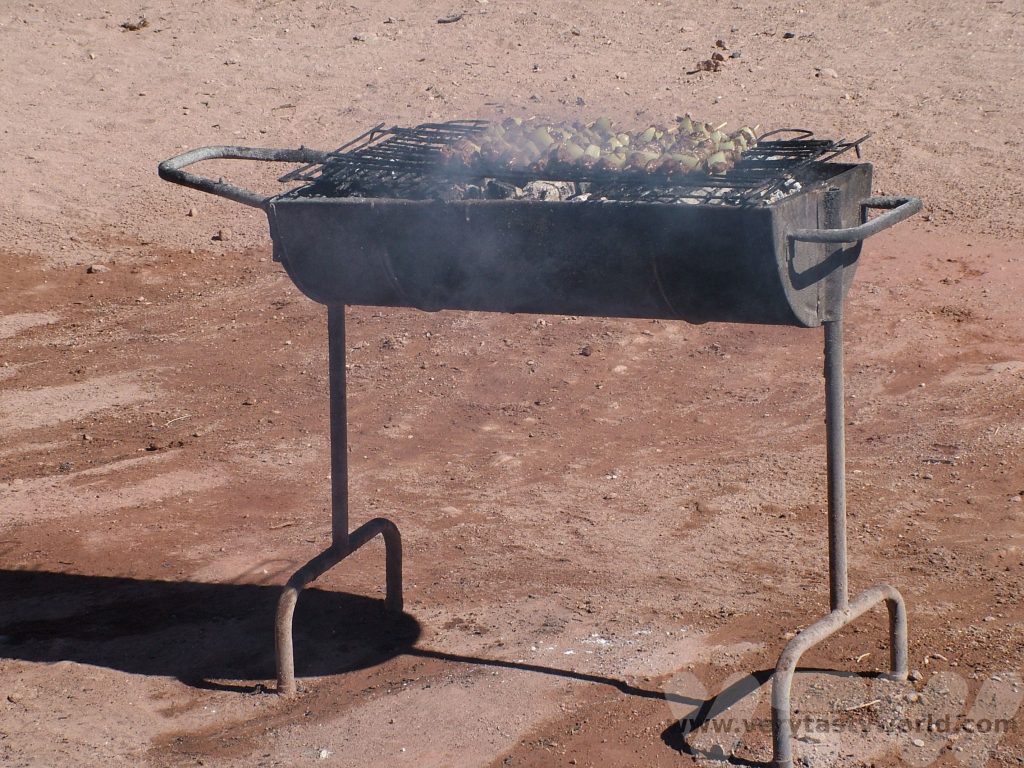
The cactus forest is also worth a visit.
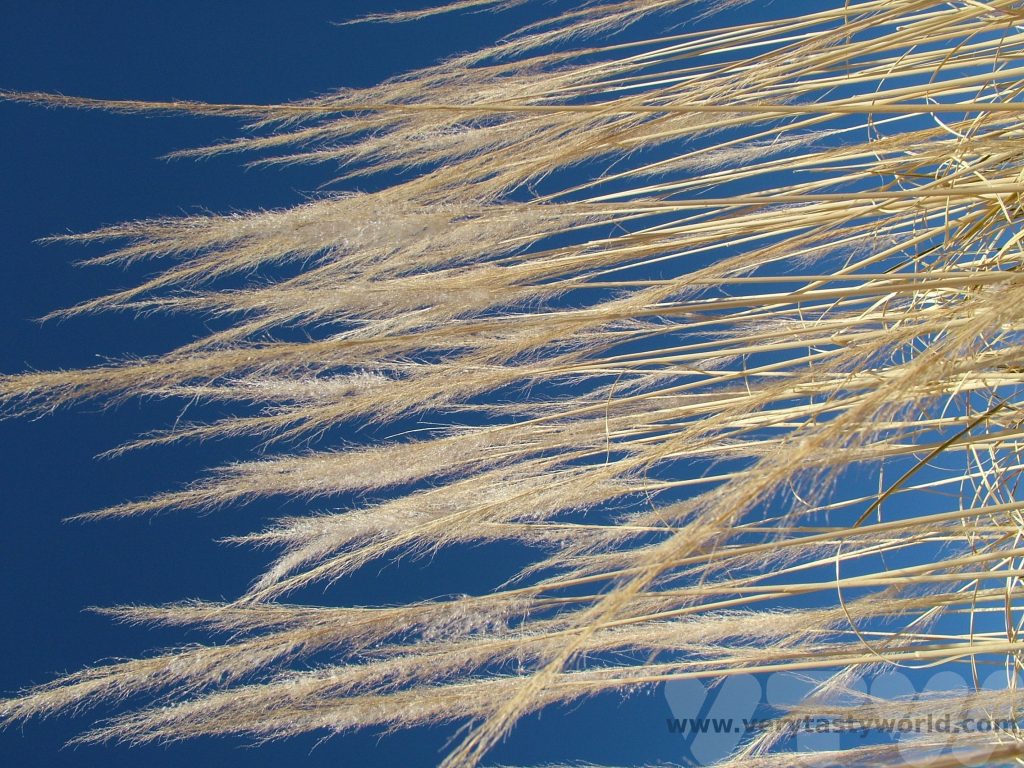
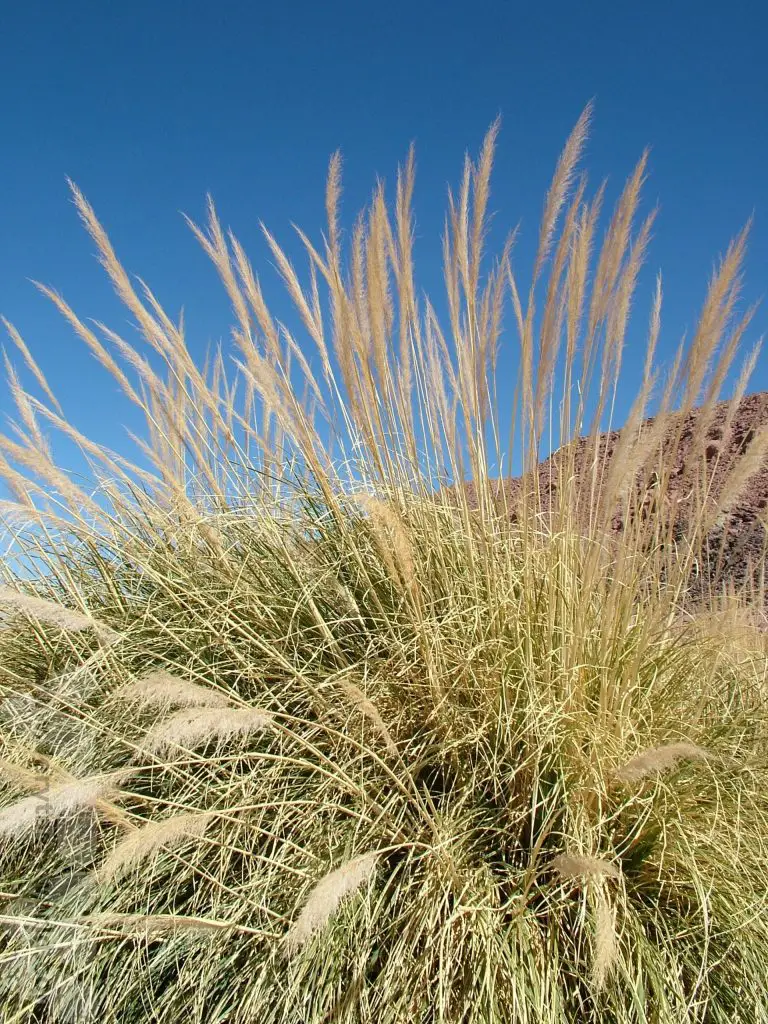
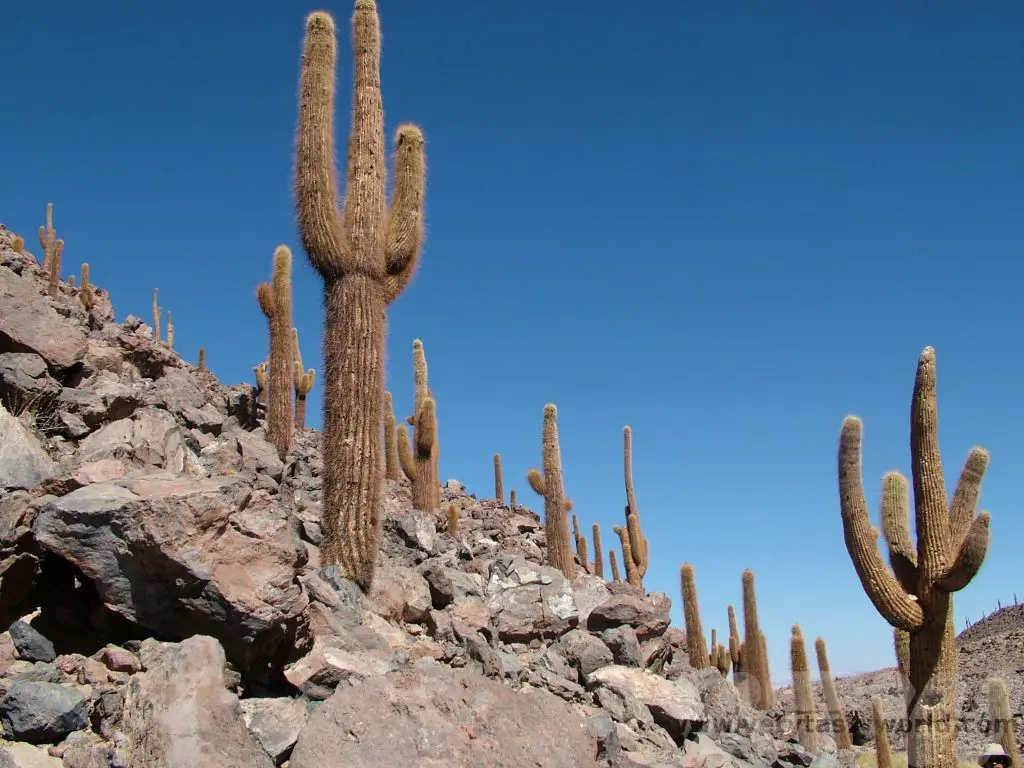
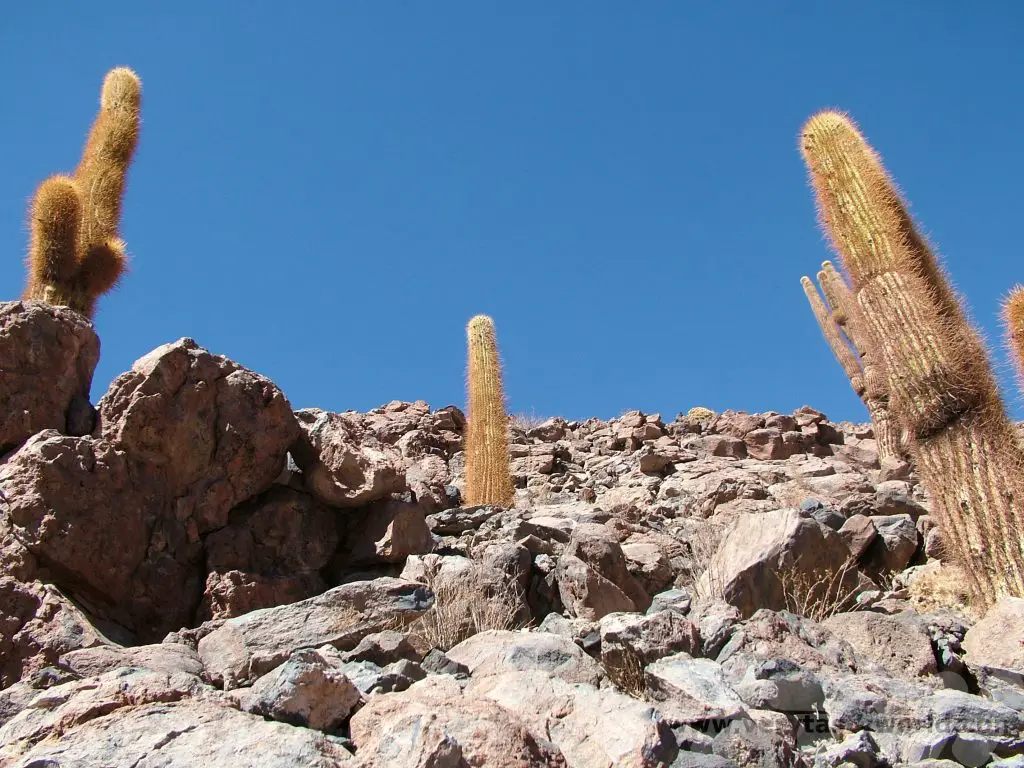

- Best Time To Visit Machu Picchu 2024 Update
- A 2 Week Patagonia Itinerary
- Day of the Dead in Campeche
- A Galapagos Land Based Itinerary
- RECIPE: How to Make Costa Rica’s Gallo Pinto
- A Tasty Puebla Food Tour
- Costa Rica Wildlife Sanctuary – Caño Negro
- Visit Torres del Paine National Park in Patagonia
- Atacama Desert Itinerary
Turtles Nesting in Tortuguero, Costa Rica
Warning for no photographs at all. We grew up using film cameras. The ones where you have a maximum of 24 or 36 shots on each roll of film and, once used, you had to wait for weeks for the films to be developed at the laboratory and for the prints to be sent back home. You chose your shot carefully, you composed it, each and every picture was a precious thing. Digital photography is fantastic in so many ways – we would never have taken a picture of our meal using celluloid! – but with such easy access to cameras and phones and virtually unlimited shot potential sometimes it feels as though we are so busy capturing pictures for posterity that we forget to experience the moment.
Tortuguero on the Eastern coast of Costa Rica isn’t really how you’d expect the Caribbean to be. Even though you can get a lovely drink of coconut water directly from the pod, the coastline is wild, the sea rough and you probably wouldn’t sunbathe on the beach. You definitely would not want to go swimming in the sea for fear getting eaten by sharks. You also wouldn’t want to swim in the channel on the other side of the peninsula for fear of getting eaten by caiman. But it’s the most amazing place to view some of Costa Rica’s wildlife.
The weather is hot and humid. Really hot and very humid. The area experiences about 6000 mm of rainfall every year and when it rains, it rains. We recommend waterproof ponchos. There was no aircon in the lodge we were staying in, just an old-fashioned fan, which provided a minimal amount of respite. The waves pounding relentlessly on the beach provided an aural backdrop.
One of the main attractions are the turtles that come to the beach to nest. Each species has a different nesting season. We visited in late June, just before the season when the greenback turtles were expected to come ashore. Although our hotel wouldn’t offer a guide because they couldn’t guarantee a sighting, we found a local guide who was willing to take us out and gave us a discount on his usual price, although he emphasised that we might not get a viewing. We decided to take a chance. We knew we were very close to the nesting season and we were pretty sure that the greenbacks weren’t lurking a few km offshore checking their greenback calendars to wait for the 1st of July.
We met our guide at 9pm and were given a briefing. The tours are undertaken to ensure minimal disruption to the turtle. No white light was allowed on the beach at all, the guide had a red torch so that we could – just about – see our way in the dark. In fact, even the local houses that line the shore refrain from using white light in their dwellings so as not to discourage the turtles from coming ashore. A small group of us walked in single file along a stretch of beach. It was really hot and very humid, even at that time of night. Our guide was looking for ‘tramlines’ going up the beach, a sign that a female turtle had come ashore. These appear to be parallel lines when you view them at a distance in the dark but, on closer inspection, the tramlines are actually distinct flipper tracks.
Other groups were scanning different sections of the beach and the guides kept in touch with each other via mobile phone. After walking 1 km to the village and a further 2 km along the beach we learned that a female had come ashore just 100 m away from our hotel. We had to dash back. Did we mention how hot and humid it was? As it turned out, we could have simply sat in the bar drinking cocktails then sauntered onto the beach. Instead, it was a hot, sweaty trot. We earned our turtle.
By the time we had arrived the greenback had traversed the width of the beach from the ocean shore to a location above the high tide mark, had dug a hole and was starting to lay her eggs. Cameras, phones and even torches are – rightly – banned on the beach. There were a couple of other groups who wanted to view the turtle. The aim was to ensure that everybody got a view without disturbing her. She was facing away from the shoreline and had her back to the tourists. Groups of ten people, five kneeling, five standing behind them were allowed to view the turtle for a couple of minutes at a time. Silence was mandatory. Then each group stepped back to let another group have a viewing. Throughout the process each group took a turn – step forward and view, step back and wait.
This greenback had been born on this beach. She was the 1% of all her siblings that had made it to adulthood, had travelled thousands of miles across the ocean and returned to the place of her birth. The egg laying was a real labour for the turtle. She laid around 100 eggs and after the final one, used her back flippers to push sand gently across to cover them all. Once the eggs were covered she then used her front flippers to brush across the sand, disguising the fact that a hole had even been present. These flippers were strong and no one knelt to watch that part of the process– they would have ended up with sand in their faces. Then the tourists melted away to let the turtle rest before she returned to the ocean.
In the spirit of no images, we woke up the next morning elated at our luck. The birds were singing, the Atlantic Ocean (heard in the background rumble) was crashing on the shore. This is how it sounded.

- Best Time To Visit Machu Picchu 2024 Update
- A 2 Week Patagonia Itinerary
- Day of the Dead in Campeche
- A Galapagos Land Based Itinerary
- RECIPE: How to Make Costa Rica’s Gallo Pinto
- A Tasty Puebla Food Tour
- Costa Rica Wildlife Sanctuary – Caño Negro
- Visit Torres del Paine National Park in Patagonia
- Atacama Desert Itinerary
Exploring The Tambopata National Reserve in Peru
Welcome to the Jungle
While Peru may be more famous for the remarkable Machu Picchu, cosmopolitan Lima, the enigmatic Nazca lines and the serenely beautiful Lake Titicaca, a significant part of the country lies within the Amazon basin and hence it is possible to visit the rainforest. The Rio Tambopata is a tributary of the Madre de Dios which flows into the Mamore River, becomes the Madeira River and eventually meets the Amazon. You can fly into Puerto Maldonado, catch a boat upriver and visit a number of lodges, all located within the Tambopata National Reserve. There are loads of excursions available – all in pristine rainforest and the wildlife viewing opportunities are plentiful. The jungle is hot, sticky, humid and full of mosquitoes and other creatures that can give you a really nasty bite. But it is also wild, exciting, loud, beautiful and utterly fascinating.
The trip also triggered an interest in plants as food and medicine that continues to this day. We stayed at a lodge located in primary forest, a three hour journey up the Tambopata river.
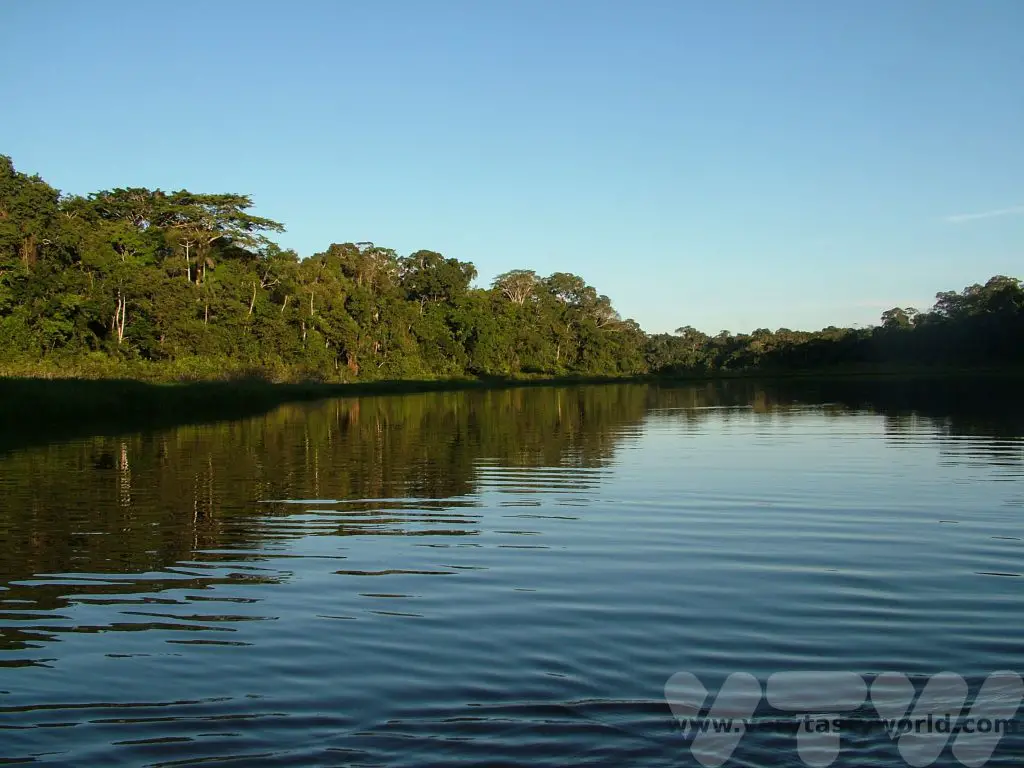
At the lodge, our room had 3 internal walls and no external wall, so it looked out at the rainforest. It was amazing to be able to lie in bed listening to the incessant cacophony of sounds, primarily from the birds and insects.
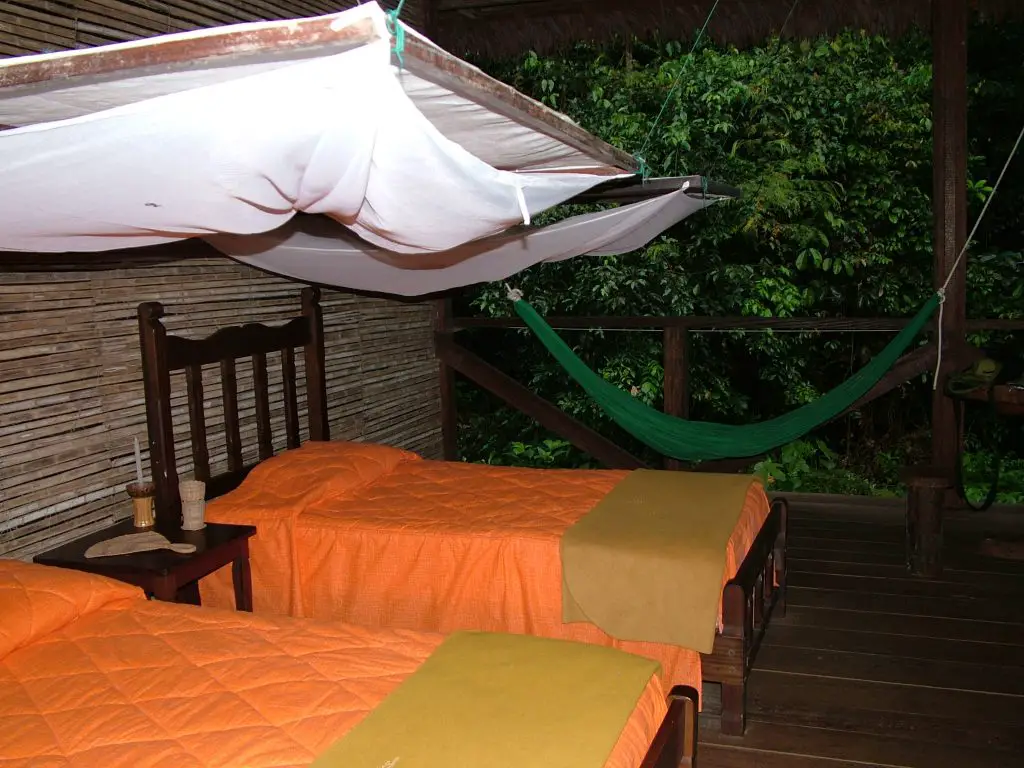
When you gaze out at the jungle, the jungle gazes back at you. It can also invade your room and cause jolly mayhem when you find frogs in the shower, possums on the bed and giant insects that fly in while you’re sitting on the loo. There was no electricity in the rooms so we relied on candles and kerosene lamps and the showers were cold water only (not a problem when it’s hot and humid). The guides and staff were excellent, the food was great and there were cocktails in the evening – which was most refined.
Guided Excursions In The Tambopata National Reserve
There are lots of guided excursions on offer, walking in wellies along muddy trails or canoeing across an oxbow lake (which was apparently full of piranha and anaconda – eep!).
The birds and animals were fascinating and indeed we saw capybara, peccary (wild pigs), caiman (alligators), beautiful macaw, piranha, giant guinea pigs, taira, stinky birds and caught just a glimpse of a shy tarantula that wouldn’t come out to play. We avoided fire ants and hairy caterpillars. And fell over in the mud.
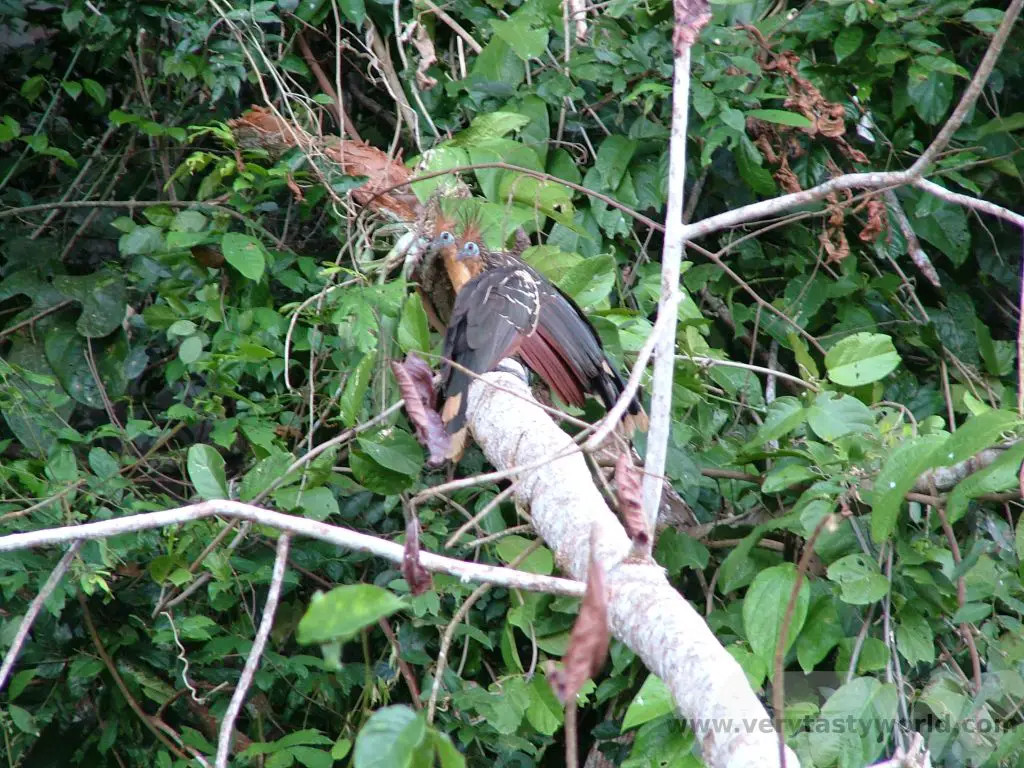
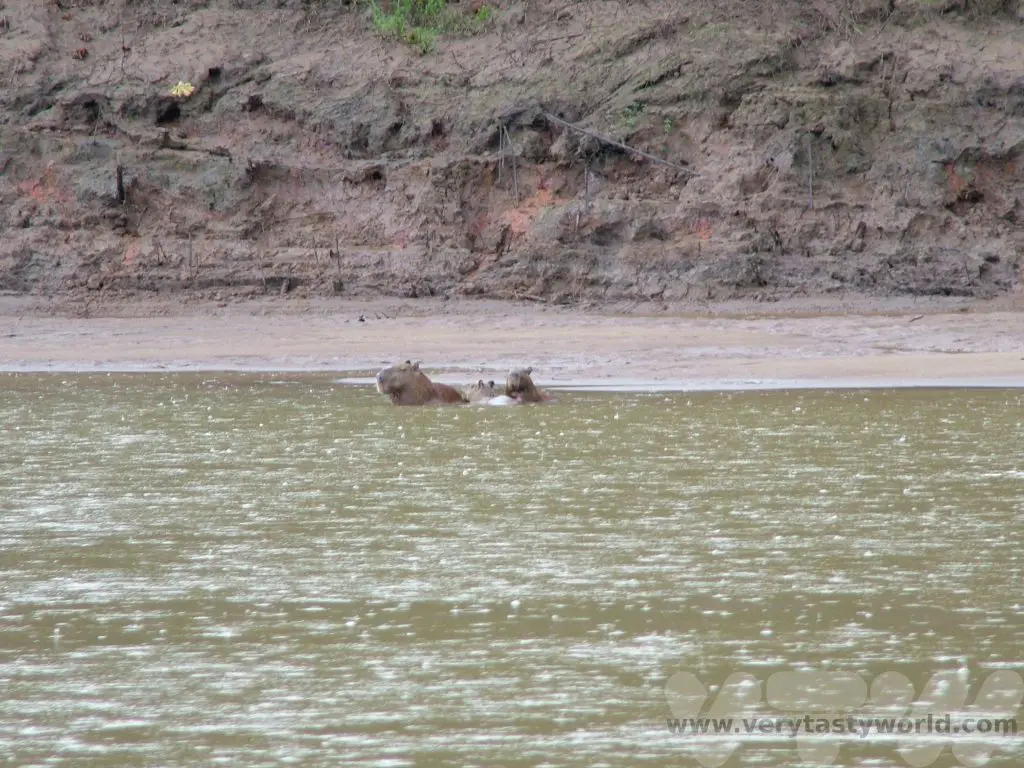
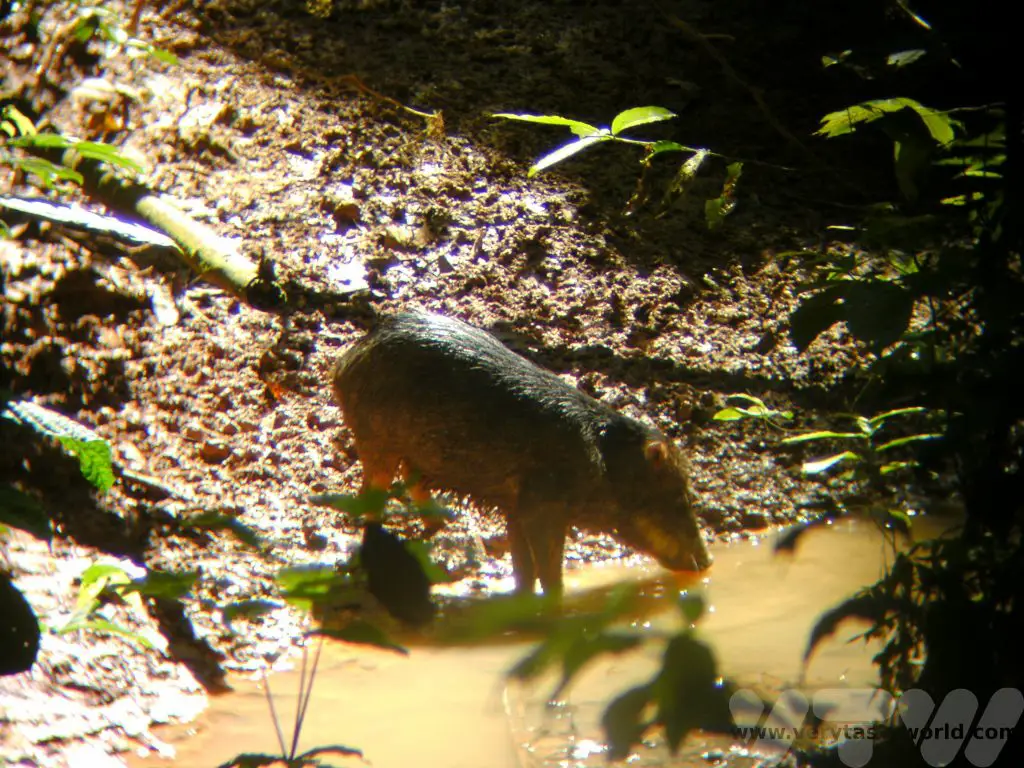
One of the foods eaten by locals is termites. You can find their nests in trees. They’ll come out quickly enough if you disturb the nest. You can let them run onto your finger and just eat them. They taste minty. Obviously make sure you know what a termite looks like; the ants in the jungle bite and their bite is painful.
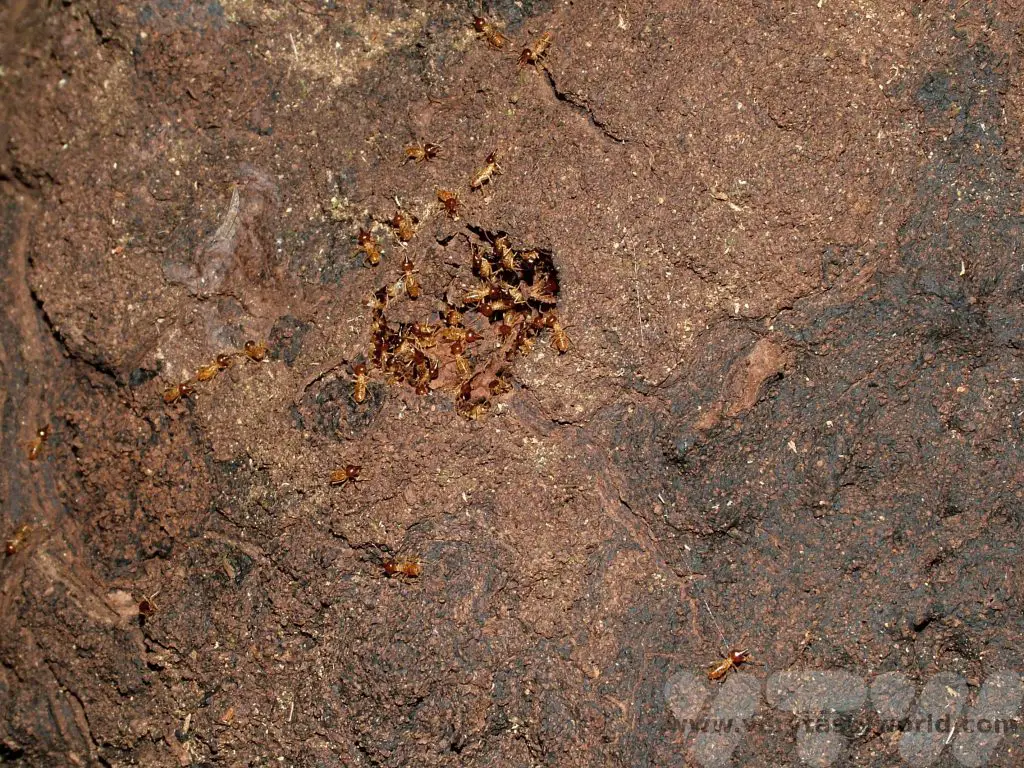
The plants in the Tambopata National Reserve were particularly fascinating. The trees were amazing – so huge that their roots alone were taller than we were, a strangler fig that we could walk inside.
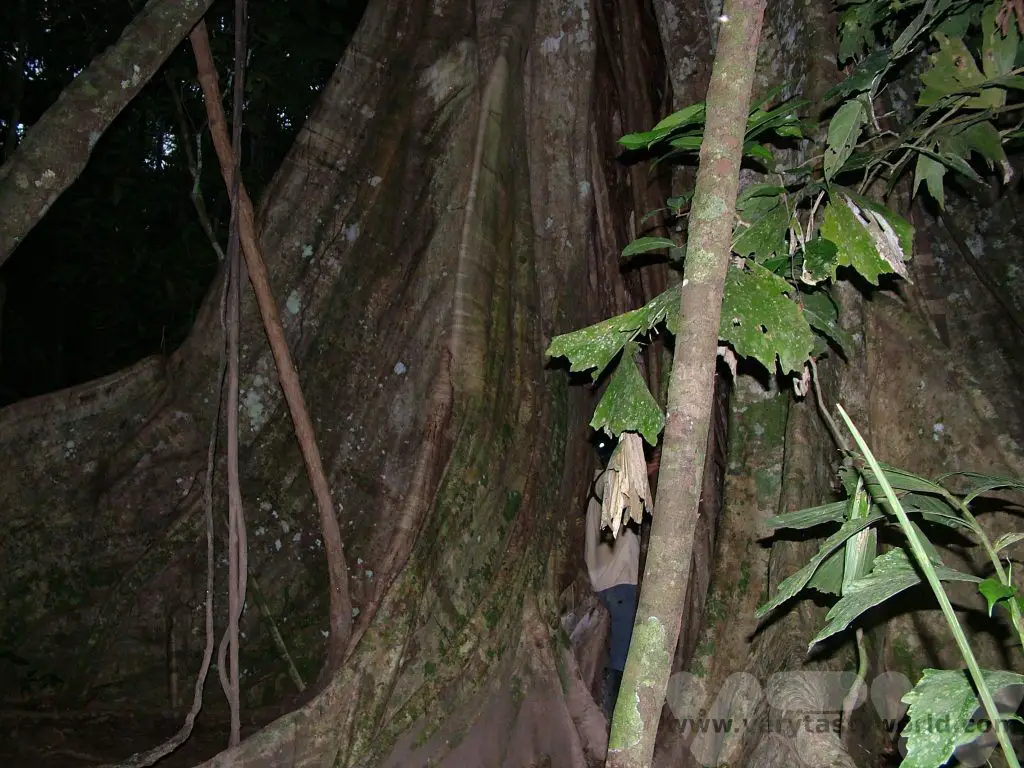
Our guide showed us how the plants are used by the local people. There were leaves that produced a purple dye when you squeezed them, leaves with an underside so rough it could be used as sandpaper, vines that can be woven, vines that are strong enough to swing on (Tarzan style) and quinine bark.
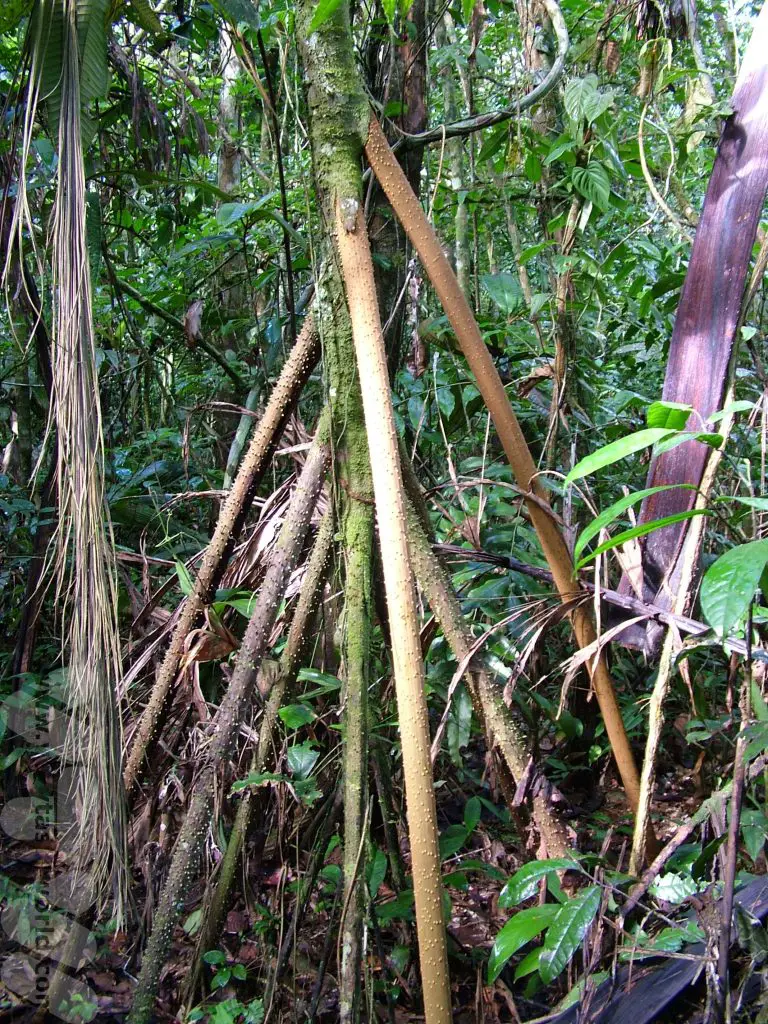
This is a walking tree. It grows straight up but in a jungle where the canopy is so dense that the forest floor is very dark, it needs to ‘move’ to find the light. It does this by growing roots from the stem in a particular direction. Old roots on the other side just die off. In this way the tree can slowly shift across the jungle and grow towards the light. You can see the new root here is a light brown colour – the tree is ‘moving’ to the right.
Medicinal Uses For The Rainforest Plants In The Tambopata National Reserve
We were also given a tour of the medicinal uses for the plants by a shaman. He talked about our perception of plants as ‘alternative medicine’ commenting that these are really natural remedies that have been used for centuries. We ate leaves that made our tongues numb – a natural anaesthetic. He used a variety of plants to cure various ailments, from a natural viagra to a concoction that will dissolve rotting teeth painlessly. There are trees that exude a resin which hardens and can be used as a natural plaster cast to set bones. And the sap from a blood tree will cure simple cuts, bruises and mosquito bites.
The symbiosis in the jungle was amazing: the bullet ant has venom similar to that of a cobra and they say that if you get bitten by one, it feels like being shot. Apparently the pain is excruciating for 24 hours. The best relief for the pain can be found in the shape of a vine that grows on the tree under which the bullet ants nest. This particular vine is pollenated only by bullet ants – the cure located right next to the source.
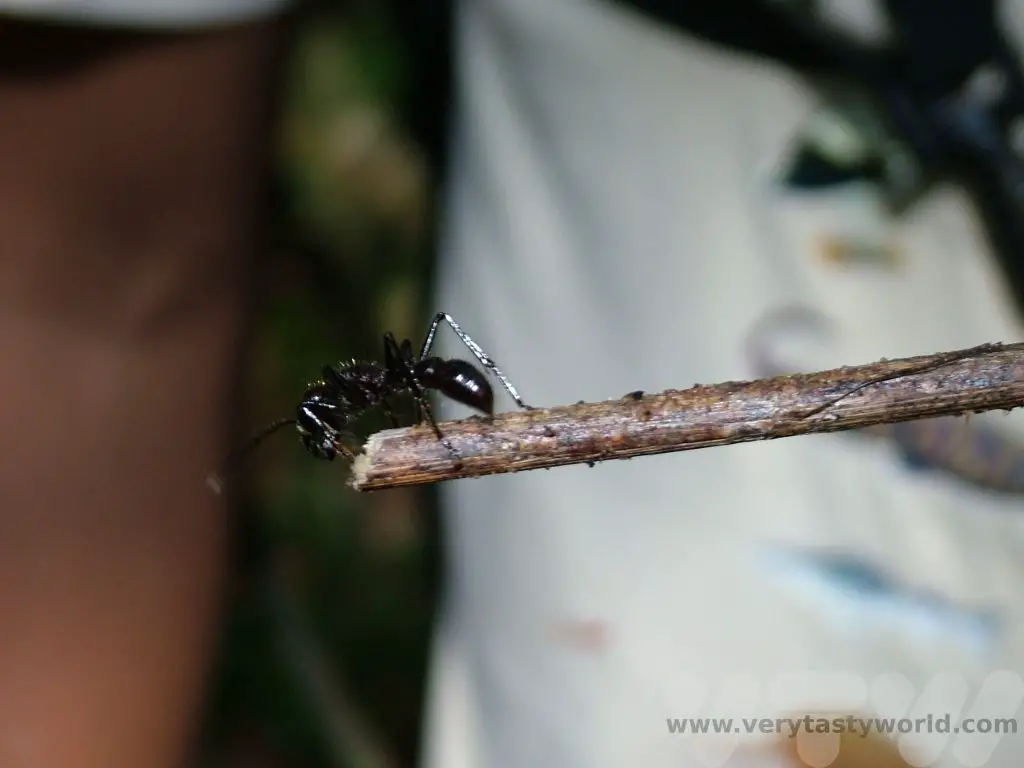
The plants of the rainforest have, unsurprisingly, been used by pharmaceutical companies, many of which extract the active ingredient from the plants, patent them and sell them back to the Peruvians at hyper-inflated prices. Sigh.
The lodge is run in a sustainable way that benefits the local people and environment. 60% of the profits from tourism go back to the local community. These have helped build a secondary school and some of the pupils have been educated there, studied English in Lima and have returned to the jungle to become guides. Local farmers can’t get enough money at the market for their fruit to cover transportation costs, so the lodge buys fruit directly from the farm across the river. We visited the farm and tasted fresh bananas, star fruit (much more tangy than the ones that have travelled halfway across the world), sugar cane, lemongrass, pineapple and more.
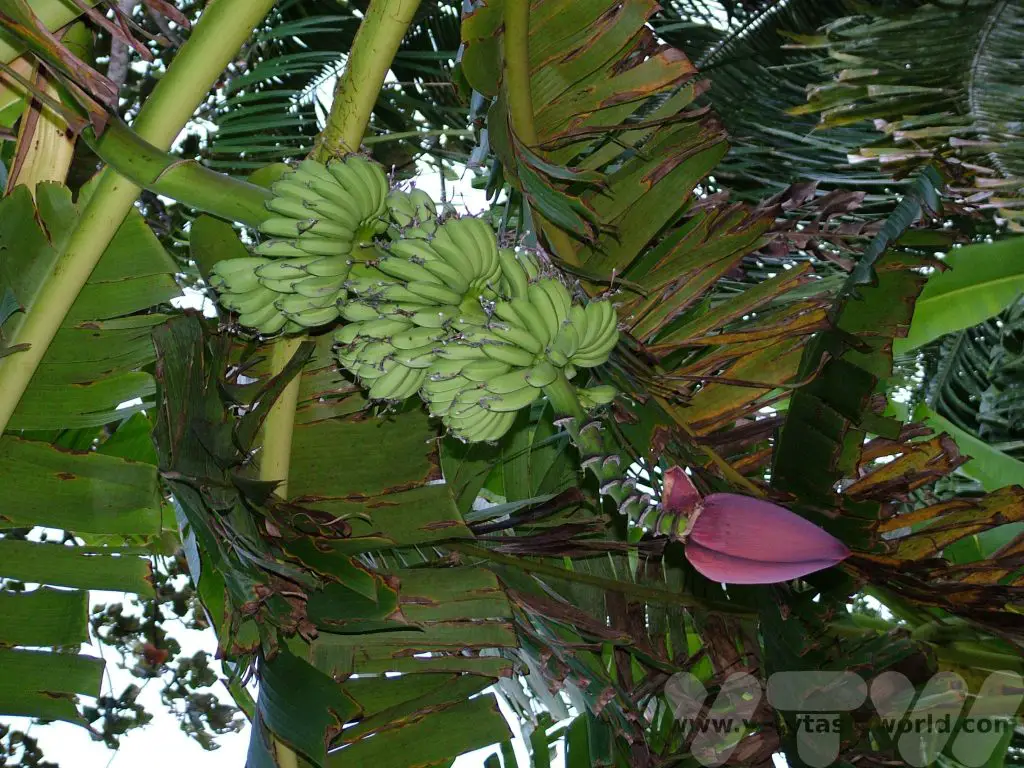
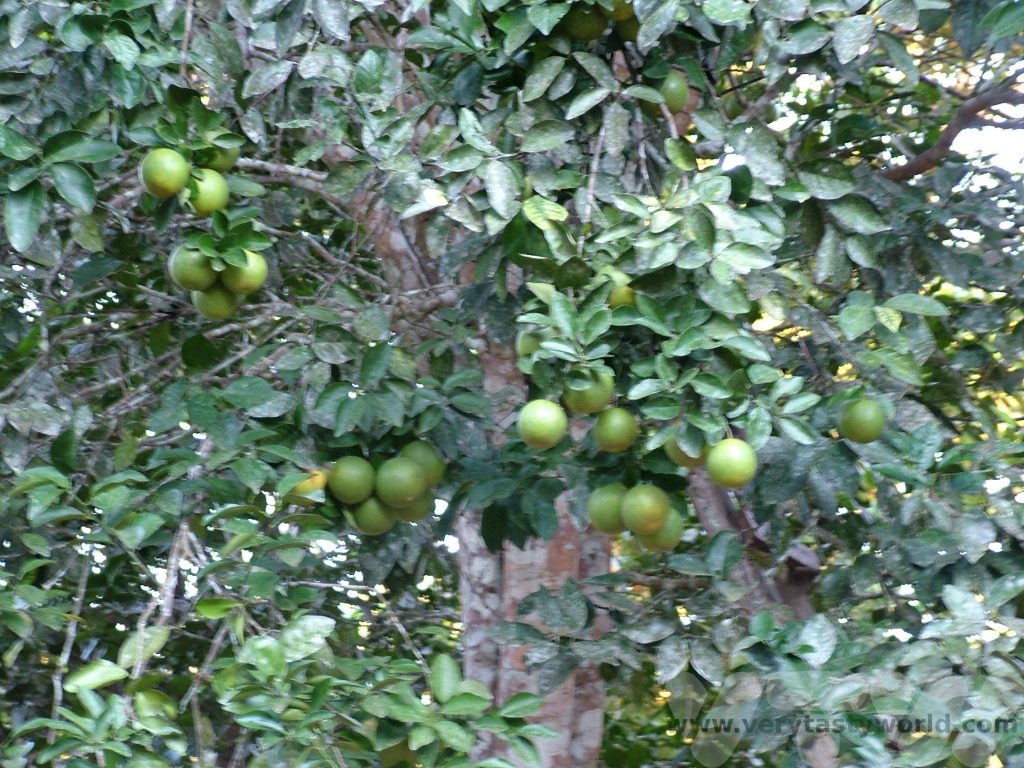
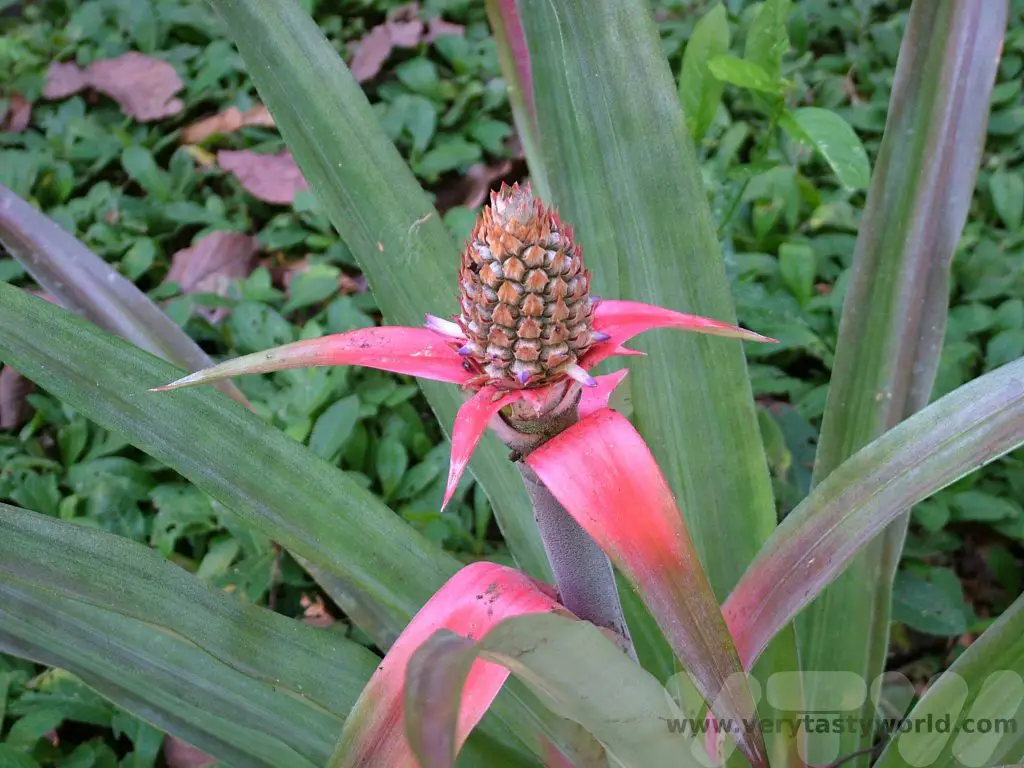
We also followed a brazil nut trail and had a bash at opening the hard pods (which contain about 18 nuts) with a machete. We still have all our fingers.
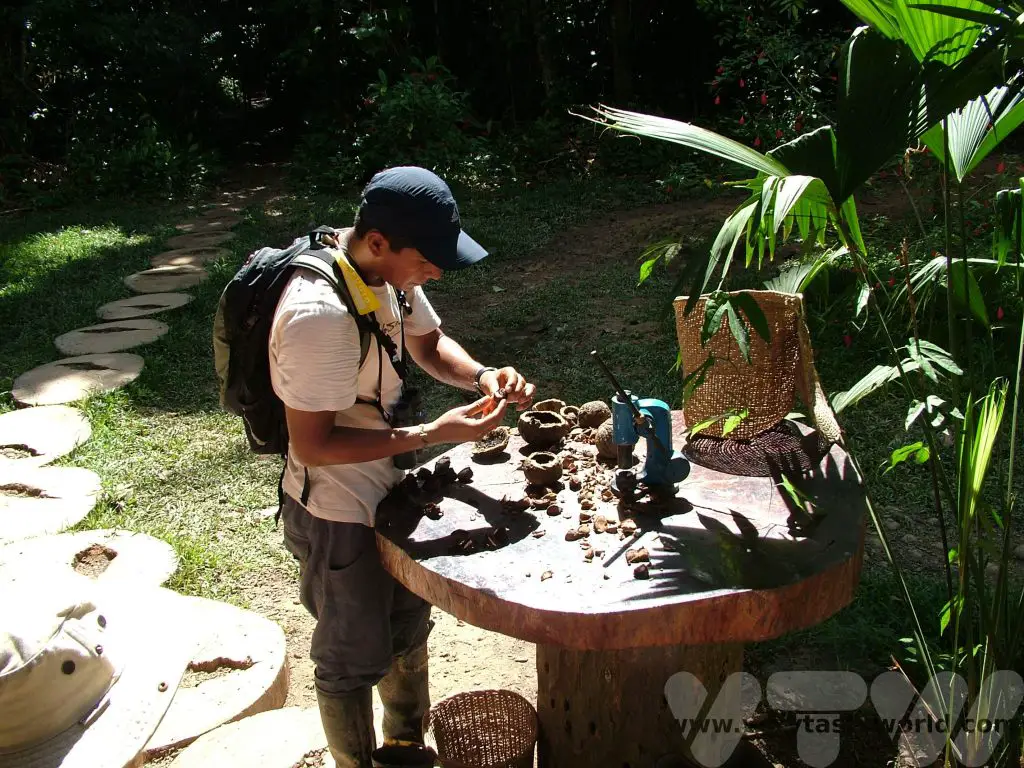
Exploring the jungle was exhausting and elating – a truly fascinating place. And at the end of each day we could relax, watching the sun set over the Tampobata before going to bed. And then we would see whether the possum had beaten us to it.
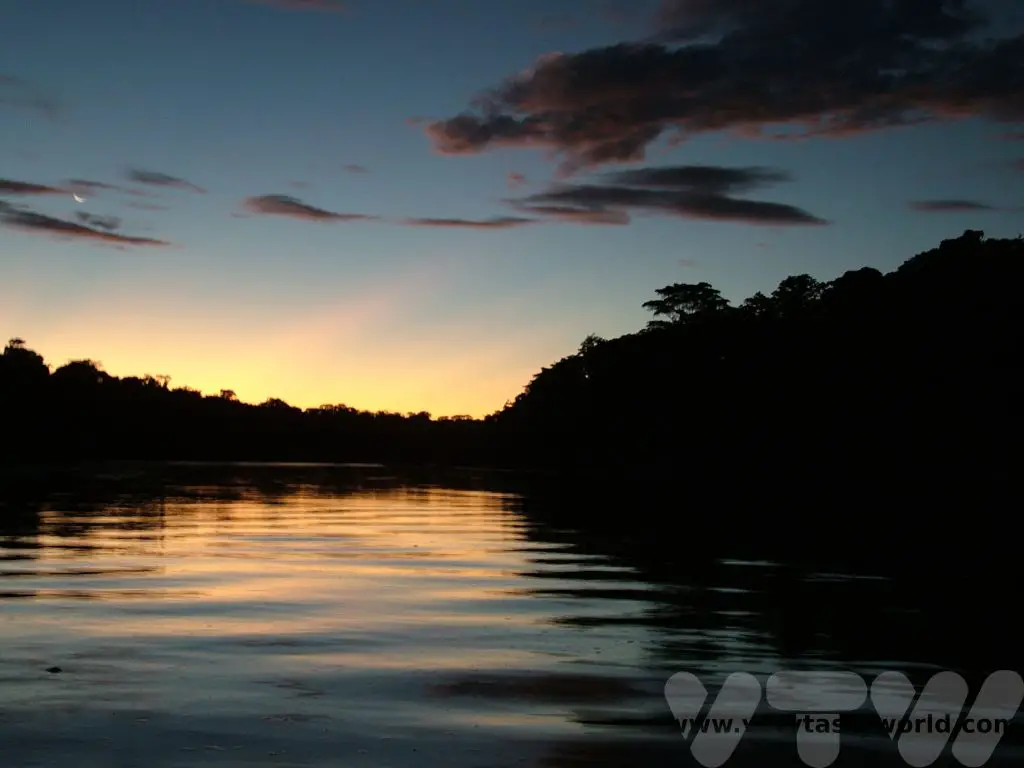
Related Posts You May Enjoy

- Best Time To Visit Machu Picchu 2024 Update
- A 2 Week Patagonia Itinerary
- Day of the Dead in Campeche
- A Galapagos Land Based Itinerary
- RECIPE: How to Make Costa Rica’s Gallo Pinto
- A Tasty Puebla Food Tour
- Costa Rica Wildlife Sanctuary – Caño Negro
- Visit Torres del Paine National Park in Patagonia
- Atacama Desert Itinerary
Boobies (and other birds) in the Galapagos
While most people tend to enjoy a cruise to see the Galapagos Islands they can be a) very expensive and b) not at all fun if you suffer seriously severe seasickness in even the slightest swell. However, it is possible to do land-based tours in these islands and while it’s difficult to avoid boats completely (well, you could, but you would be missing out), there are a number of tours that offer day trips to the closest islands (couple of hours max in a boat) which provide plenty of opportunities to see the amazing wildlife and spend the night at a comfy hotel in a bed that doesn’t move.
Santa Cruz was the starting point for the trip – on landing at the airport on Baltra, having had all luggage checked by the security dogs to ensure that no extraneous organic matter which could upset the delicate balance of the natural environment was present, we headed straight to the port, grabbed a ferry for a very short journey to Santa Cruz, crossed that island by minibus to the southernmost port and got on a boat. The plan was to spend a couple of nights on Isabela then return to Santa Cruz for another five days and take day trips to some of the other islands.
The trip from Santa Cruz to Isabela was bad. We knew the journey was going to be rough when the crew handed out plastic bags to all the passengers. Hint: sit at the back of the boat (outside) on the right hand side going towards Isabela and on the left hand side coming back otherwise you will get wet! Unfortunately these optimal spots had already been taken by other passengers and we had to sit inside the boat on the way out. Two and a half hours of bumping on the waves took their toll, resulting in the use of the sick bag as lunch eaten an hour before made a return visit. Yuck. However, upon landing on Isabela, all nausea vanished. The islands are truly amazing – there is wildlife everywhere – in fact, you have to be quite careful that you don’t accidentally bump into a sealion or step on an iguana. There are loads of trips available and many companies in the town with whom you can make bookings. Make sure you bring swimming gear- most of the trips we took involved swimming or snorkelling at some point. If you need a wetsuit they are available for hire but we found that the water was warm enough that a swimsuit alone sufficed.
Los Tuneles To See The Galapagos Boobies
One of the first trips we did was to Los Tuneles on Isabela island, a lava formation that encroaches into the sea and has the most amazing land/seascape. Amazing arches of lava have formed in the sea. There’s not much vegetation, but cacti have managed to grow there, some of these are several decades old.
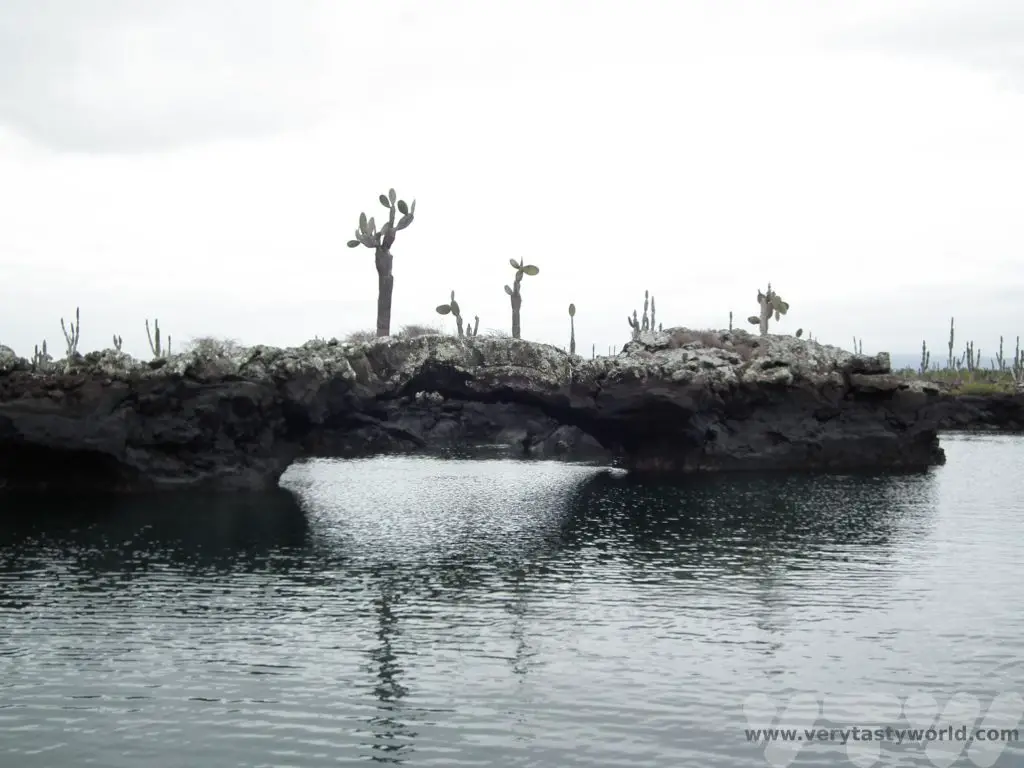
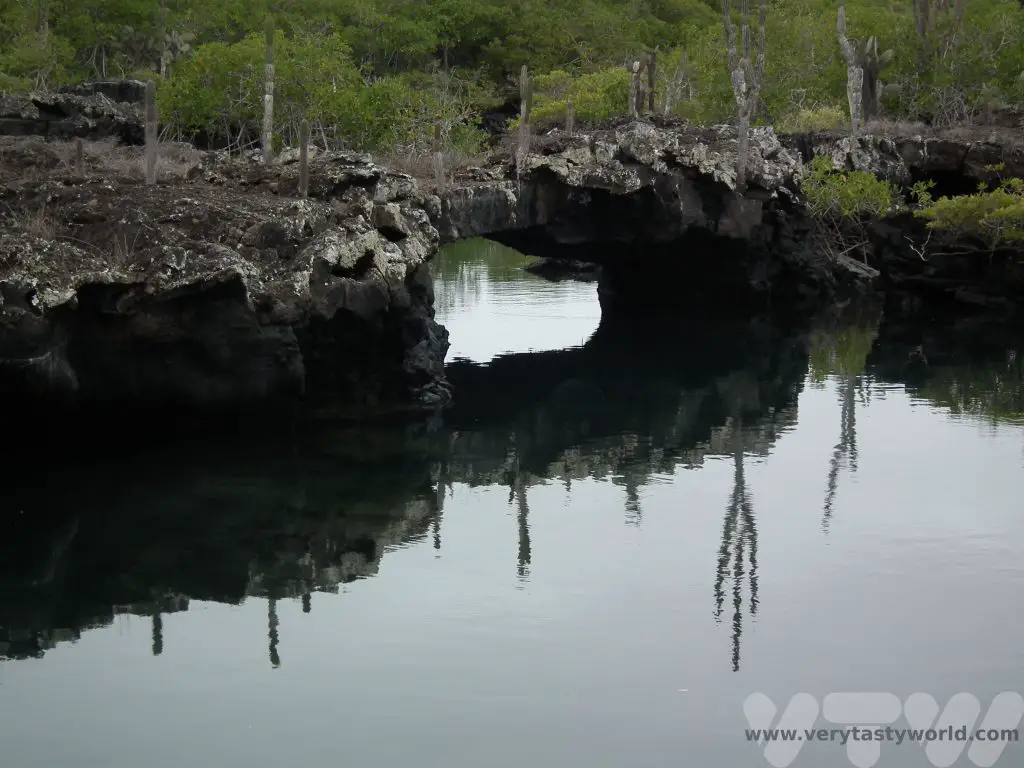
On climbing onto the lava we first encountered blue-footed boobies. This was one bird species we had particularly wanted to see and we were lucky that we were visiting during the breeding season. The blue-ness of the boobies’ feet is derived from the algae they eat, but it also forms a significant part of their courting ritual.
The male makes a great display of showing his blue feet to his partner. One foot at a time.
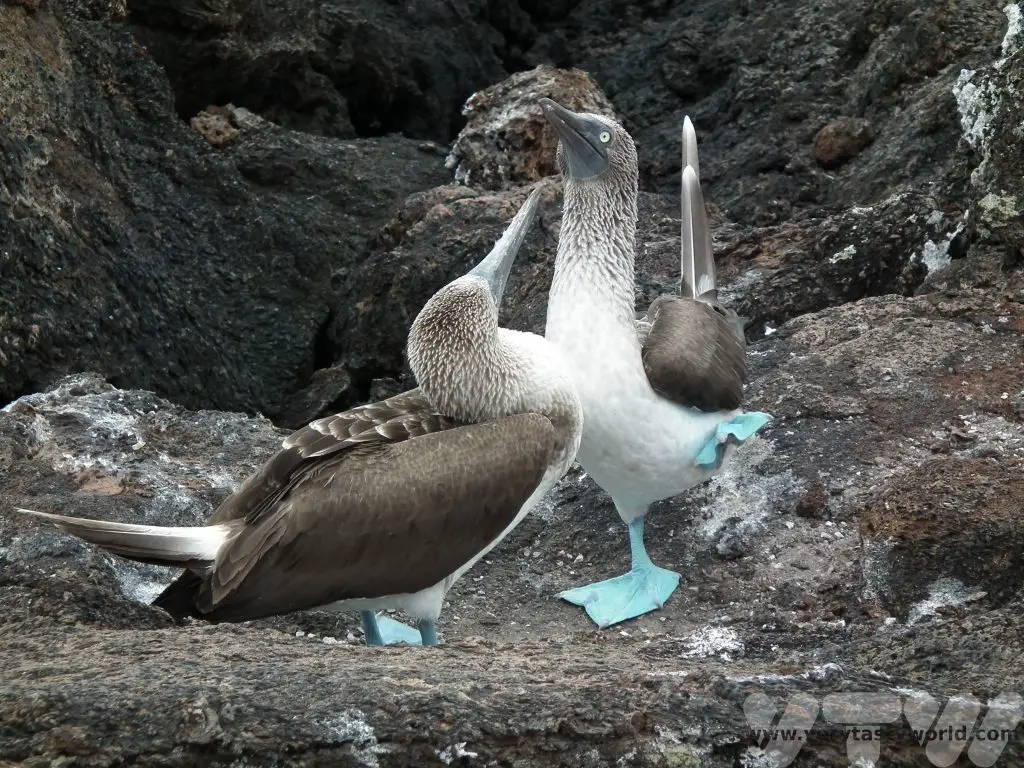
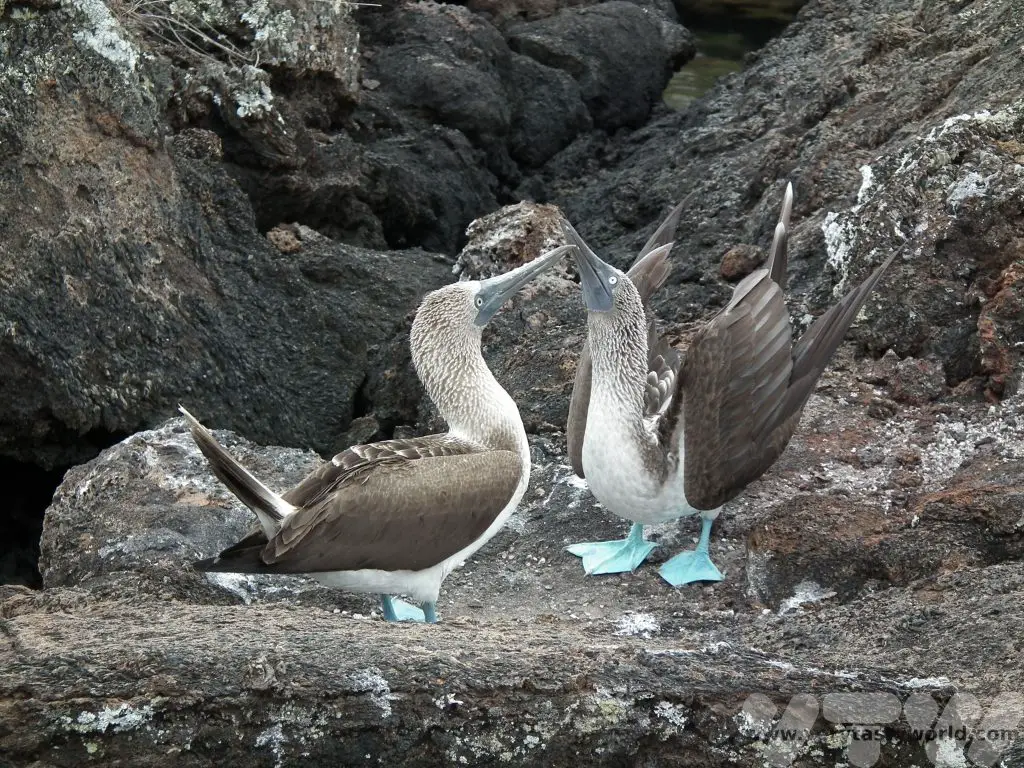
He also shows his impressive wingspan to demonstrate what a catch he really is.
She watches on. His voice is a whistle, she honks. And if she is impressed, she will honk her approval.
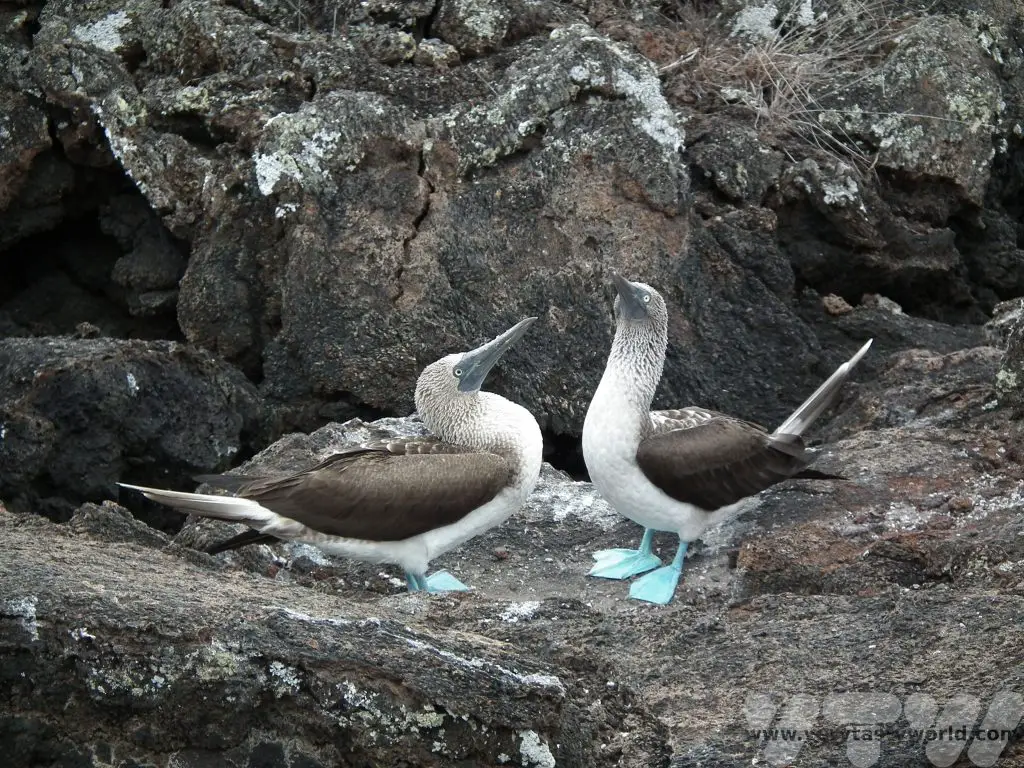
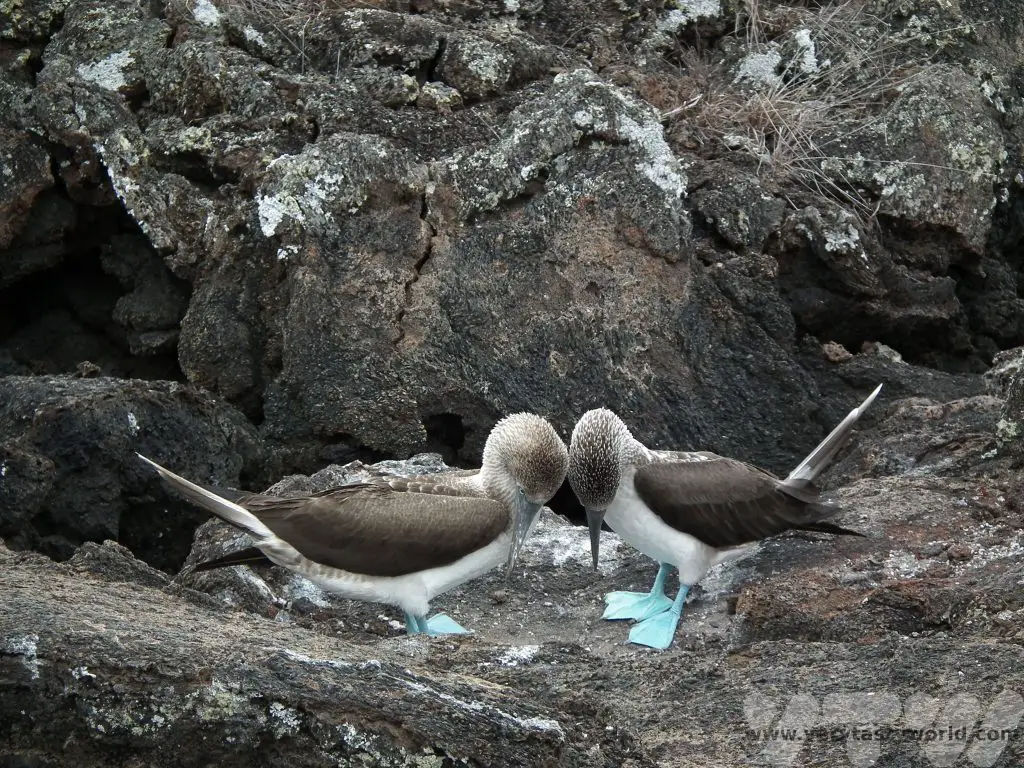
It must be love.
Boobies And Frigates On North Seymour
We encountered many Galapagos boobies on other islands too. These were on North Seymour, an island about an hour’s boat trip (on much calmer seas) away from Santa Cruz. This female was completely unperturbed at the tourists taking photos of her as she incubated her eggs.
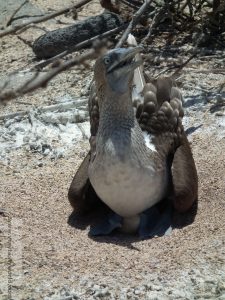
Sometimes you do wonder what the wildlife thinks of all the tourists.
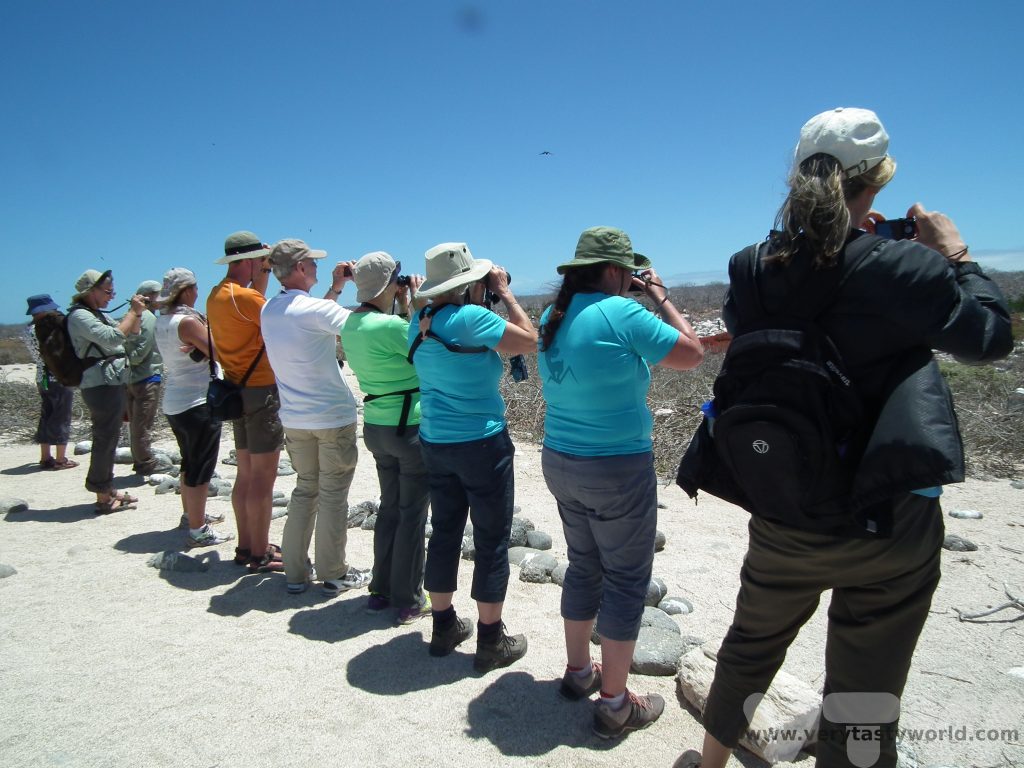
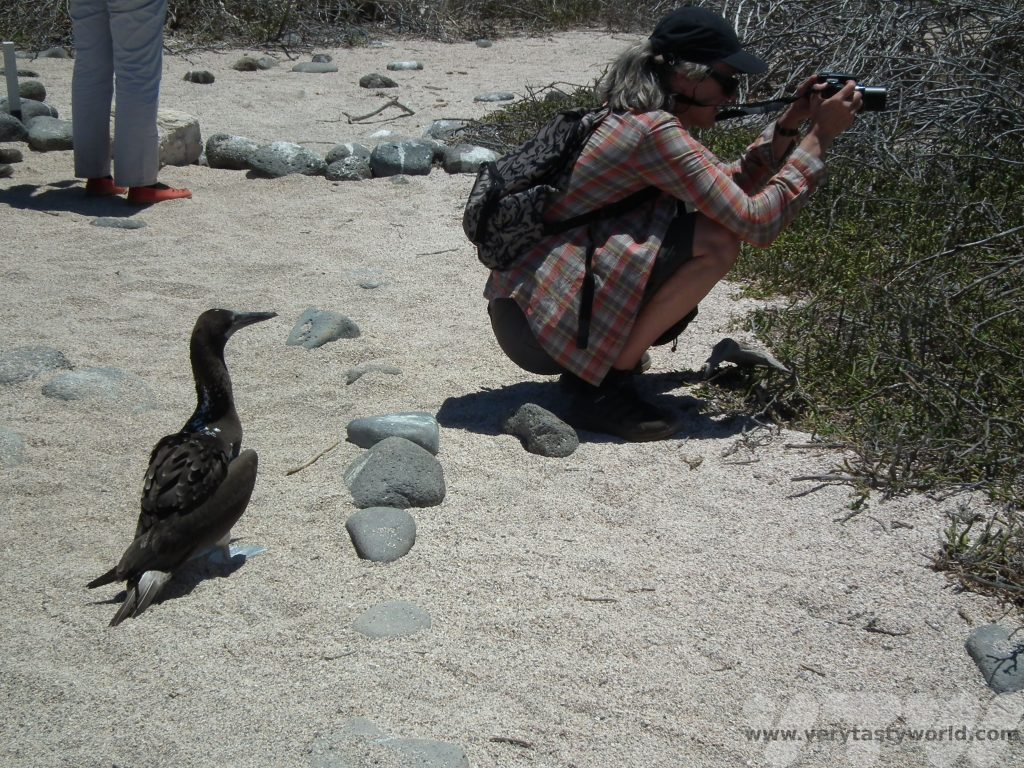
The Galapagos boobies are wonderful birds. The name derives from the Spanish word “bobo”, which means “stupid” or “clown”. The great thing about Galapagos is that you can get so close to the animals as they have absolutely no fear of humans. This male challenged Colin to a contest of ‘who has the blue-est feet.’ Of course the booby won and Colin was deemed to be the beta male of the encounter.
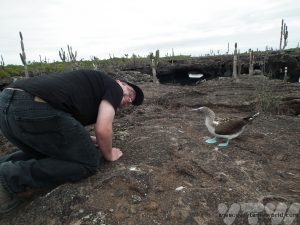
On North Seymour we also saw the magnificent frigate birds. Which were magnificent. And great. ‘Magnificent’ and ‘Great’ being the two species of frigate birds. And they really are spectacular. You see them soaring all over the Galapagos islands, following the boats as we sailed across the sea.
Again, because we visited during the mating season we were able to see the male frigate birds trying to tantalise potential mates with their amazing scarlet throat pouches.
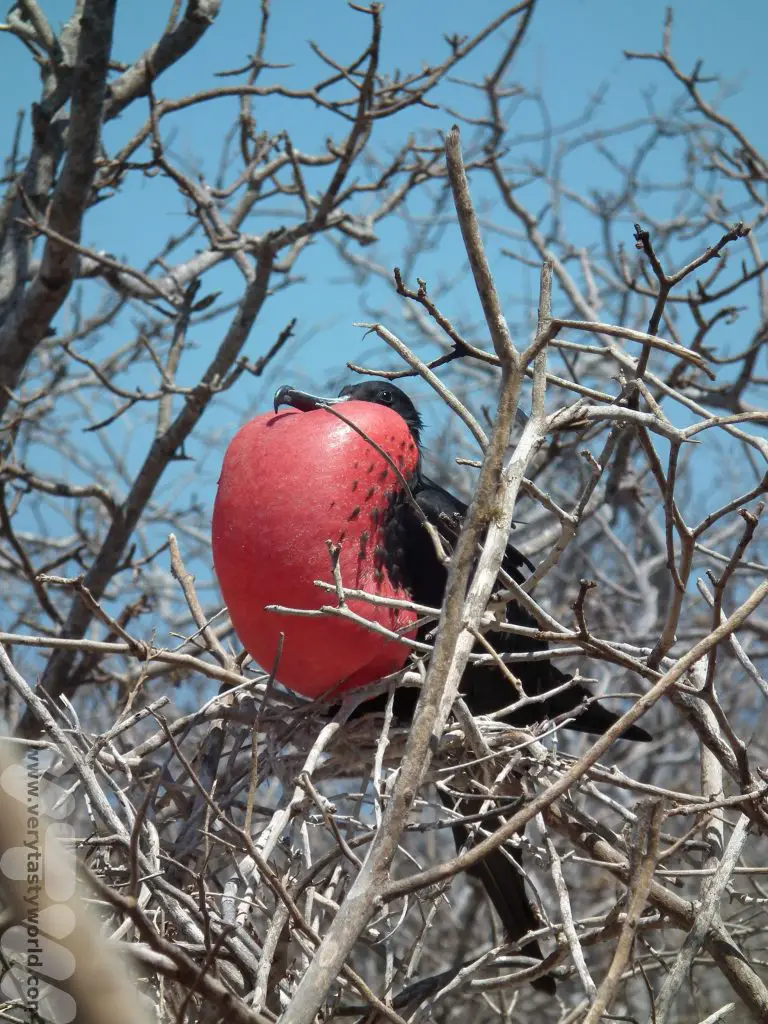
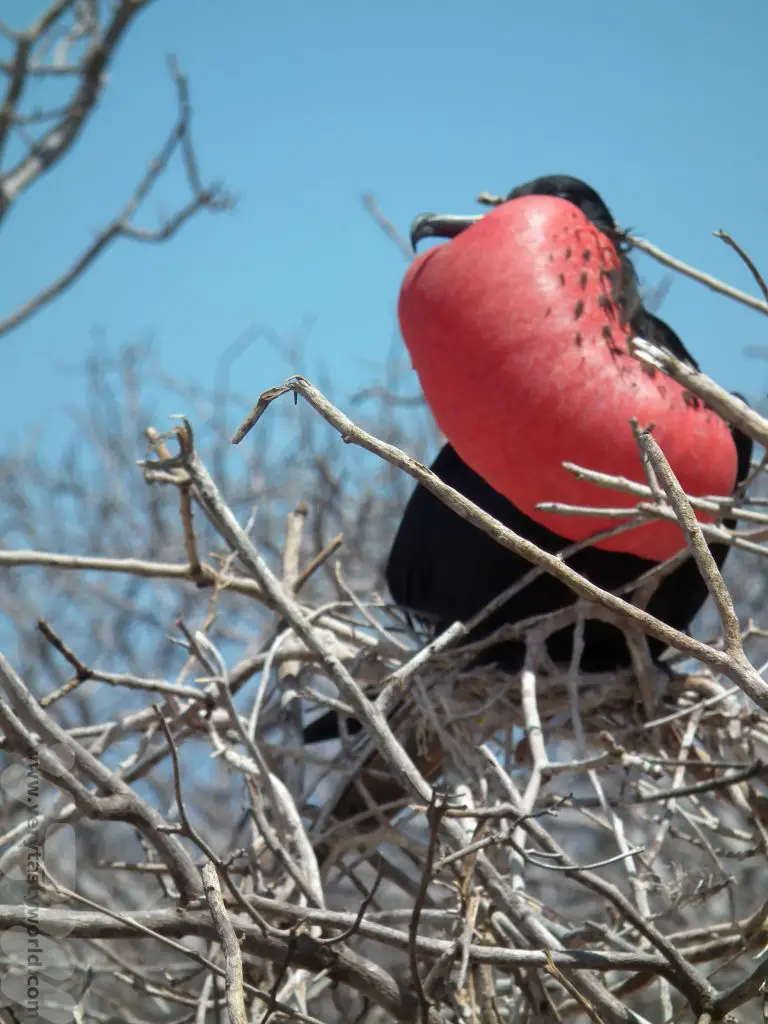
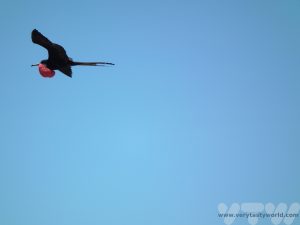
The females have less conspicuous markings.
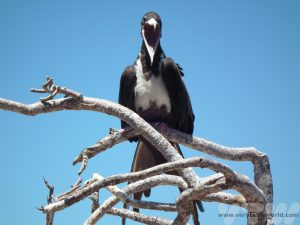
The main town of Puerto Ayora on Santa Cruz has a row of restaurants lining the seafront. Over the road is the fish market. It’s very pleasant to be able to relax after a long day’s excursions, drinking a cocktail or three and watching all the action across the road. The Galapagos are so special that you will even see wildlife there – frigate birds, pelicans and even sealions can be found lurking as they are fully aware that they might pick up a tasty fish head or some delicious entrails.
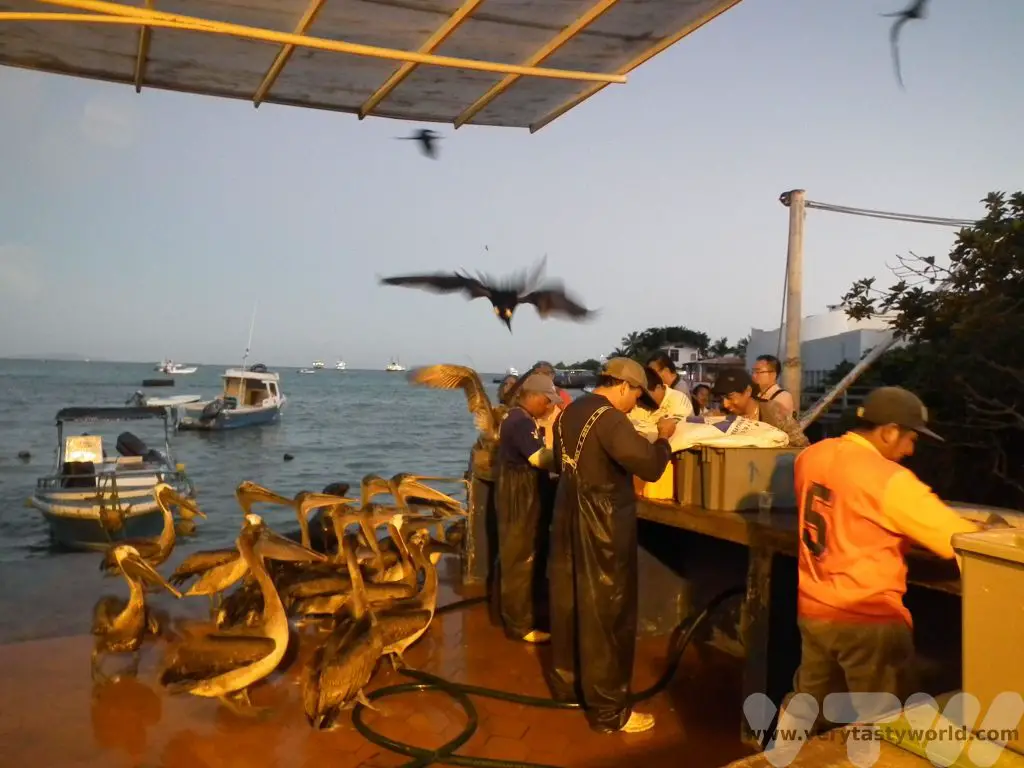
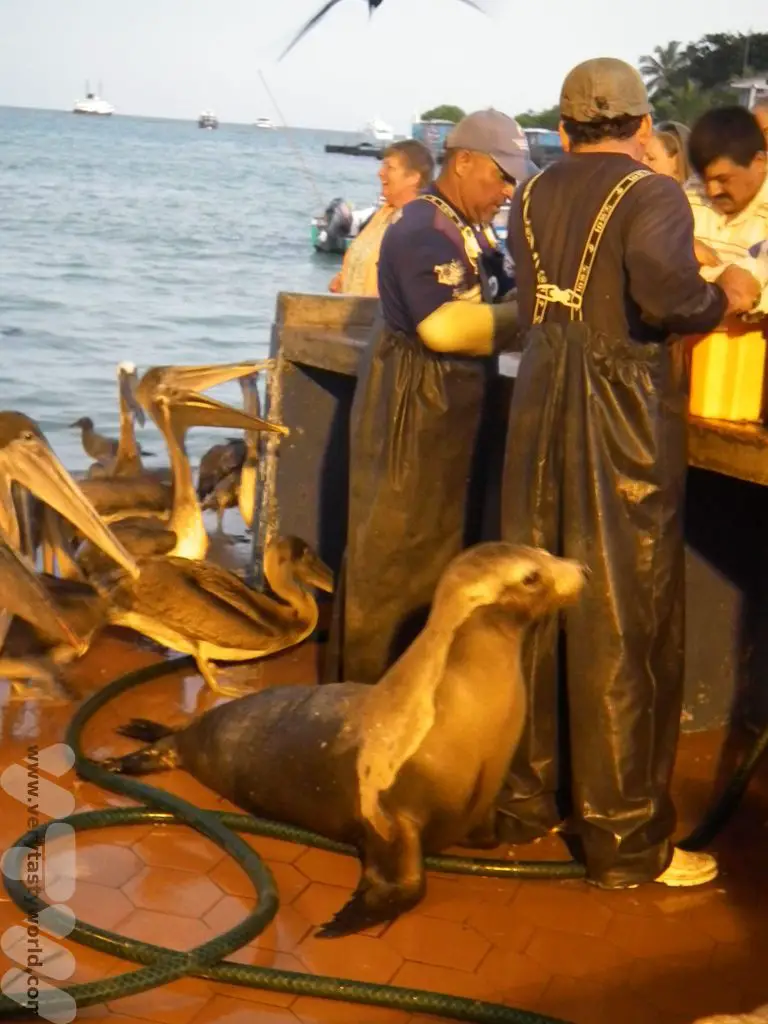
Related Posts You May Enjoy

- Best Time To Visit Machu Picchu 2024 Update
- A 2 Week Patagonia Itinerary
- Day of the Dead in Campeche
- A Galapagos Land Based Itinerary
- RECIPE: How to Make Costa Rica’s Gallo Pinto
- A Tasty Puebla Food Tour
- Costa Rica Wildlife Sanctuary – Caño Negro
- Visit Torres del Paine National Park in Patagonia
- Atacama Desert Itinerary
Perito Moreno Glacier Tour, Patagonia
The Perito Moreno glacier, located around 80 kilometres away from the Argentine Patagonian town of El Calafate and inside Los Glaciares National Park, is one of the area’s most famous attractions. The Perito Moreno is unusual in that it is one of the few glaciers in the world that is still advancing. Most are shrinking as a result of climate change. There are plenty of options for taking a Perito Moreno glacier tour.
When I was studying geography many years ago, human geography always seemed to be less interesting (counting different types of shop in the central business district of a small town) compared with physical geography and meteorology, where we learned about about oxbow lakes, karst scenery, lapse rates and glaciation. These geographical features seemed to be exotic and exciting and, well, very different from anything to be found in suburban Surrey. To be able to see a glacier up close – and actually walk on it – was an ambition fulfilled.
Getting to the Perito Moreno Glacier
Although it’s possible to hire a car in the area, and we did this for our visit to Torres del Paine in Chilean Patagonia, we were generally travelling on buses through the region, which was a convenient and relaxing way to travel. So there are loads of tour operators in El Calafate who can arrange a trip to Perito Moreno. It’s about an hour and a half journey to the glacier from the town and most operators can arrange a pickup from your accommodation.
You enter Los Glaciares park and will have to pay the entrance fee which usually isn’t included in the price of the tour. The park website has details of ticket prices and you can also pre-book them online.
There are choices for exploring the glacier – you can walk along an excellent viewing trail but it is also possible to don crampons and undertake a trek on the glacier. There’s the Big Ice for hardy young souls, where you’ll spend about 8 hours on the ice and traverse a wide section of glacier, or the Little Ice which is a taster for people who are less intrepid. Or just old – when we visited there was a rule that you were not allowed do the Big Trek if you were over 45 years old. This rule has now changed but it is important that you are physically fit and don’t have any mobility issues.
If doing the glacier walk, you’ll be taken to a small ferry and will then cross the lake. It takes about half an hour and the view of the glacier is wonderful. There’s a full briefing available in English and Spanish and you will be accompanied on the glacier by several experienced guides.
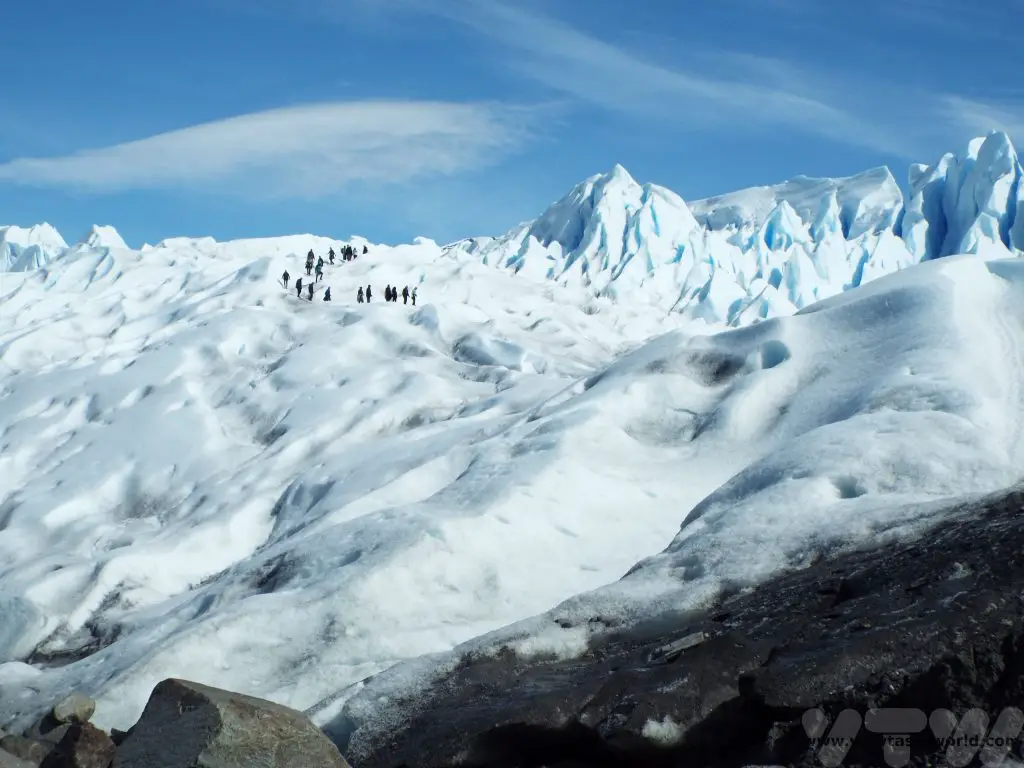
Little Ice Trek On The Perito Moreno Glacier
Even if you’re too old for the Big Ice, the Little Trek is still a marvellous experience. You need to wear a long-sleeved top and bring gloves because the ice is surprisingly sharp (it’s not like fluffy snow) so you don’t want to hurt your arms or hands if you fall over. Sturdy shoes are essential.
You’ll be loaned some crampons, spikes that strap to your shoes (hence the need for good footwear) which will enable you to walk on the ice without slipping over. They’ll be fitted by people who know how to fit crampons and this will ensure your safety on the ice.
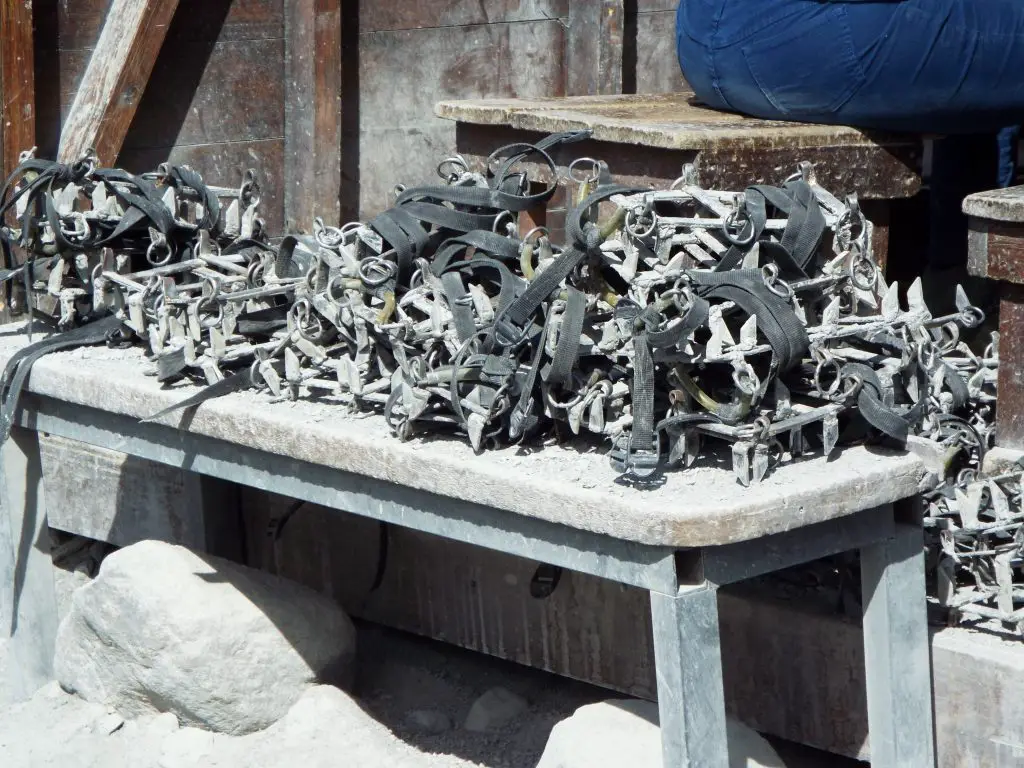
Crampons take a little bit of getting used to, especially when walking downwards on the ice. When walking straight or uphill, just walk firmly, keeping your legs slightly apart, about the same width as your shoulders, making sure the spikes embed themselves into the ice. When walking downhill, keep your feet facing forward, again with legs slightly apart and walk steadily. Opening your feet out penguin style or trying to walk downhill sideways, like a crab, doesn’t work.
Once on the glacier there are some amazing sights.
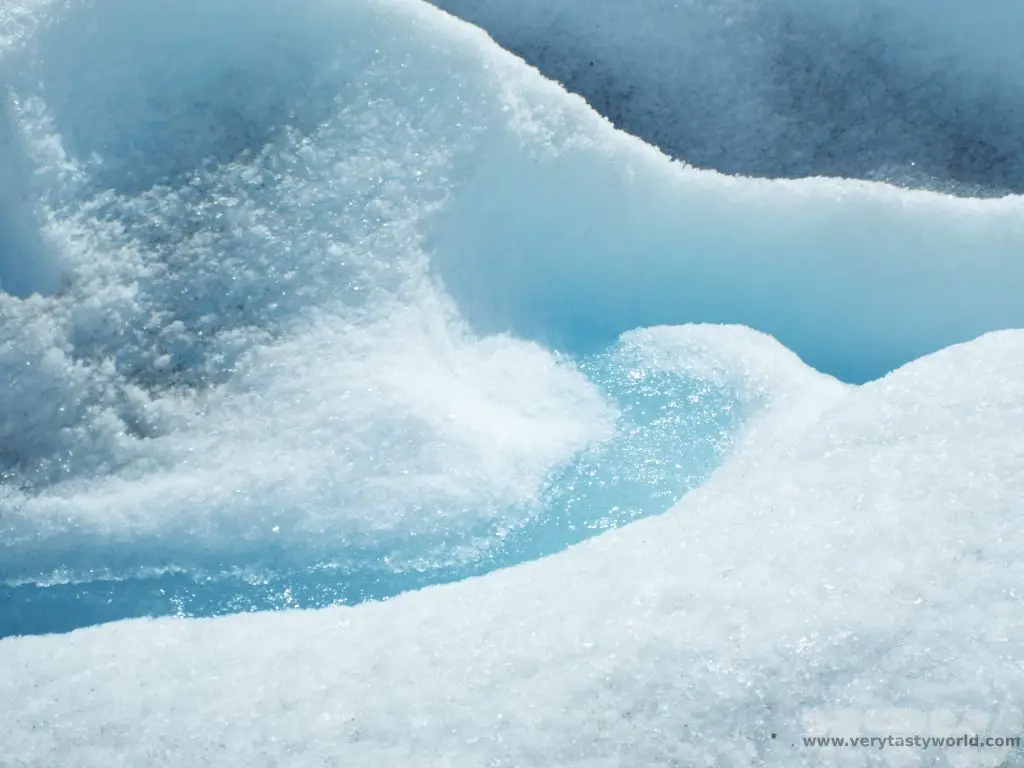
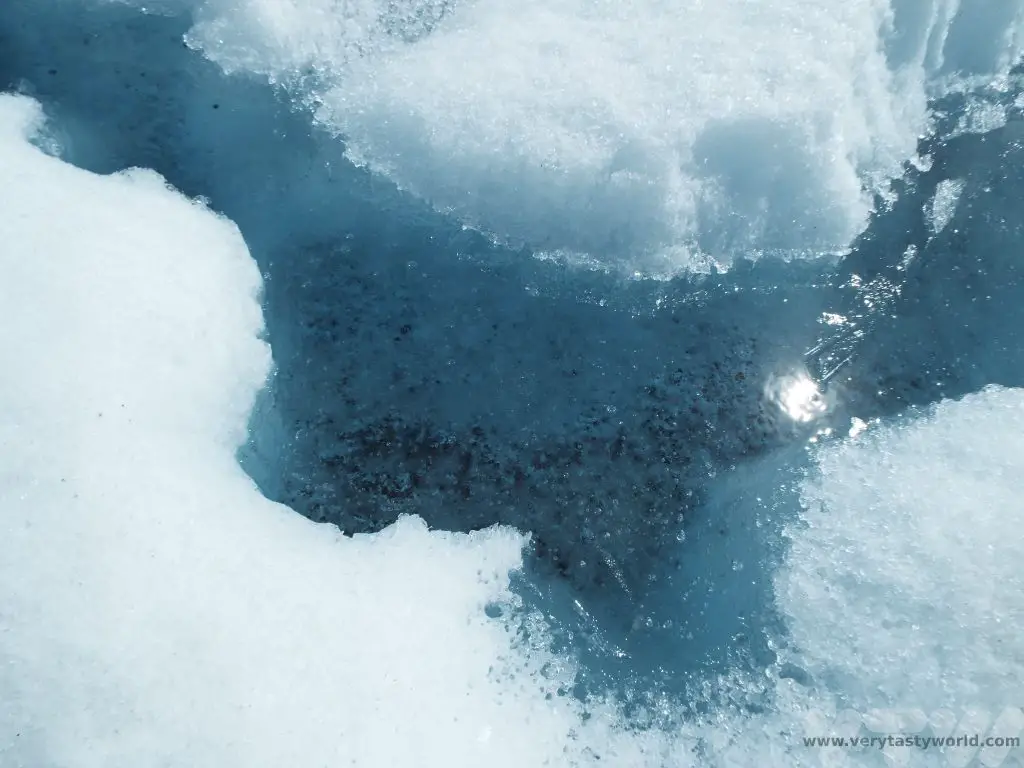
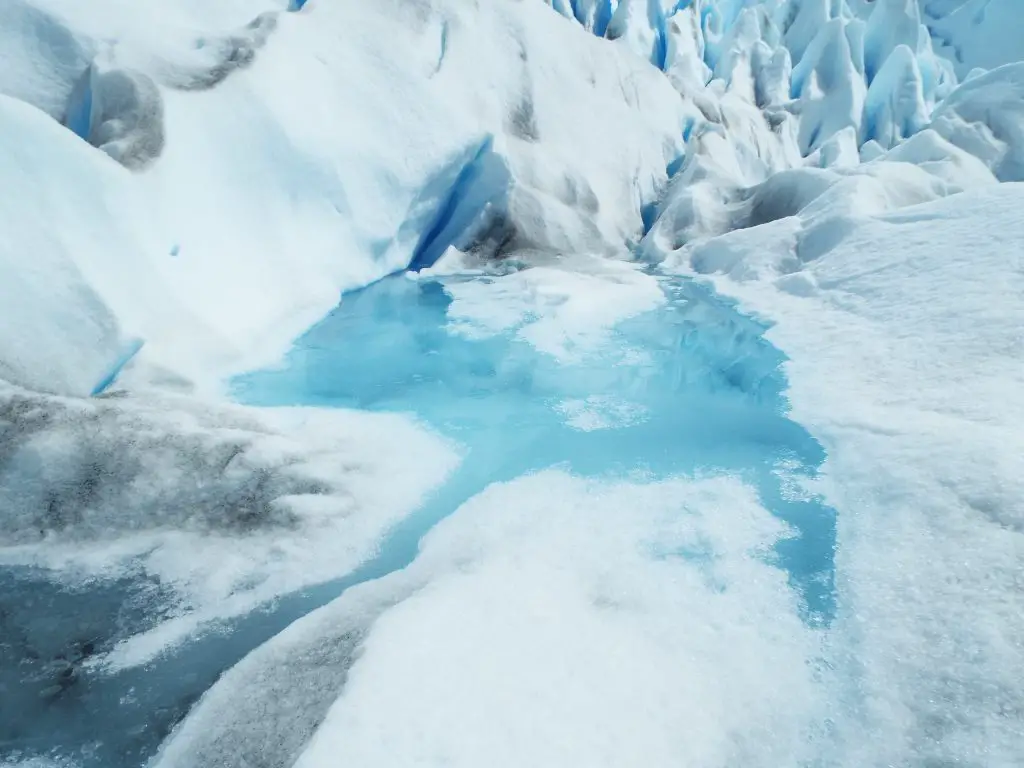
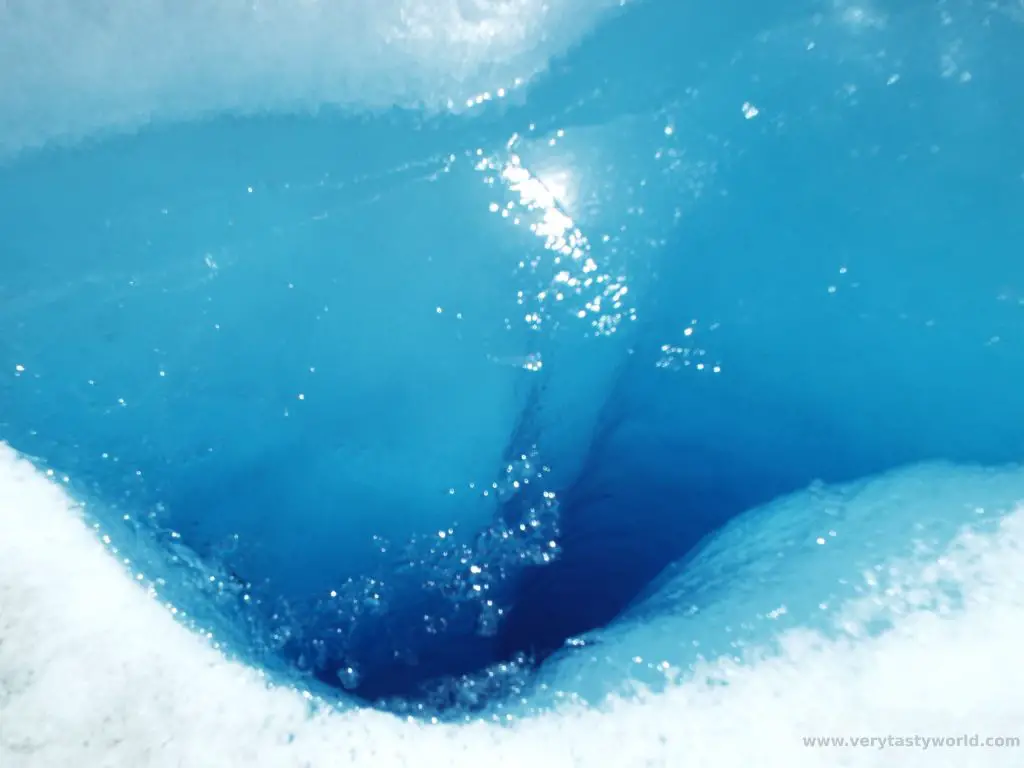
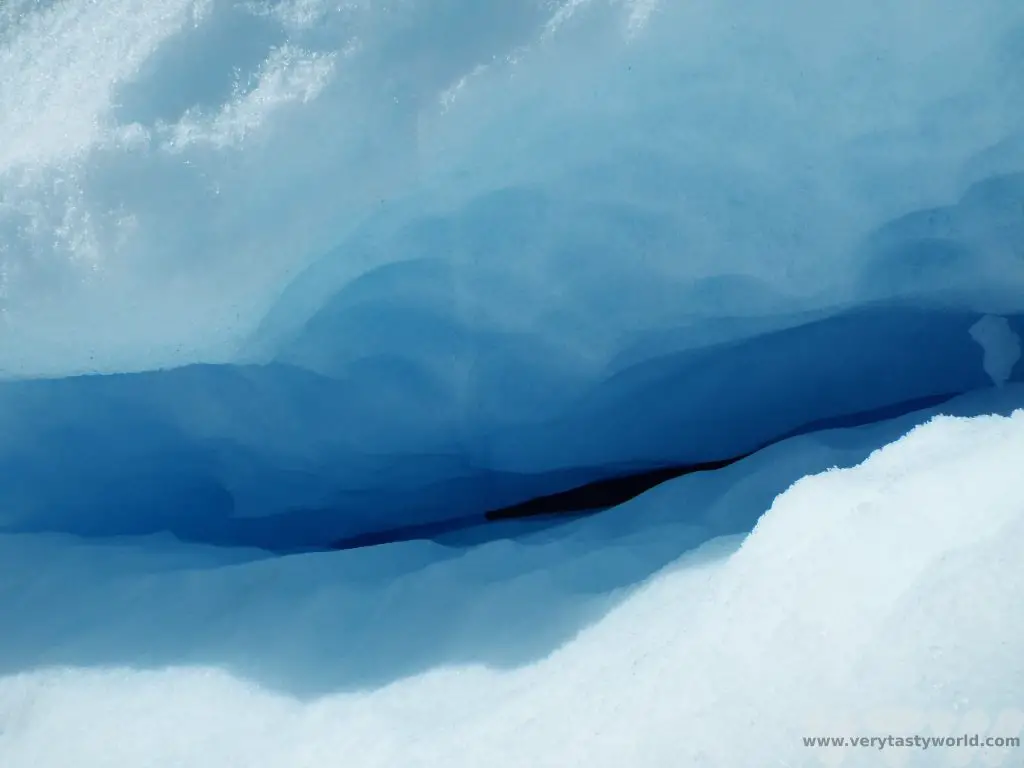
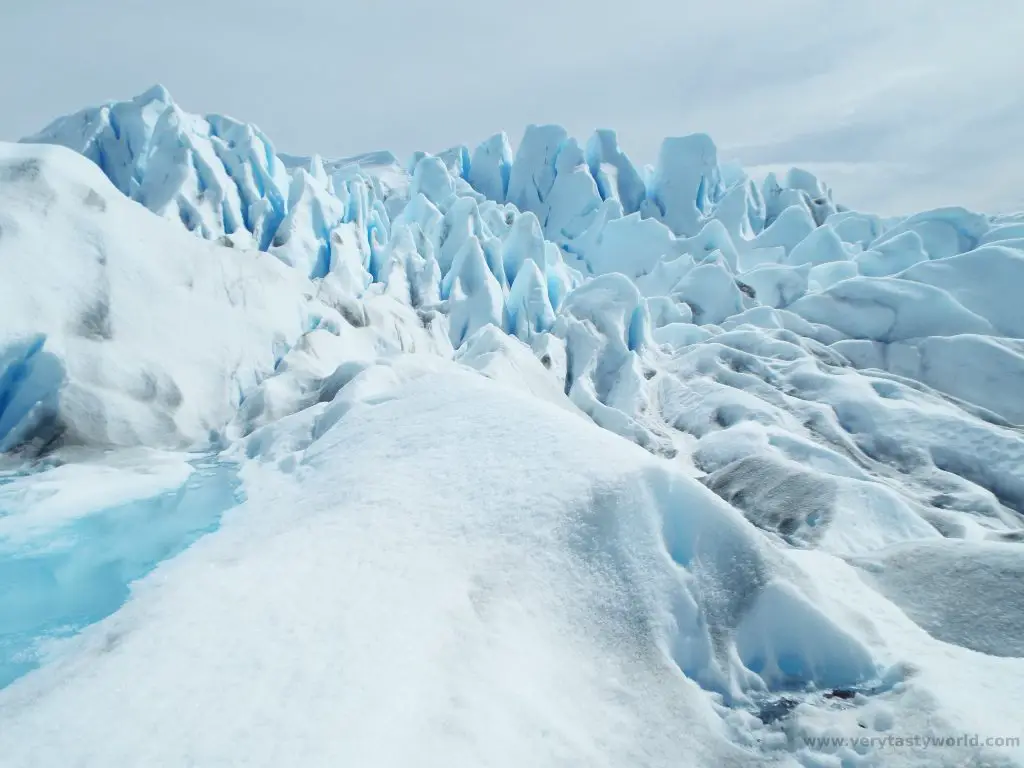
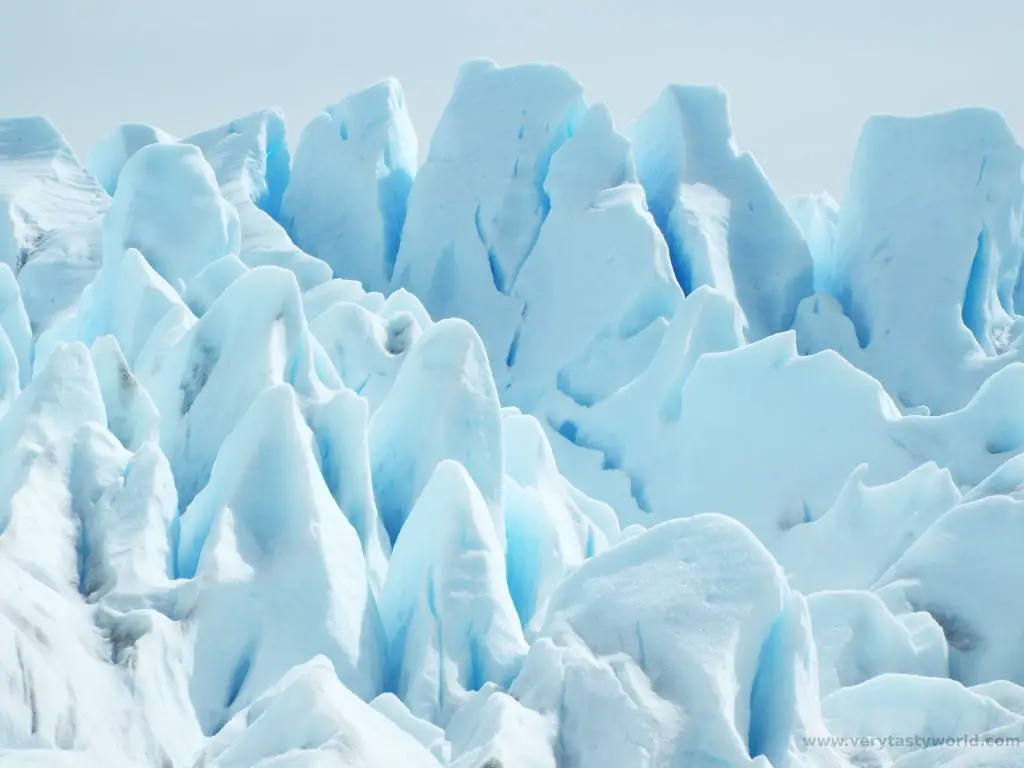
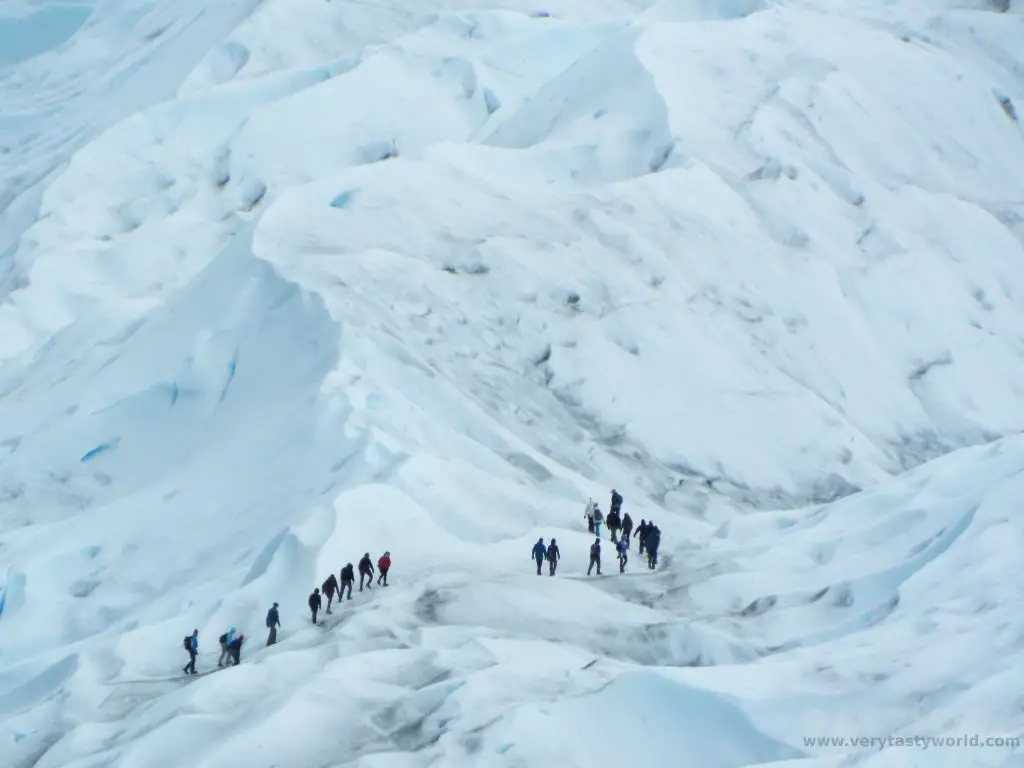
A Treat At The End Of The Trek
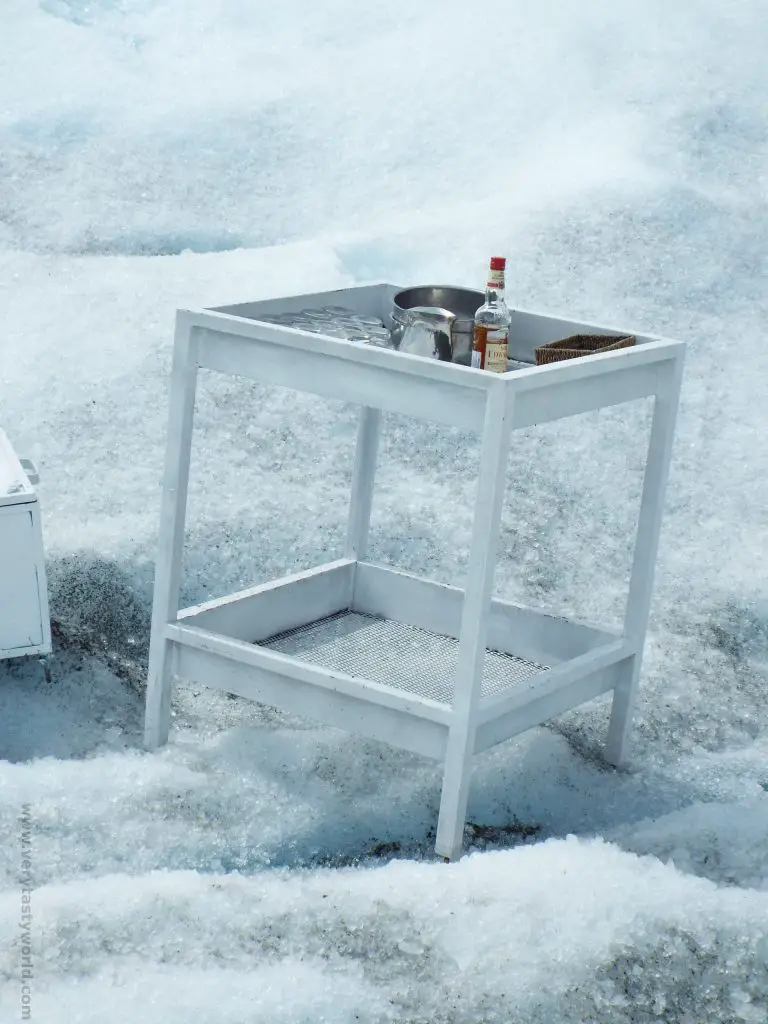
At the end of the trek there is a table, and on that table is a bottle.
Yes, the end of the trek offers a warming whiskey on the rocks, the rocks, of course, being large chunks of glacial ice.
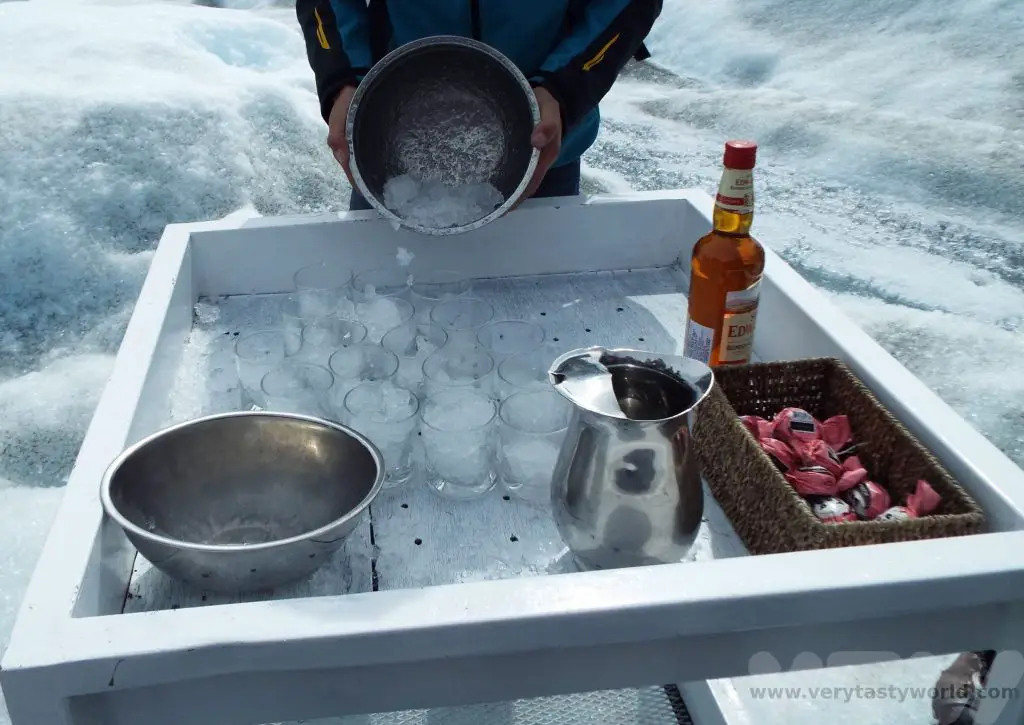
Fire and ice. Fortunately, it’s close to the edge of the glacier so you can stagger off in your crampons after enjoying a tipple.
Perito Moreno Glacier Tour – The Boardwalk
When visiting the Perito Moreno glacier there’s also a lovely walkway on the other side of the glacier to stroll along and see some amazing views. We took the ferry back to the other side and enjoyed walking along the boardwalk.
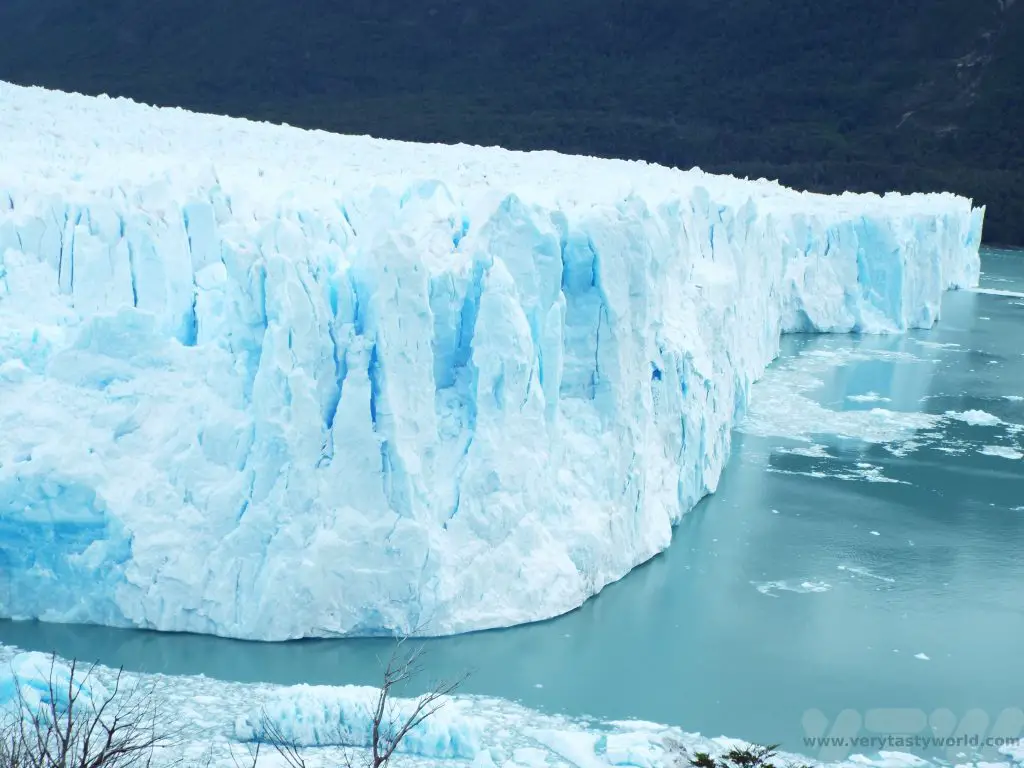
As the glacier advances, it cuts off part of the lake it moves across, effectively creating a dam. Over time, the water pressure causes this ice bridge to rupture and large parts of the glacier calve off.
The last rupture was in March 2022. It is difficult to predict when a rupture is going to happen as there isn’t a specific frequency, so you can’t really plan a trip around it. Apparently they are more likely to take place in winter but you have to get lucky to see one. There is plenty of video footage of past events available and it looks truly spectacular! (This photo was taken some months after the rupture in 2018.)
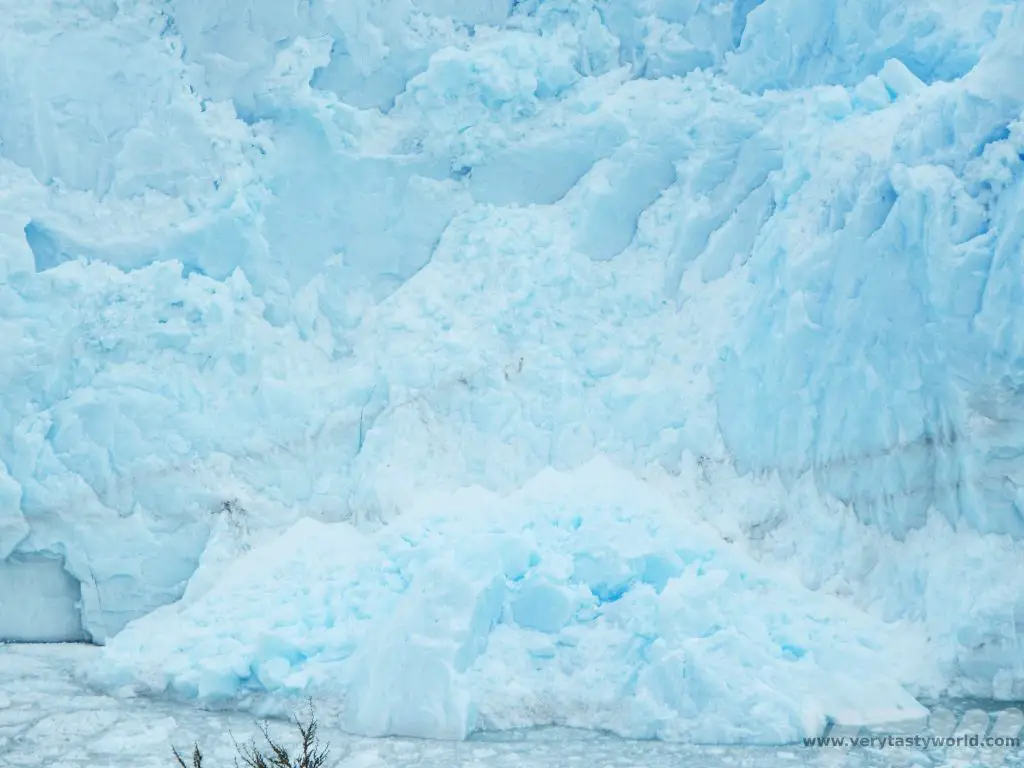
Even if you’re not around to see the rupture there are still likely to be opportunities to see chunks of glacier calve away from the main ice. You’ll see it first. A lump of ice will fall into the water. It looks pretty small from a distance but is probably a fairly large piece. Then you hear the noise – it’s a loud cracking sound, like a shotgun.
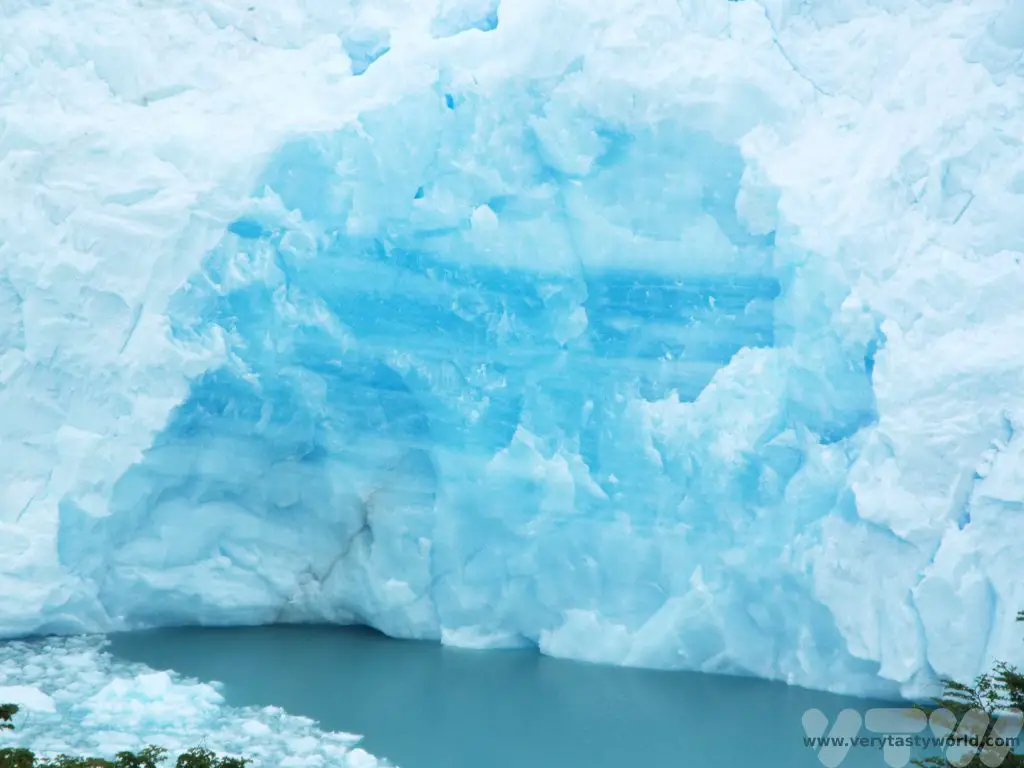
Our trip was a full day tour, so we took a packed lunch for scoffing immediately after our trek. It meant we could have more time to view the glacier from the walkway. However, there is a restaurant and other facilities at a visitor centre by the boardwalk area.
Get Your Guide offers a variety of tours to suit all levels of interest:
Related Posts You May Enjoy

- Best Time To Visit Machu Picchu 2024 Update
- A 2 Week Patagonia Itinerary
- Day of the Dead in Campeche
- A Galapagos Land Based Itinerary
- RECIPE: How to Make Costa Rica’s Gallo Pinto
- A Tasty Puebla Food Tour
- Costa Rica Wildlife Sanctuary – Caño Negro
- Visit Torres del Paine National Park in Patagonia
- Atacama Desert Itinerary
Mercado Central de Santiago
Seafood and Eat It
The Mercado Central de Santiago in Chile’s capital is one of the most amazing places where you really can see seafood and eat it. It’s a wonderful building that houses both a fish market and several restaurants. As its name suggests, it’s centrally located in Santiago, just a short walk from Plaza de Armas, and easy to reach via the metro system; L2, L3 and L5 pass close by. Puente Cal y Canto (Comb L2, L3) is the closest station and Bellas Artes (L5) gets within striking distance. And anyway, Santiago is a very pleasant city to walk around.
As the country with a coastline of over 4000 km, Chile offers some of the best seafood on the planet.
The building itself is an impressive cast iron structure, fabricated in Glasgow, and has been operational since 1872. You can walk around the entire outside of the building – there are a variety of shops to explore.
Mercado Central Santiago- The Market
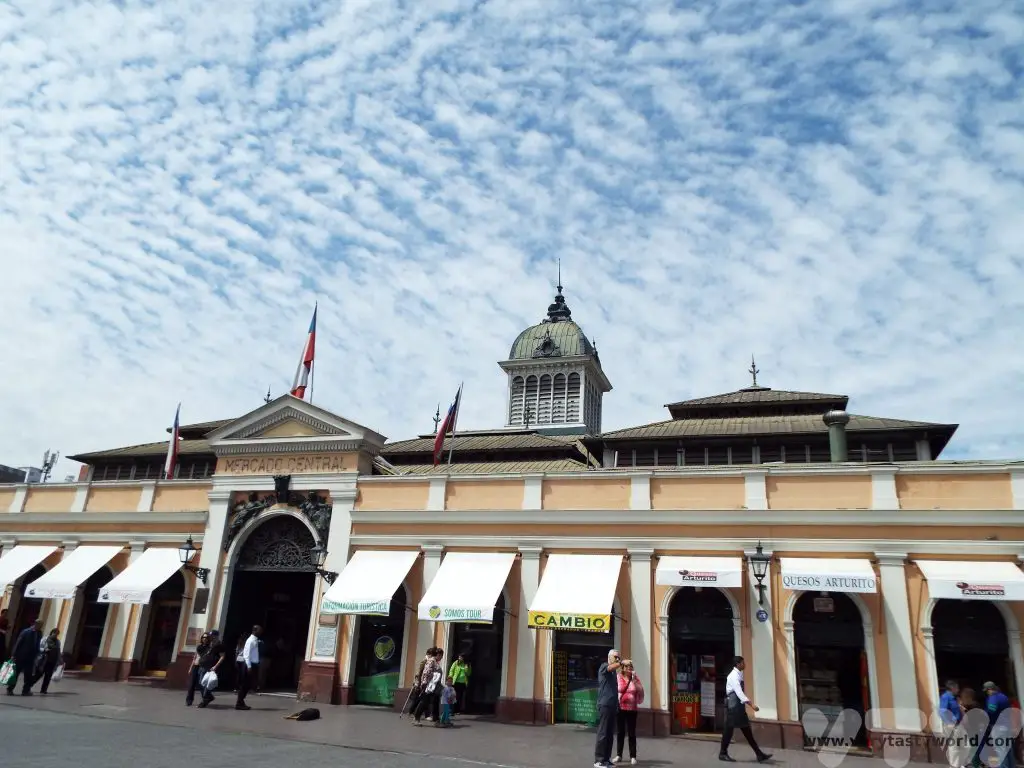
Inside the iron structure is both functional but highly decorative.
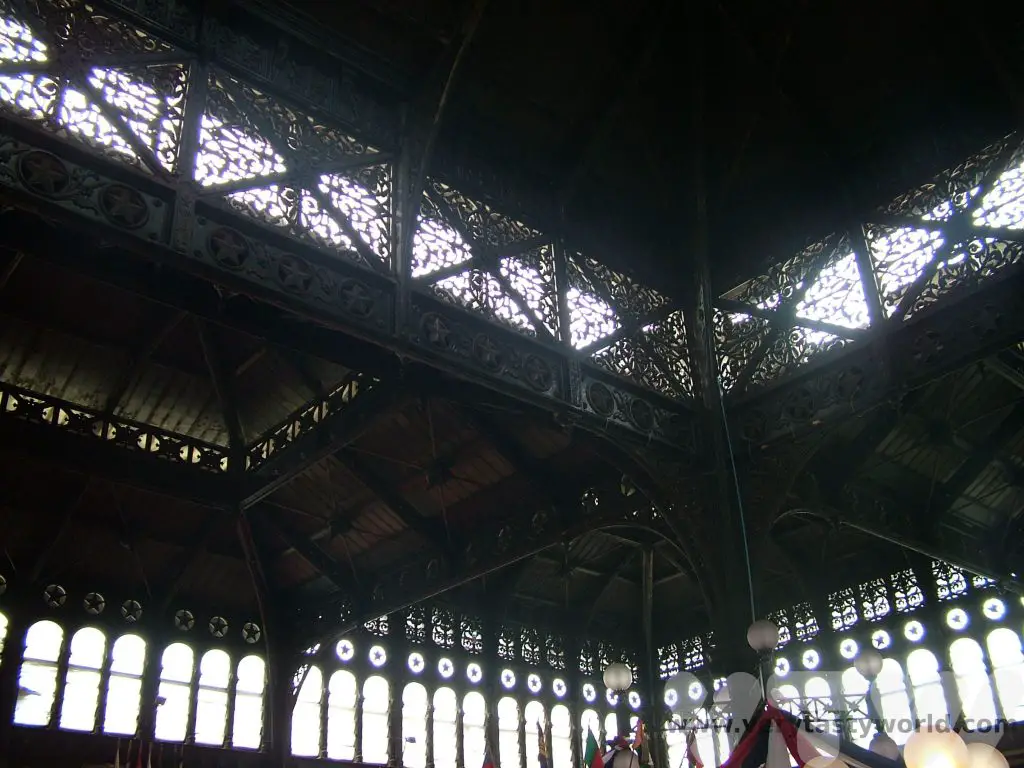
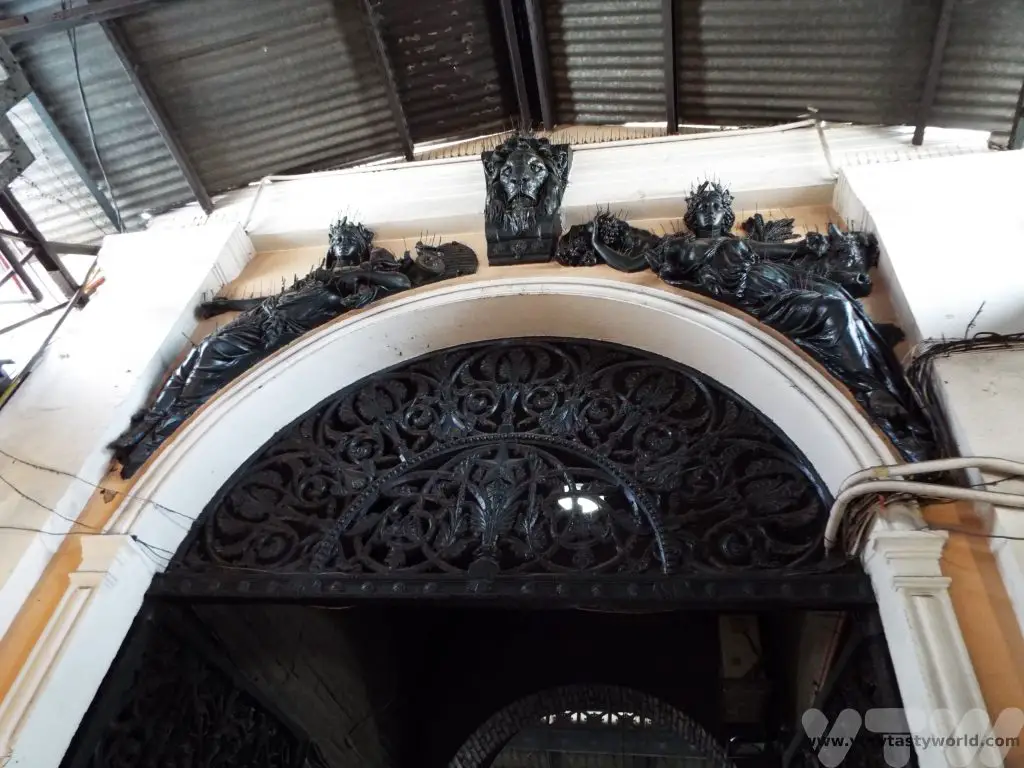
It is a working market and you can wander around the market stalls, perusing the plethora of pescatarian possibilities. As the market is known to be a tourist attraction, all the stall holders were happy to be getting on with their jobs and there were no issues with taking photos.
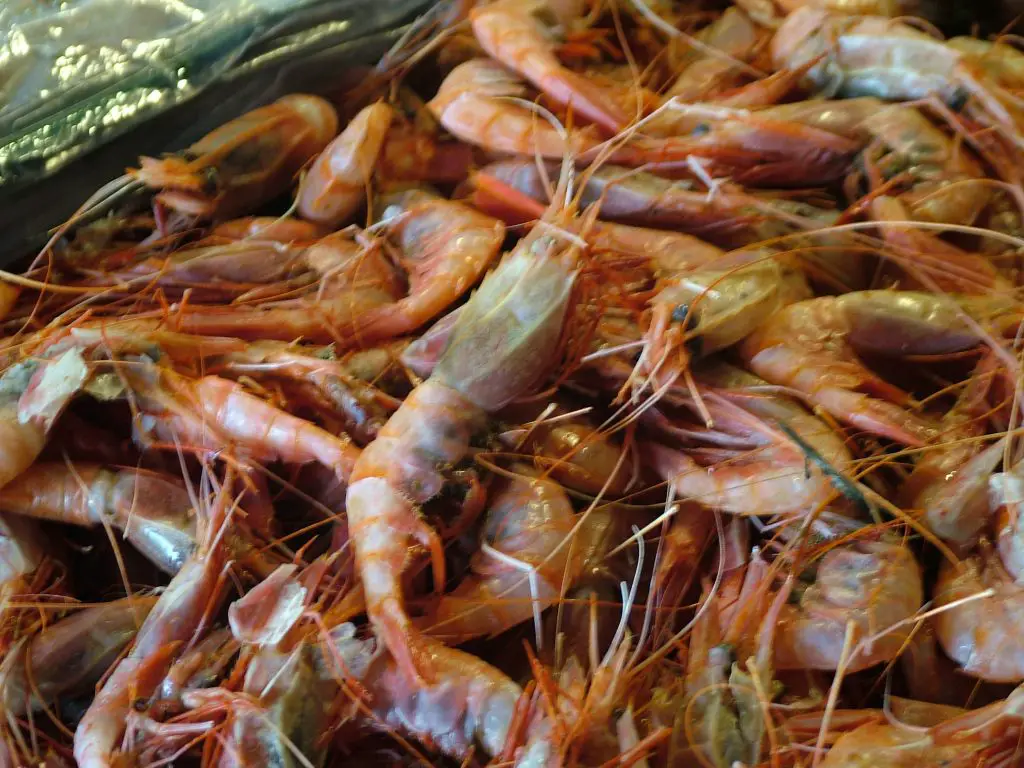
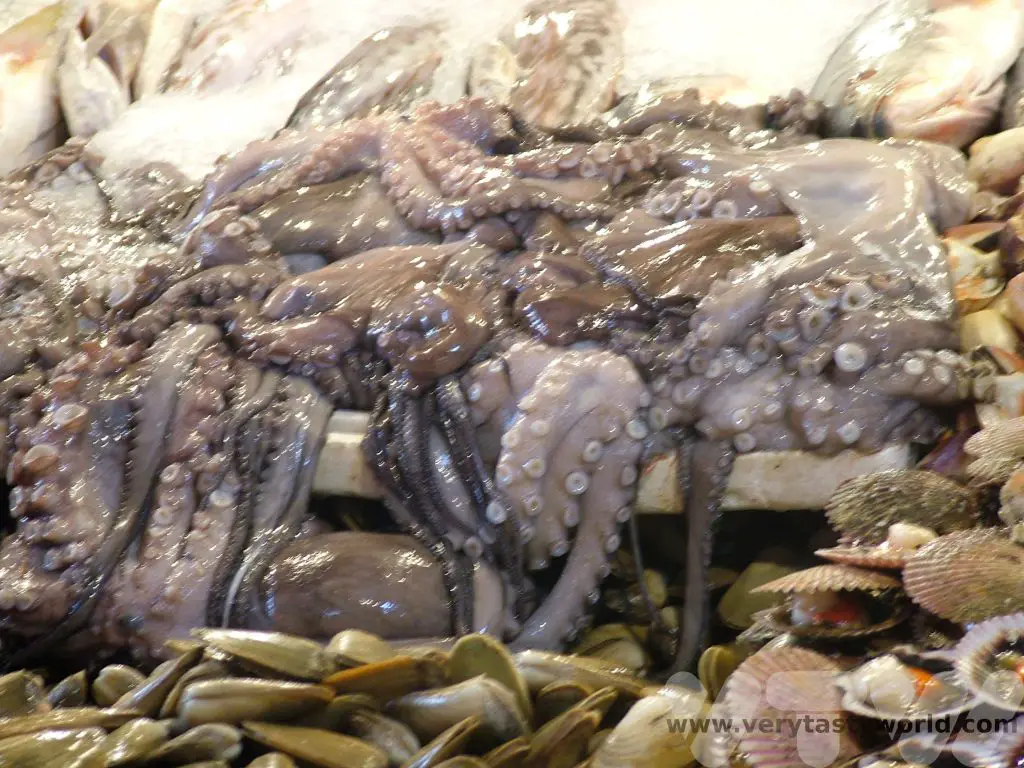
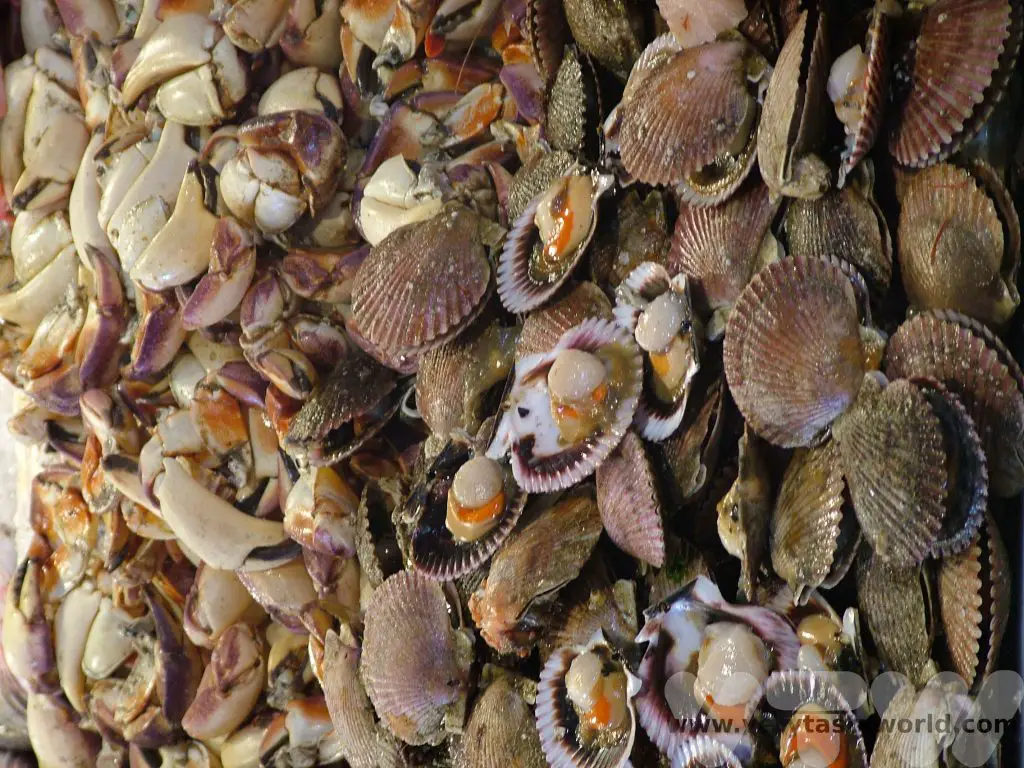
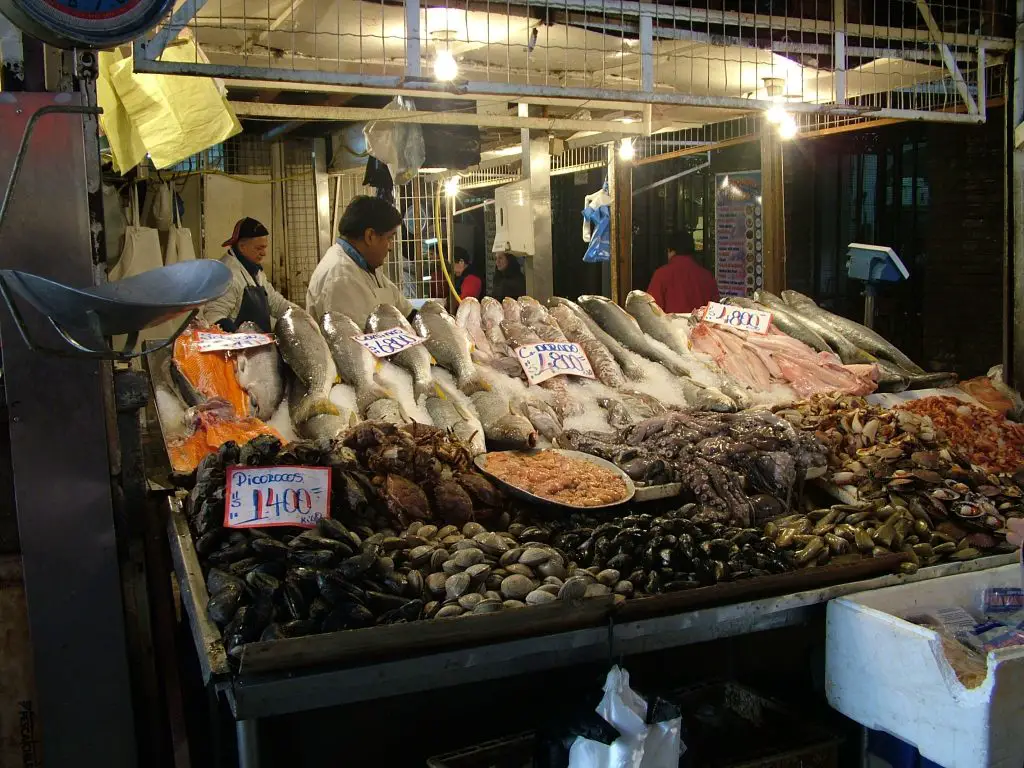
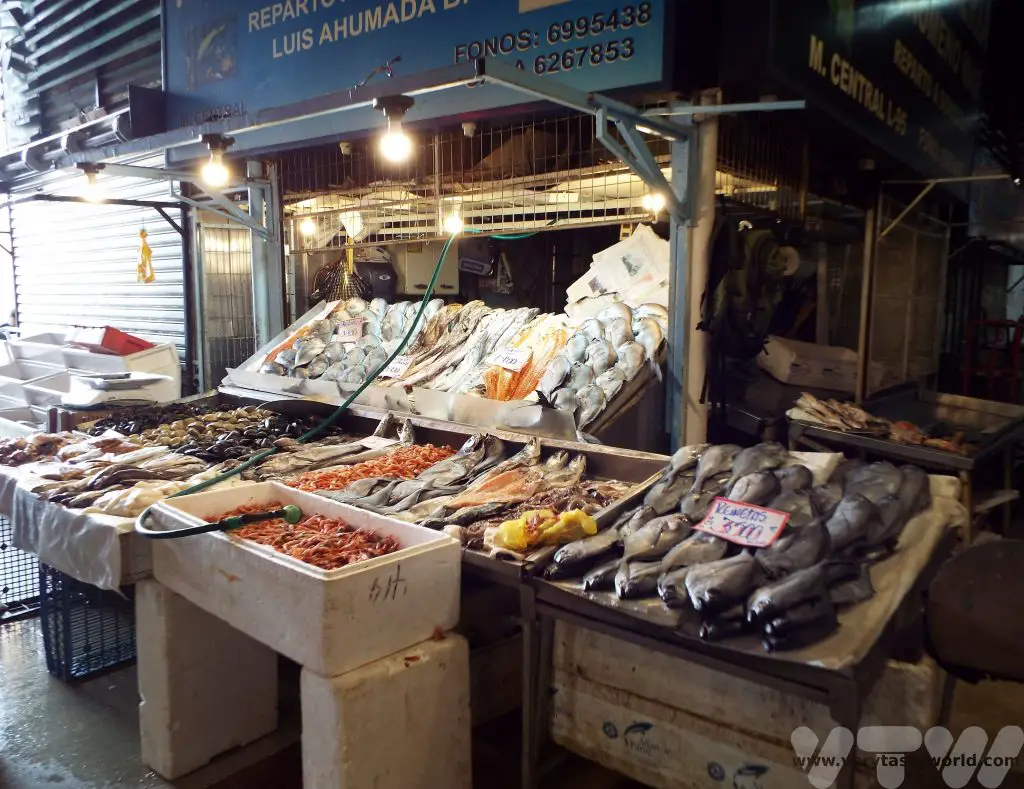
Eating At The Mercado Central de Santiago
There are all sorts of restaurants located inside the market in which you can indulge in a deliciously decadent seafood feast.
The biggest and most famous is Donde Agusto, right in the centre of the market, which was relatively expensive, crowded, had flamboyant waiters vying for business until they sat you down whereupon they ignored you in order to drum up more business and – when we visited – had irritating mariachi playing irritating guitars who expected us to pay for the pleasure of being irritated by them. Although it felt like a tourist trap the seafood was great – fruits de mer accompanied by scallops in a Roquefort sauce.
Much better is to wander around the perimeter of the market, seeking out the smaller restaurants. But you have to be a little careful.

You will find restaurateurs outside most establishments offering their cards and sometimes a variety of inducements. It’s quite relaxed though. No one hassles you too much and everyone understands the phrase, “maybe later.” These were just some of the cards we picked up as we wandered through the market and, in the interests of impartiality, we didn’t try any of these…
Some of the offers might include something like a free (minuscule) pisco sour or a dramatic flaming seafood feast offer. At El Rey De La Paila Marina, to be fair to the drama, the seafood feast which was comprised of such delights as crab, squid, prawns and scallops as well as a variety of fish, was undeniably delicious.
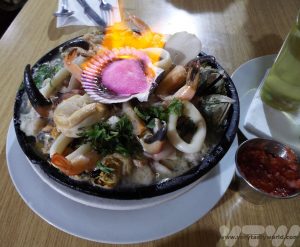
The Picoroco, Spanish for “a beak in the rock”, an apt title if ever there was one, were particularly good. These are giant barnacles which cling to the rocks on the shoreline. They do look a bit challenging, admittedly.
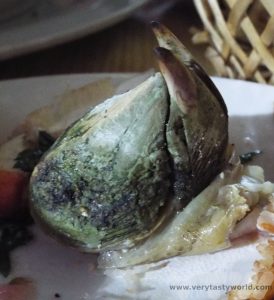
But, like many things that look a bit odd, once you get over the appearance, the taste was a revelation. They have a flavour that is very similar to crab but with a slightly chewier texture, and they were utterly delicious.
If you visit the Mercado Central de Santiago, the best advice is to seek out the smaller restaurants. Ostentation really is overrated. Our favourite restaurant was right on the edge of the market – the Donde Blanca. No English was spoken when we visited but our Spanish was just about good enough to get by. And when struggled with language the proprietor was delightful. We ordered cheviche, raw fish marinated in lime juice. The restaurant had a variety on offer, using different fish combinations, but sadly the ‘superior’ we wanted wasn’t available. The owner made a suggestion for an alternative but unfortunately we didn’t understand what a camarón was. So he trotted out to the market, picked a shrimp from one of the stalls, showed it to us, peeled it and ate it with a big grin on his face. Cheviche with shrimp, bread and salsa, all washed down with a bottle of crisp Chilean white wine turned out to be the perfect lunch.
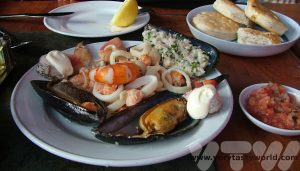
Of course, restaurants come and go and a good or bad experience somewhere isn’t necessarily an indicator of quality on a future visit.
Related Posts You May Enjoy

- Best Time To Visit Machu Picchu 2024 Update
- A 2 Week Patagonia Itinerary
- Day of the Dead in Campeche
- A Galapagos Land Based Itinerary
- RECIPE: How to Make Costa Rica’s Gallo Pinto
- A Tasty Puebla Food Tour
- Costa Rica Wildlife Sanctuary – Caño Negro
- Visit Torres del Paine National Park in Patagonia
- Atacama Desert Itinerary
